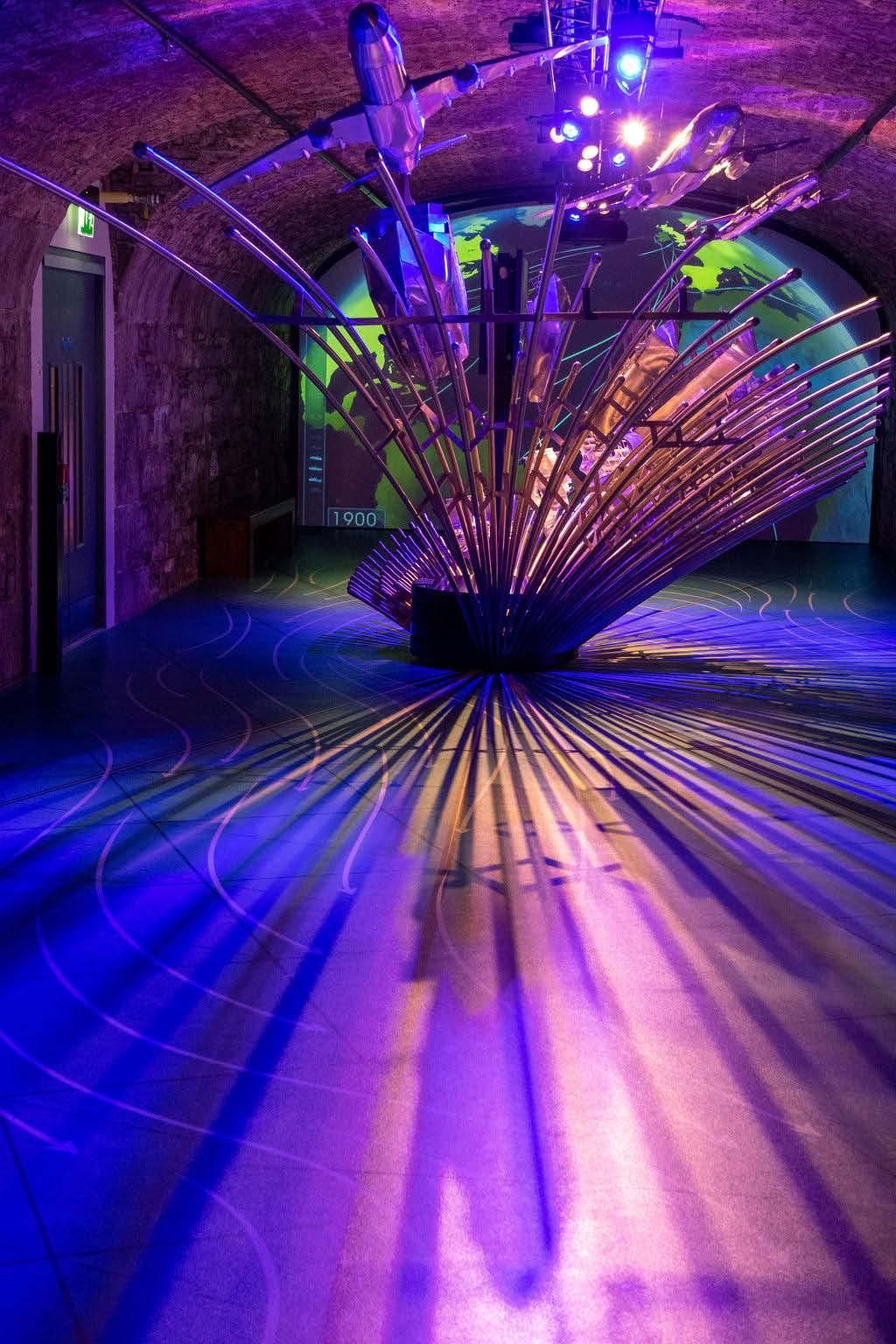

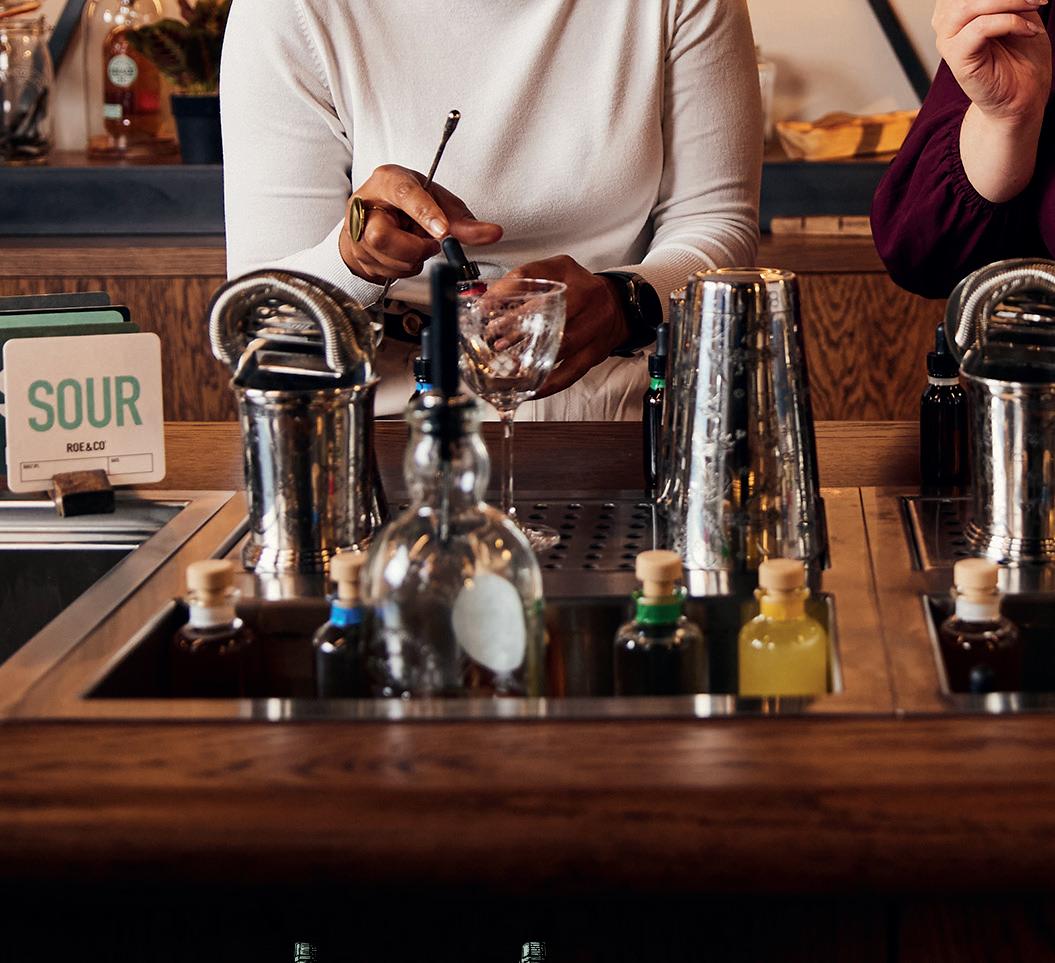




REIMAGINE IRISH WHISKEY WITH A COCKTAIL WORKSHOP AT ROE & CO DISTILLERY. BOOK YOUR EXPERIENCE NOW











REIMAGINE IRISH WHISKEY WITH A COCKTAIL WORKSHOP AT ROE & CO DISTILLERY. BOOK YOUR EXPERIENCE NOW



Welcome to our Annual ‘Go Wild Dublin’ edition, in which we showcase the bustling and vibrant city of Dublin and introduce you to the incredible sights, sounds and experiences that Ireland’s Capital City offers to national and international visitors.
We are also delighted to feature Mark O’Brien from the Abbey Theatre, as well as Michelle Maguire, Ireland’s Blue Book and the Novel Traveller: Michelle Walsh Jackson.
Dublin is a city with a rich history, a lively culture and a thriving community. From the city centre’s cobbled streets to the surrounding countryside’s rolling hills, Dublin has something for everyone’s Staycation.
In this issue of Go Wild Dublin, we will take you on a journey through the city, exploring its hidden gems and must-visit landmarks. From such famous venues that should be on your bucket-list as Guinness Storehouse, Epic Museum, Dublin Zoo, Malahide Castle and on to the charming neighbourhoods of Temple Bar and St. Stephen’s Green, we’ll show you the best of Dublin’s offerings.
But Dublin is more than just a city - it’s a county with diverse attractions and activities. Whether you’re interested in hiking, biking, exploring quaint seaside towns or visiting historic castles and gardens, County Dublin has it all.
So, sit back, relax and let us take you on a journey through Ireland’s capital. We hope you enjoy the trip
Publisher
Go Wild Magazine titles

Email: bobby@gowildmagazine.com
Tel: 087 446 7007
JULY - Go Wild Staycation Ireland
Get ready for summer with our focus on the best places to discover across Ireland for your holiday
AUGUST - Go Wild Northern Ireland
Showcasing the best that Northern Ireland has to offer for unforgettable holiday memories
SEPTEMBER - Go Wild Irish Spirits
Raise a glass to our 4th Annual Go Wild Whiskey & Gin magazine, shoiwcasing the best that Ireland has to offer
OCTOBER - Go Wild Christmas
Our family favourite, the Annual Go Wild Christmas title featuring everything to make your yuletide the best yet
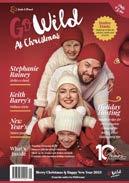
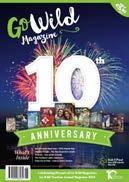

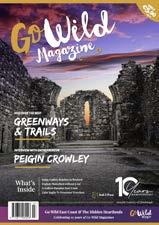
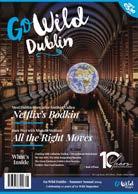

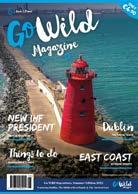
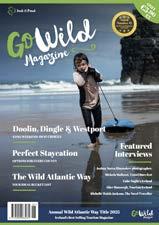
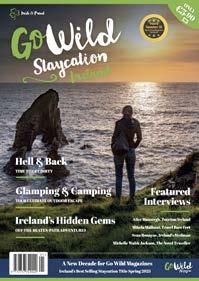


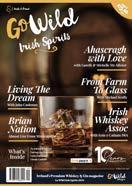




P6: Discover Dublin Zoo
P12: Interview with Catherine Toolan, CEO of Guinness Storehouse
P16: Ireland in Fashion
P18: Meet Mark O’Brien from The Abbey Theatre
P20: Things to see and do in Dublin’s City Centre
P22: Chatting with Michelle Maguire, Ireland’s Blue Book
P24: The Essential Guide to Dublin
P26: The top ten Dublin Adventures for you to enjoy
P28: Seven Surprising & Unique Experiences in Dublin
P30: Christine Murphy Urban Aran
P32: Your Ultimate Dublin Bucket List
P34: Ten Famous Dubliners that you need to know
P36: The Novel Traveller Michelle Walsh Jackson
P38: Family Fun things to see and do in Dublin
P42: Eight great places to discover on your staycation
Publisher, MD & Advertising Chief: Bobby Power bobby@gowildmagazine.com
Head of Accounts & Director: Cleo Power cleo@gowildmagazine.com
Creative Director: Dave Curtin dave@brainstorm.ie www.brainstorm.ie
Editorial & AD Design: Lynne Clark
P44: An interview with Alice Mansergh, CEO, Tourism Ireland
P46: A Taste of Whiskey
P48: 11 Free Museums to visit during your holiday
P50: Discover the seven iconic bridges in Dublin
P52: Triathlon Ireland this summer
P54: LGBTQ+ Friendly Dublin
P60: Discover Dublin’s best beaches for lazy summer days
P62: The top free things to see and do in Dublin
P66: Chatting with Bare Feet TV star, Mikela Mallozzi
P68: Lesser-known hidden attractions in Dublin
P70: Discover a Viking Journey through Dublin
P72: Discover Dun Laoighaire
P74: Discover Celtic Craftsmanship that’s alive and well in Dublin
P80: Explore three stunning mountain walks
Copy Editor: Keith Nicol
IT: Steven Hall
Contributors
Editorials: Meg Walker, Keith Nicol Michelle Walsh Jackson


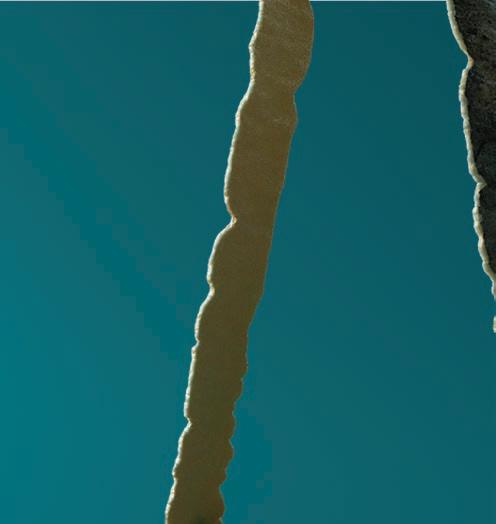


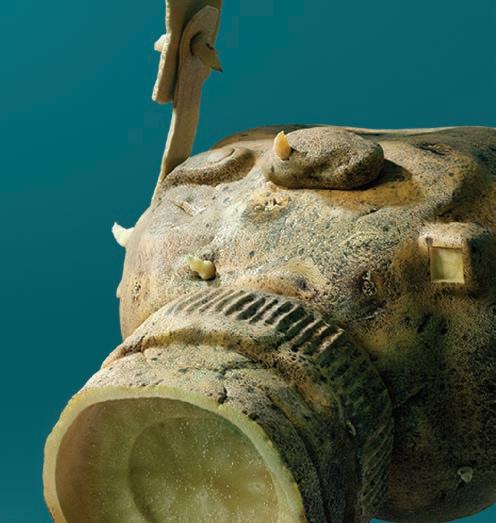

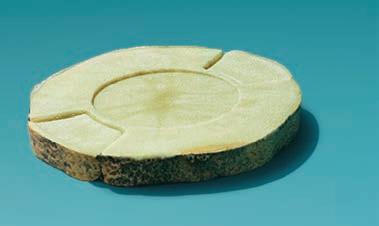



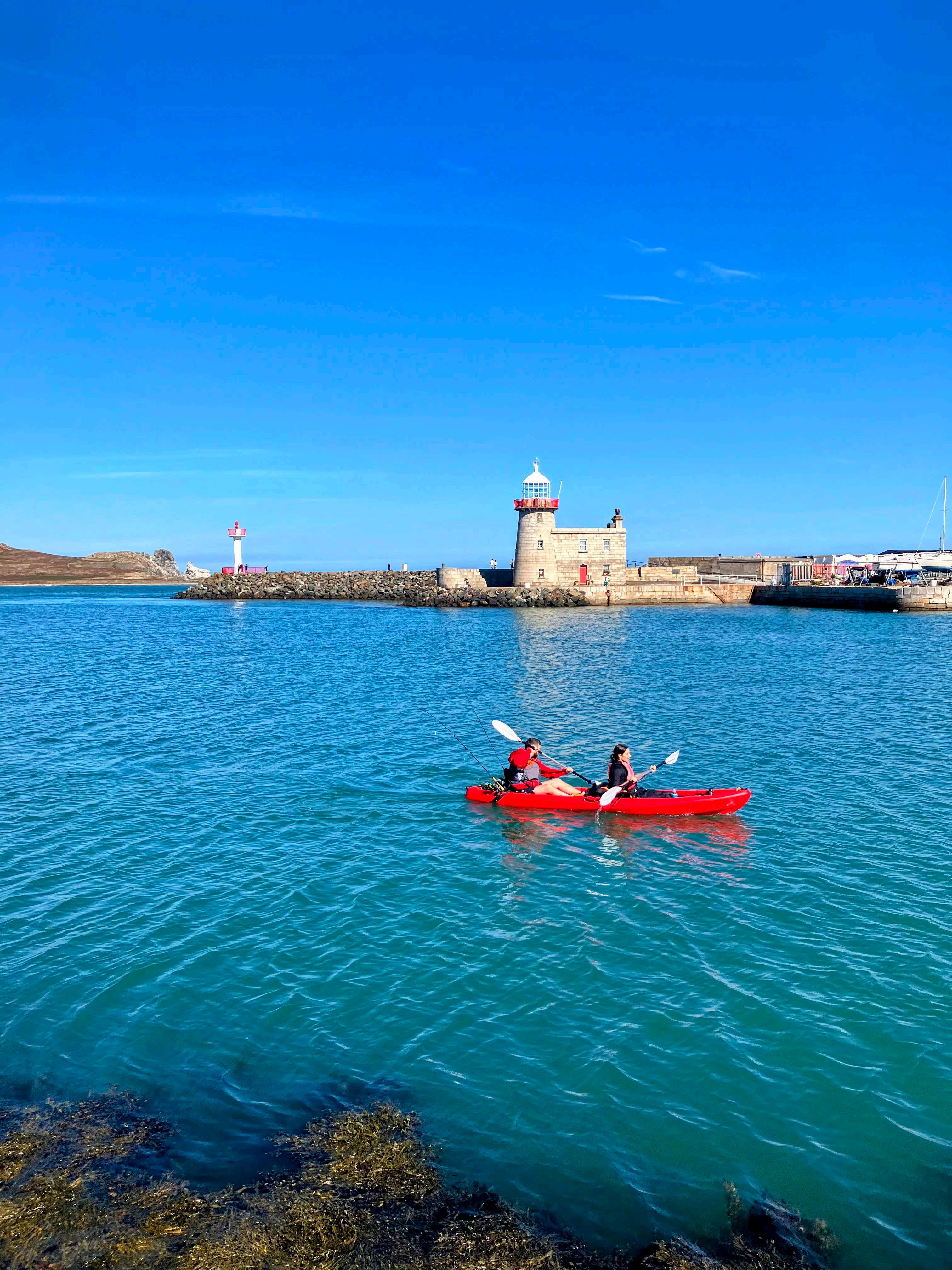


Avisit to Dublin Zoo is the ultimate wild adventure for all ages, whether for tourists discovering Dublin for the first time or locals looking to rekindle the magic of a childhood day out. Nestled in the heart of Phoenix Park, just a short walk from Heuston Station, Dublin Zoo offers visitors the chance to spend the day surrounded by over 400-living animals –and this summer, some of the world’s most ancient creatures too.
Until September, Dublin Zoo invites visitors to experience Zoorassic Trail – a prehistoric adventure featuring more than 40-life-sized dinosaurs. Created in collaboration with ‘Dino Don’ Lessem, the palaeontologist who advised on Spielberg’s original Jurassic Park film, this blockbuster exhibition brings visitors face-to-face with scientifically accurate, life-sized, moving dinosaurs. As Dino Don himself puts it:

“We don’t do Hollywood dinosaurs… we do real dinosaurs!”
These awe-inspiring giants have captured the imaginations of visitors of all ages, highlighting the connection between Earth’s prehistoric past and the endangered species that Dublin Zoo works to protect today. Visitors can even spot the similarities between the towering Brachiosaurus—a long-necked herbivore that once grazed treetops—and the Rothschild’s giraffes that roam the African Savanna habitat at the zoo today.
Spanning 28-hectares, Dublin Zoo is more than just a day out. It is one of Ireland’s leading conservation organisations, dedicated to biodiversity, wildlife protection, and world-class animal care. From playful red pandas to the majestic Asian elephant herd, there is something to amaze around every corner.
Dublin Zoo is also easily accessible, with the Red Luas line, several Dublin Bus routes, and the dedicated 99 Dublin Bus to the Phoenix Park Visitor Centre all stopping nearby, meaning visitors can reach the zoo without the need to bring the car. Offering two unforgettable experiences in one ticket, Zoorassic Trail is included in general admission, making it an unbeatable day out for families on a budget.
Visitors are encouraged to bring sun protection, comfortable footwear and a camera, as most people spend around four-hours exploring the zoo’s habitats, playgrounds and exhibits – with plenty of amenities and opportunities to grab refreshments along the way.
Among the highlights of Zoorassic Trail are a Triceratops the size of an ice cream van, a towering 65-foot Brachiosaurus, and the mighty 40-foot T-Rex, making this exhibition a true showstopper for dinosaur fans of all ages. Whether visiting from near or far, Dublin Zoo offers a day of discovery, adventure and lasting memories. With two-worlds to explore in one unforgettable visit, there’s never been a better time to Go Wild in Dublin…





























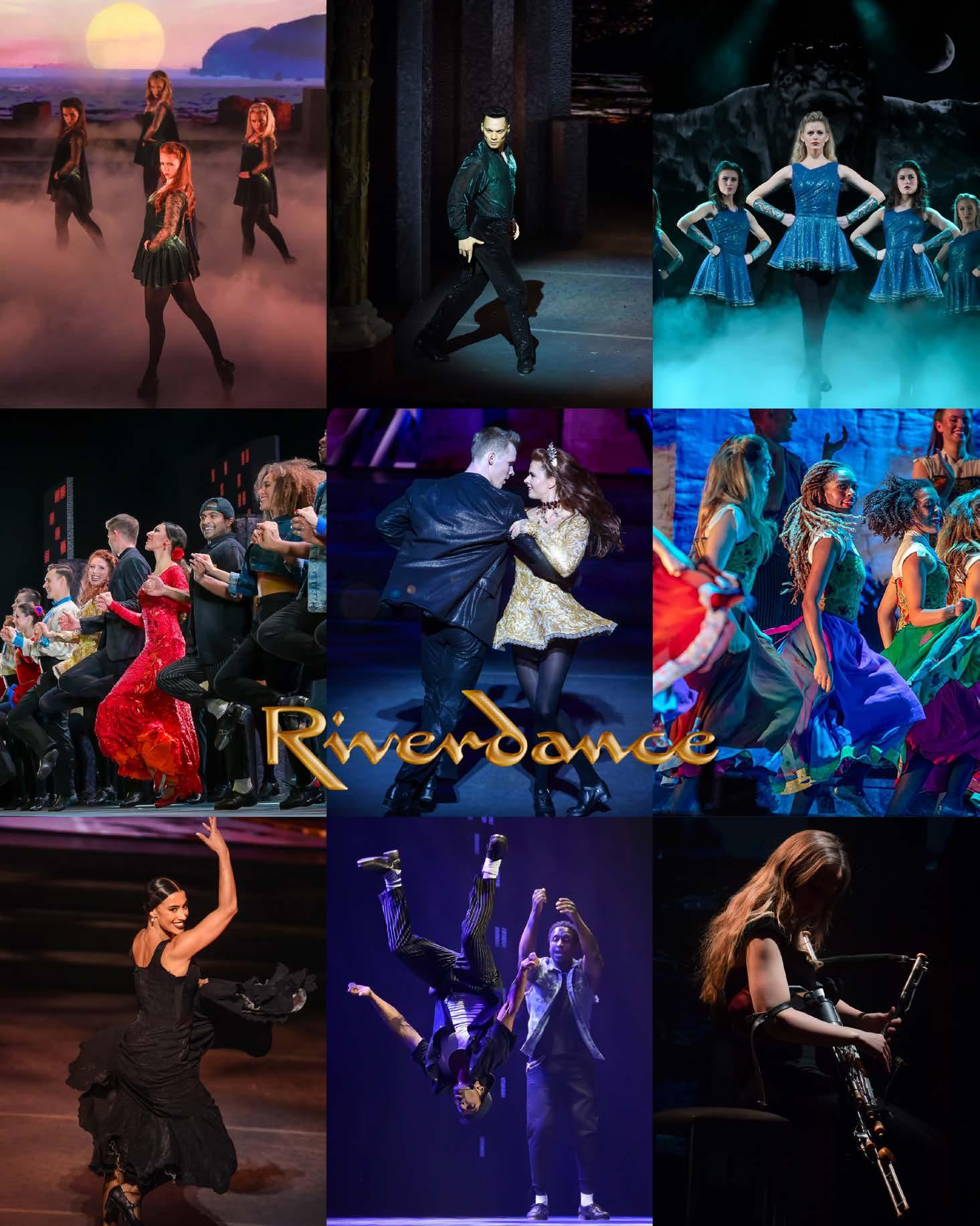

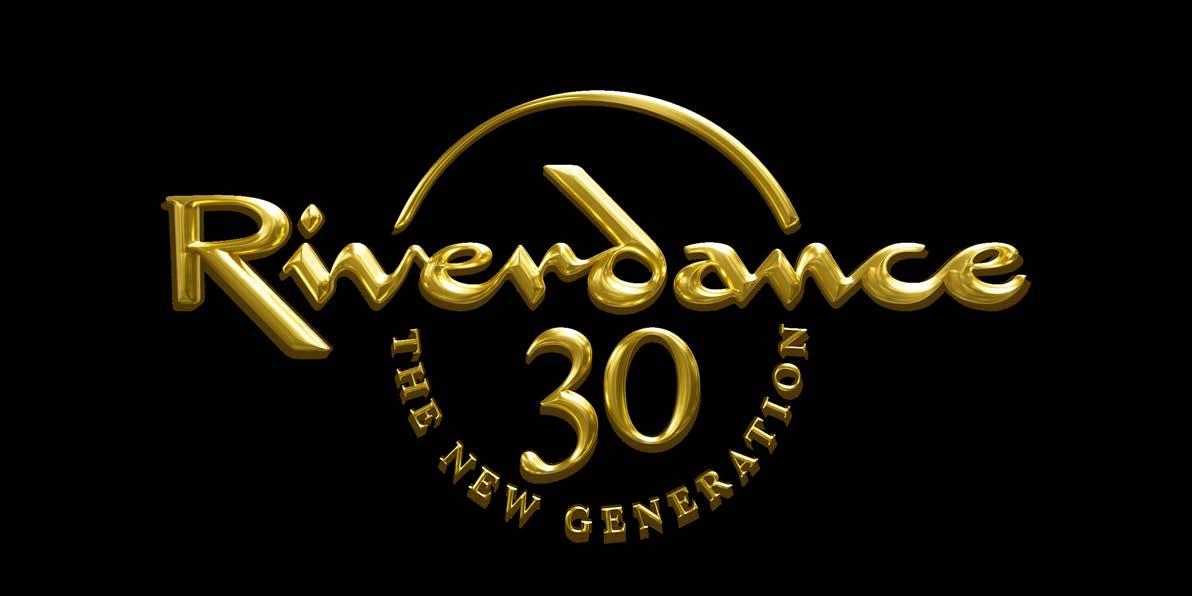
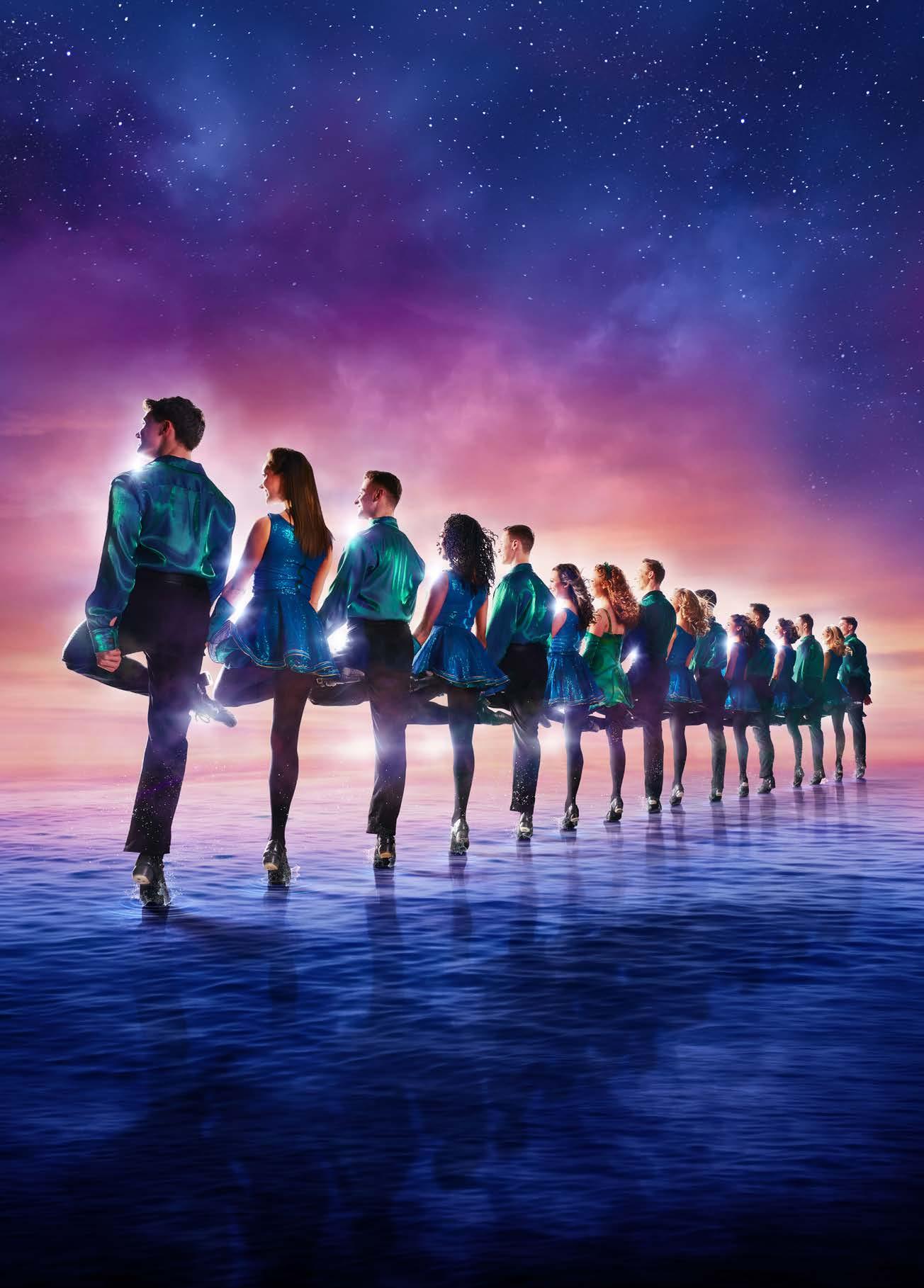

Nestled in the heart of Limerick, the Texas Steakout stands as a culinary landmark, a testament to the enduring charm and excellence in dining. Since its inception in 1988, this storied establishment has carved out a reputation not just for its high-quality food but also for an exceptional dining experience that locals and visitors alike cherish.
What sets the Texas Steakout apart is its remarkable setting. Located underground, the restaurant o ers a unique ambiance, combining historical elegance with modern sophistication. The dining area, divided by hand-crafted stone walls dating back to the 18th century, exudes an old-world charm that perfectly complements the contemporary comforts of leather seating and modern lighting. This fusion creates a warm, inviting atmosphere that enhances every meal.
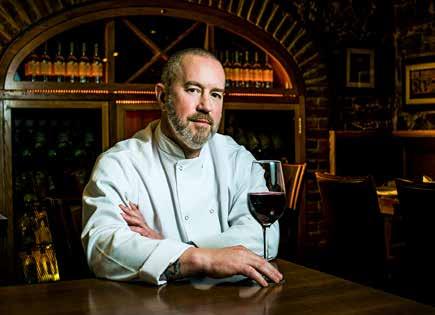
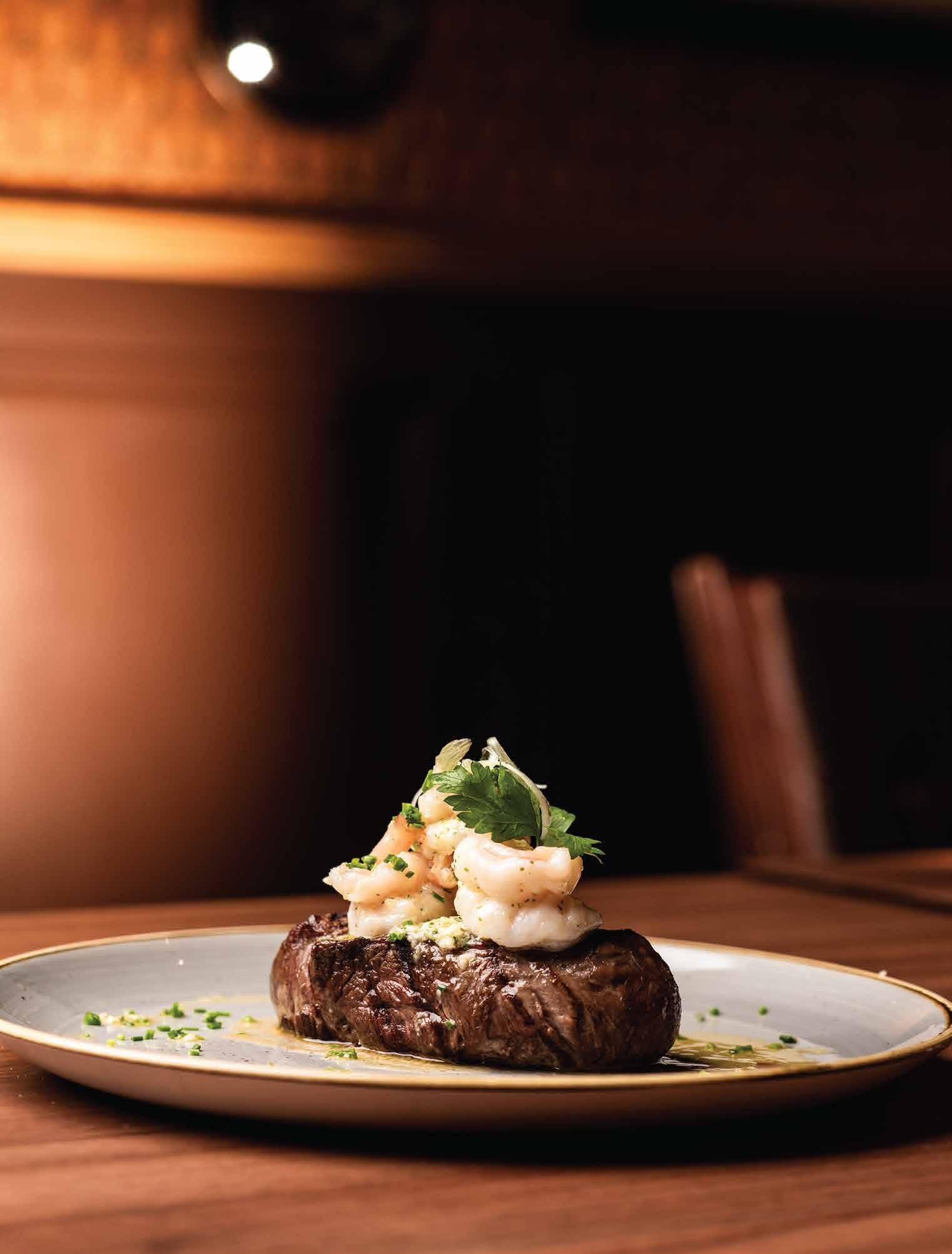
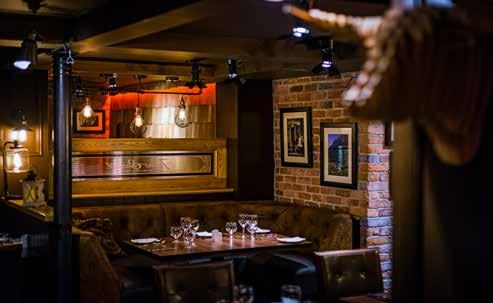
For nearly 36 years, Chef Stuart Ross has been the culinary heart of Texas Steakout, guiding the restaurant from its inception in 1988 to its celebrated status today. As Head Chef since day one, Stuart brings a rare continuity and mastery to the kitchen—his fingerprints are on every flame-grilled steak and carefully crafted sauce that leaves the pass.
What sets Stuart apart isn’t just his skill, but his unwavering commitment to quality and tradition. He leads a kitchen team that blends time-honored techniques with fresh local ingredients, ensuring that every plate upholds the Steakout's iconic reputation.
From Surf & Turf classics to seasonal specialties, Stuart’s menu reflects decades of refinement and passion. For guests, dining at Texas Steakout is more than a meal—it’s experiencing the craftsmanship of a chef whose legacy is as rich as the flavors he creates.


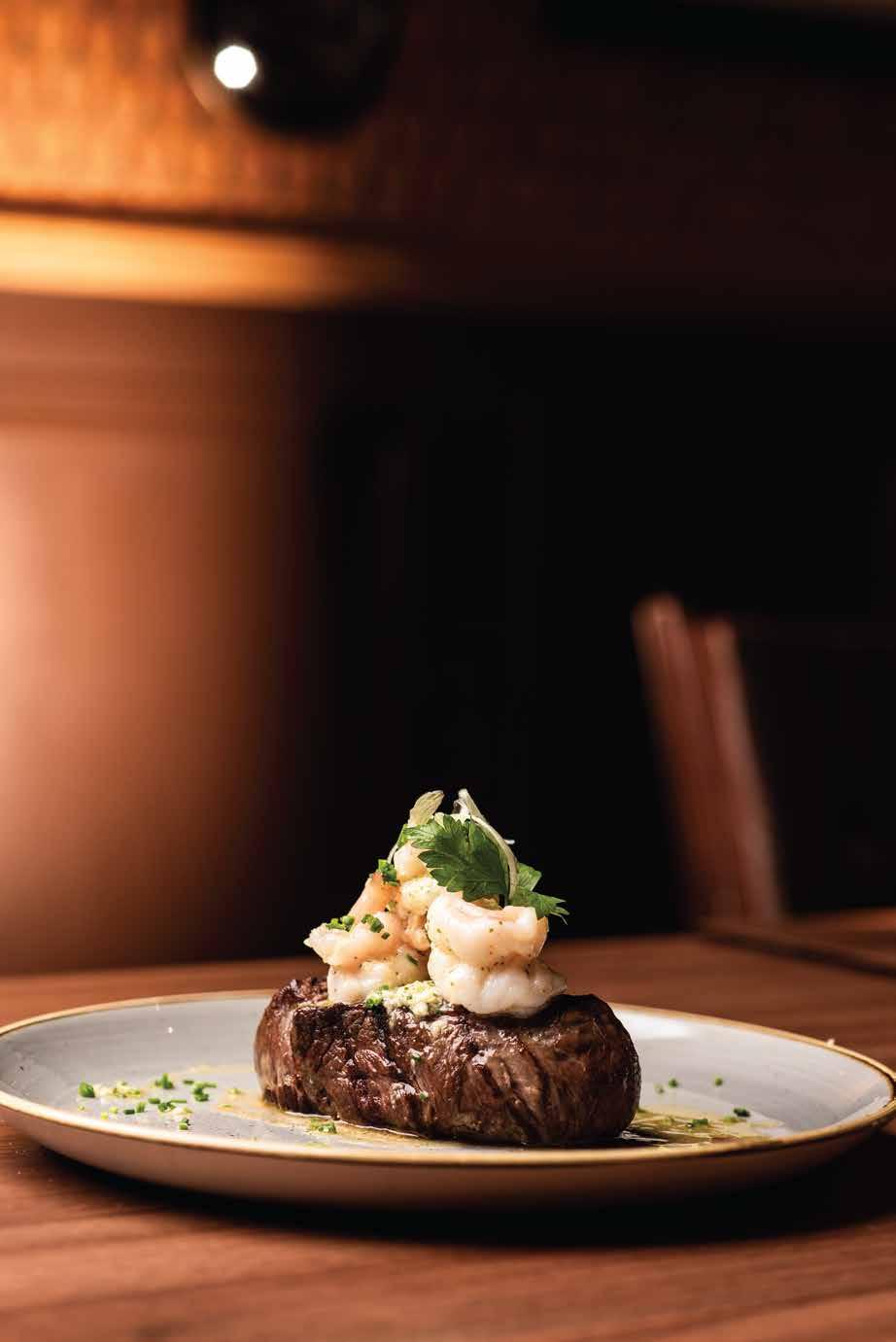
Meg Walker catches up with Catherine Toolan, MD of Diageo Irish Brand Homes, to find out what’s in store this season at the Guinness Storehouse, Guinness Open Gate Brewery, Roe & Co Whiskey Distillery, and the Smithwick’s Experience Kilkenny, and the power of a warm Irish welcome.

Since opening in December 2000, the Guinness Storehouse has welcomed over 20 million visitors. This year marks the attraction’s 25th anniversary, and ‘Alive at 25’ is a year-long programme created to bring dynamic experiences to life through culture at the Home of Guinness. During the St. Patrick’s Festival in March, Seanchoíche hosted a night of storytelling and contemporary all-female trad group BIIRD performed. We also worked with artist Leah Hewson, who created a vibrant installation for the Storehouse. We have an exciting summer programme lined up, working with many partners in the local community; so, watch this space.
Sporting events have been a huge boost for Dublin. Events like the Aer Lingus College Football Classic have brought a new wave of visitors – we’ll be hosting our own celebrations this August. We also recently launched our first ever match day experience in Gravity Bar as part of the global Guinness partnership with the Premier League and have lots more sporting events like that planned.
There’s so much to discover at all our Irish Brand Homes attractions this summer. At Roe & Co Whiskey Distillery in Dublin, we’re excited to bring back the summer garden experience featuring local food collaborators, cocktail making and dining outside. In Kilkenny, the Smithwick’s Experience – home to Ireland’s oldest ale, we’ll have over 30 homegrown artists bring alive our cosy, outdoor bar: Barrel Yard on weekends.

Ireland is renowned for its exceptional hospitality, vibrant culture and landscapes. Seven out of ten overseas holidaymakers are interested in visiting Ireland. To remain competitive as a world-class destination, it’s crucial we continue to enhance our visitor experiences and promote value for money. We’re seeing the tourism landscape being reshaped by Gen Z and Gen Y visitors, who crave spontaneity, adventure and experiences that feel unique and authentic. We’re seeing that shift in people looking for cool things to do,


planning their holidays around concerts, live performances and sporting events. Underpinning those trends is a strong desire for belonging and community. And so, at all Irish Brand Homes destinations, we’re dialling up experiences where people are more involved. We’ve launched a midweek experience in the Storehouse that’s fully guided, giving visitors the benefit of a brand ambassador and beer specialist sharing stories about our history and innovation before they get to pour their own pint. On the third floor, we introduced a new cinematic journey in our immersive cinema room, which brings to life the timeline of Guinness’s most iconic advertisements. STOUTie continues to be hugely popular, where guests are served a pint of Guinness or Guinness 0.0 with their selfie printed on the head, which adds that sense of personalisation. It’s really important that we make sure to extend that warm welcome we’re known for.
All the hospitality spaces in the Storehouse have been upgraded this year. Food is such an important part of being able to enjoy a pint of Guinness or Guinness 0.0, and we want to celebrate the amazing ingredients in our culinary heritage. Arthur’s Bar offers authentic bar food, 1837 Bar & Brasserie showcases seafood and grilled meats, while our new Market Street Restaurant, formerly Brewer’s Dining Hall, is about blending Irish ingredients with global flavours in a casual setting.

All four Irish Brand Homes are now accredited by autism charity AsIAm. The Guinness Open Gate Brewery is the first tap room in Ireland to be accredited by AsIAm. On the first Wednesday of every month, we host our sensory-friendly hours at the Storehouse for neurodiverse visitors, and for World Autism Day this year, we opened our doors for a full-day sensory experience with a harpist performing at the gates. We’re looking at curating other ways to make our Irish Brand Homes experiences more enjoyable for neurodivergent people, while exploring other areas where we

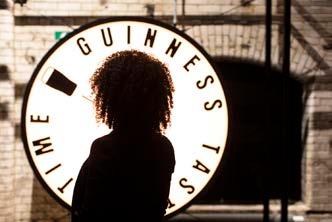
can work to bring our experience to life for everybody and have an inclusive environment for all visitors.
Holidays are really important for me to recharge my batteries, and getting away provides an opportunity to experience other cultures. I have a staycation planned this year, staying in my native Sligo and seeing other parts of Ireland, too. I was really lucky earlier this year to visit Kenya, which has been on my bucket list. I was struck by the incredible conservancies, where endangered species are protected – I got to see the last two northern white rhinos in the world and the care they’re given. I’m currently training for a Camino Walk this year in Spain so I’ve been walking everywhere – the Ballycotton Cliff Walk in Cork, Killarney National Park in Kerry, the Ladies Brae in Sligo, the Howth Summit in Dublin. It’s given me this huge sense of growing


curiosity and love for all the walks in Ireland, whether it be a hike, Greenway or trail. There’s nothing nicer than stopping off for a sandwich and coffee in a gorgeous pub or café at the end of a wonderful trek.
At home, I’m looking forward to catching a few festivals and cultural events in Dublin this summer, like The Liberties Festival, July 21-27; Flavours of Fingal, July 5-6; and plays at the Abbey Theatre, like The Cave, a new Kevin Barry play running June 6 to July 18.
Discover more at: diageo.com guinnessstorehouse.com guinnessopengate.com roeandcowhiskey.com smithwicksexperience.com
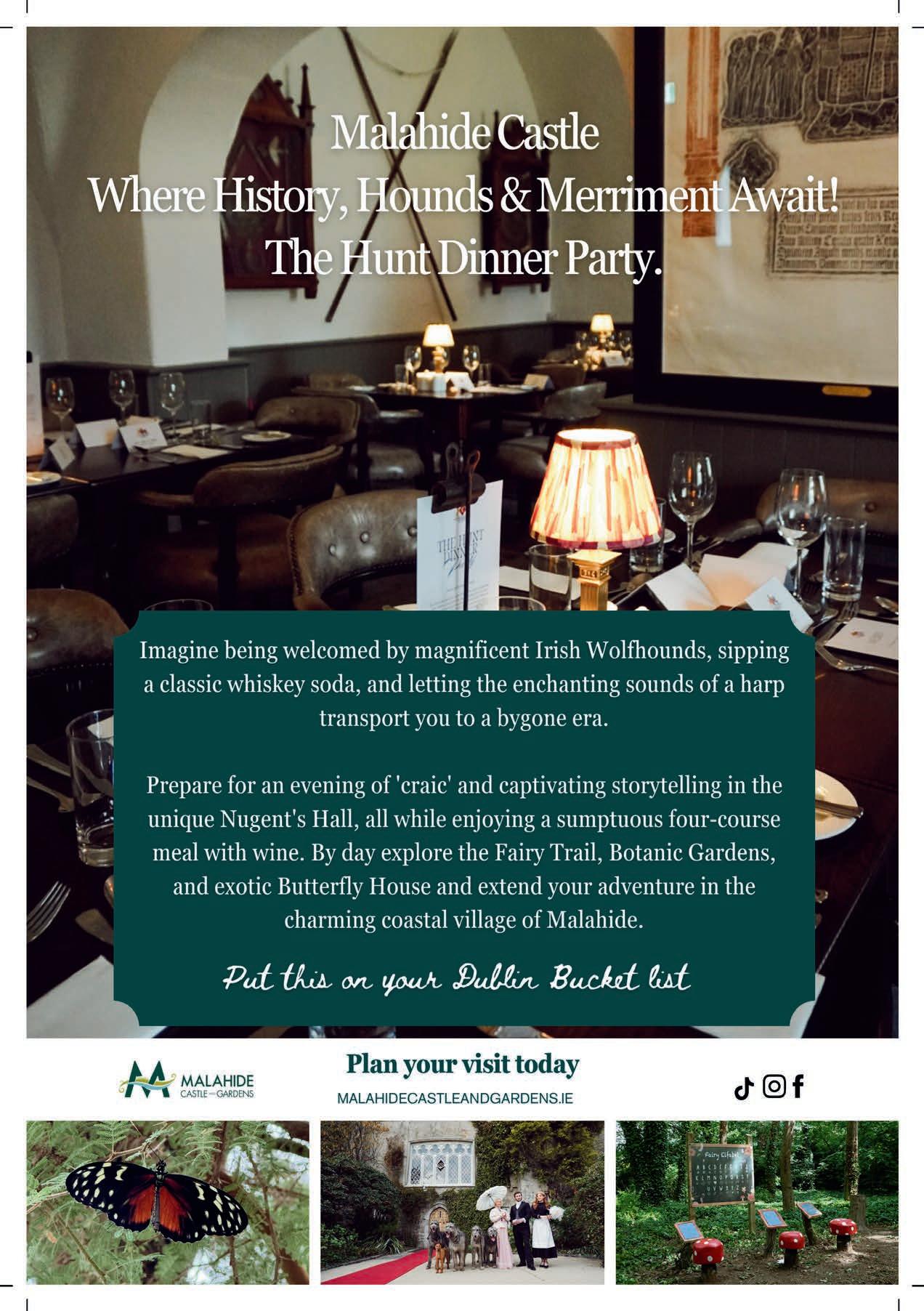


When it comes to fashion in 2025, nobody does it like the Irish. Here’s why Ireland is where it’s at, from big-name designs to small independent labels
Culturally, it’s hard to ignore Ireland right now. From literature and film, music and television, the Irish are taking the world by storm. In 2024, the New York Times declared that popular culture was being infused with “big Irish energy” and now, it’s the turn of Irish fashion, with the spotlight shining on a wave of boundary-pushing, cutting-edge designers, emerging from the Emerald Isle.
Big names such as Dublin-born Seán McGirr, who is currently the creative director of Alexander McQueen and Jonathan Anderson, who has recently stepped down as the creative director of Spanish luxury fashion house Loewe after 11 years. Anderson, from Magherafelt in County Derry/Londonderry, is also the founder of his own label, JW Anderson, has just been confirmed as the new artistic director of Dior menswear. They are but two of the most high-profile figures in the industry.
At London and Paris Fashion Week, Irish designers, including Simone Rocha, Roisin Pierce and Sinead O’Dwyer, all commanded attention, further amplifying the already unprecedented buzz around Irish style. Barry Keoghan, Andrew Scott and Samantha Barry were among the Irish faces on the red carpet at the Met Gala this year, following on the strong
showing from the 2024 event, that featured Zendaya wearing a blooming headpiece by Irish milliner Philip Treacy, Eve Hewson in Simone Rocha and Lana del Rey in Alexander McQueen by Seán McGirr
For many, this flourishing of Irish fashion and design is part of the importance placed on creativity in Ireland, as well as our rich artistic and cultural heritage. Indeed, part of what unites both established Irish design labels and emerging Irish designers is a respect and love for the island’s craft and artisanal traditions. Whether it’s Roisin Pierce’s exquisite lace and crochet creations or Paul Costelloe’s use of tweed from Magee of Ireland, designers from the island of Ireland are filtering traditions through a very modern lens, giving rise to a fresh, distinctly Irish aesthetic.
According to Anna Guerin of the modern tailoring label The Landskein, which uses tweeds from fifth-generation weavers in County Donegal, “Irish designers are making waves because there is a global desire for authenticity, craftsmanship, and sustainability – all values deeply embedded in Irish design. We are a nation of storytellers, and our fashion is an extension of that, weaving heritage into contemporary expressions.”
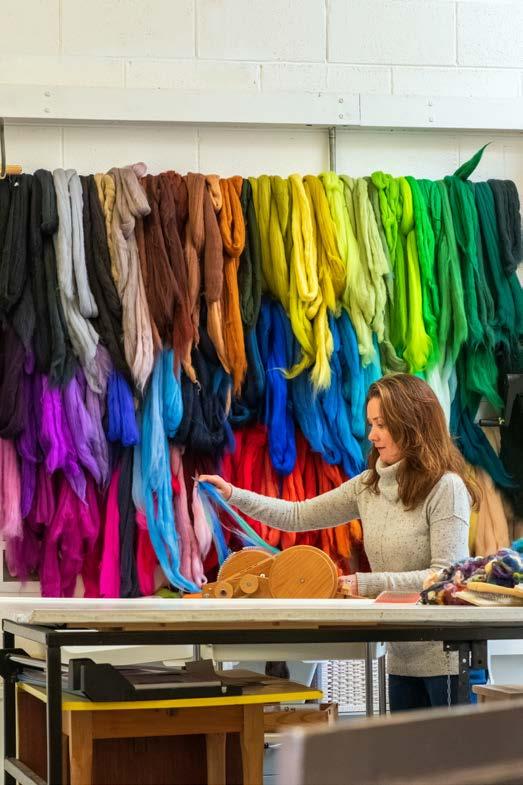
The meshing of the past and present can be seen in several slow-fashion-focused design companies in Ireland, one of which is The Tweed Project, creating handmade, one-off pieces in Irish tweeds and linens with a clean contemporary edge. For co-founder Aoibheann McNamara, the heritage of Irish craft is key to their unique vision. “I grew up in Donegal surrounded by weavers who made handcrafted Aran jumpers from local tweed,” she explains. “My passion for authentic pieces stemmed from there. Slow fashion is at the heart of the brand – we adore indigenous Irish materials, and each garment is crafted with care and attention to detail.”
Triona Donegal is another brand that brings a contemporary look to the age-old technique of handweaving. Located in Ardara in County Donegal, long associated with Donegal Tweeds, the label was founded on the “principles of resilience and love for craftsmanship”.
For Anna Guerin of The Landskein, Irish textiles stand apart because, in an era of mass production, they “carry the essence of the landscape, the hand of the maker, and the legacy of Irish craftsmanship”. And, as she notes in fashion in general, “There’s a shift towards valuing pieces with history, texture and a real sense of place.”


design on the island of Ireland is, of course, ateliers, mills and workshops where true craftsmanship is still alive,” advises Anna. “Visit our coastal towns, where weavers create some of the world’s most exquisite wools, and explore independent designers who are redefining Irish fashion for a modern audience. And, of course, embrace

selected six labels for you to try, with heritage, sustainability and craftsmanship at their core…
Famous around the world, Irish linen has been at the heart of Ireland’s textile industry for centuries, Kindred of Ireland brings a contemporary edge to classic linen looks - visit their flagship retail store in Belfast, Northern Ireland.
Reviving the manufacturing of jeans in Ireland, Dublin-based Native uses vintage machines to create quality denims with the emphasis on sustainability and slow fashion.

Using 20-skilled knotters working from home, Hope Macauley, who hails from the picturesque Northern Irish seaside town of Portstewart, is “helping to keep the traditional cottage industry alive”. Her bright, “dopamine-hit’ knitwear creations have attracted celebrities including Gigi Hadid, Black Pink’s Lisa and Naomi Osaka.

Ireland’s first B Corp fashion brand, Aoife McNamara creates modern heritage pieces “deeply rooted in Irish traditions”. Expect long wool coats and reimagined classics in the brand’s flagship store - a little pink thatched Cottage, in Adare, Co. Limerick.
Looking for a Donegal Aran sweater? You’ll find it here, alongside moss green linen shirts, crios belts (a traditional multicoloured woollen belt) and Irish sheepskin slippers. You can explore the brand’s latest designs in the illustrious surroundings of the Westbury Mall, just off Dublin’s bustling shopping area, Grafton Street.
The heritage is right there in the title; Magee is a fifth-generation Irish family business specialising in tweed – among the fans of the Donegal-based brand is Sarah Jessica Parker.

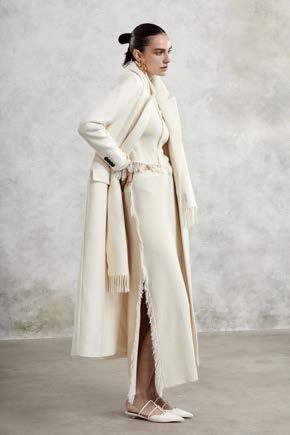

Meg Walker catches up with Mark O’Brien, Executive Director and Co-Director of the Abbey Theatre in Dublin, to get his insights on the future of the National Theatre of Ireland and why there’s nothing quite like watching a live performance on stage.
This summer sees the world premiere of Kevin Barry’s The Cave as part of an ambitious programme across the Abbey and Peacock stages. We’re excited about the amount of new writing on our stages this year and I’m looking forward to inviting audiences to see the epic work we’re putting on under the banner of the National Theatre of Stories, programmed by my Co-Director, Artistic Director of the Abbey Theatre, Caitríona McLaughlin. Kevin Barry is an extraordinary writer who’s combined dark humour, real life and absurdity in a way no one else can. Caitríona is directing it and has put together an amazing cast and crew. It runs on the Abbey stage until July 18 before heading to the Galway International Arts Festival July 22-26.
We also have a co-production coming up with the National Theatre of Great Britain: Tom Murphy’s A Whistle in the Dark, starring Paul Mescal, will come to the Abbey Theatre in 2027, directed by Caitríona. She is also directing JM Synge’s The Playboy of the Western World for the National Theatre
in London, with a wonderful cast of Irish actors: Declan Conlon, Nicola Coughlan, Lorcan Cranitch, Megan Cusack, Éanna Hardwicke, Siobhán McSweeney and Marty Rea, which runs December to February in London. It’s a great note of where Irish theatre is at the moment.
Our Strategic Plan 2025-2030 shows the ambition of where we see the National Theatre of Ireland on a local, national and international stage. It covers our programme but also how we want to develop our audiences and engage with the wider community. We’re embarking on a once-in-a-generation development of a new campus on our current site. The Abbey Theatre has been in the heart of Dublin City for over 120 years. We’re very proud of its location in the capital. But the infrastructure, which was rebuilt in 1966, is no longer fit for purpose. It’s got a huge amount of history behind it and it’s a beautiful theatre, but if you go behind the stage, it’s in a state of repair that won’t hold up much longer. And you can’t function at a high level in relation to the technical capacity that’s needed to
present the art we’re looking to deliver. Plus, it’s inaccessible to those who might have particular access needs. So, there’s an opportunity now, which won’t just transform the Abbey as an organisation, but also the theatre and the area of Dublin 1. When Caitríona and I began our roles in 2021, one of the first things we did was put in a pop-up café in the foyer of the Abbey. Four years later, Pegeen’s Café (named after the character in The Playboy of the Western World) is thriving, with people who’ve never come into the theatre before popping in for a coffee.
One of the key aspects of the Netflix drama Adolescence that everyone’s been talking about is the fact that it’s all one shot, one take. The thing about theatre is, you can experience that live performance every night. You’re sharing the same air as the performers. When you’re sitting in a room with strangers, watching something unfold together, but having completely unique and personal experiences, that’s a gift. It’s one of the oldest communal artforms. And in today’s world, it’s one of the few places where phones are put away. That experience of being somewhere for a couple of hours, letting your mind completely engage with what’s on stage is an extraordinary thing.
I’m originally from Bray in Co. Wicklow and I now live close to the Dublin Mountains. When I’m not at work, I love walking beside the sea or up a hill, reading good literature, watching TV or films, sports, going to live events and gigs. I’m a big fan of contemporary Irish folk music group Lankum, who are from Dublin and of course, the theatre. There’s a real buzz around Dublin during the summer, with open-air events in parks around the city.
My favourite part of Ireland is Connemara. There’s a turn in the road just before coming into Spiddal in Co. Galway, where I can feel half my brain has been left behind and I’m away from everything. Ireland is an extraordinary place – you can pick any place on this island and within two miles, you’re going to hit something beautiful. My mother’s family are from Offaly so I’ve spent a lot of time in Clara and Tullamore. I love the flatness of the boglands. There’s something about the smell of turf, and that really deep connection.
Abbeytheatre.ie
Go behind the scenes with a tour of the National Theatre of Ireland

Explore the Abbey Theatre to see how Ireland’s stories come to life on stage
Scan here to see our range of tours and other experiences

abbeytheatre.ie (01) 87 87 222



Dublin is a vibrant and historic city that offers a wide range of experiences for tourists. From exploring ancient castles and museums to enjoying the lively nightlife and traditional Irish music scene, there is something for everyone in the heart of the city. Here are some of the top attractions and activities to see and do in Dublin’s city centre.
Guinness Storehouse:
This iconic attraction is located in the heart of Dublin and is a must-visit for any beer enthusiast. The Guinness Storehouse is home to a seven-story museum dedicated to the history and production of Guinness beer. Visitors can learn about the brewing process, enjoy a pint of the black stuff, and take in panoramic views of the city from the rooftop Gravity Bar.
Trinity College and the Book of Kells:
Trinity College is one of the oldest and most prestigious universities in Ireland, founded in 1592. The campus is home to the famous Book of Kells, a beautifully illuminated manuscript created by Irish monks in the 9th century. Visitors can explore the college’s historic buildings, take a guided tour, and view the Book of Kells in the Old Library.
Dublin Castle:
Dublin Castle is a historic landmark that dates back to the 13th century. Visitors can explore the castle’s state apartments, learn about the building’s history, and view the stunning gardens and grounds.
St. Patrick’s Cathedral:
St. Patrick’s Cathedral is the largest church in Ireland and has been a

Visitors can admire the cathedral’s stunning architecture, attend a service, or take a guided tour.
National Museum of Ireland:
The National Museum of Ireland has three locations in Dublin and is home to an impressive collection of artefacts that showcase the country’s rich history and culture.
Dublin Zoo:
Located in the beautiful Phoenix Park, Dublin Zoo is a popular attraction for families and animal lovers. The zoo is home to over 400 animals from around the world.
Grafton Street:
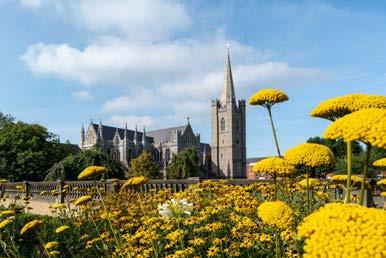
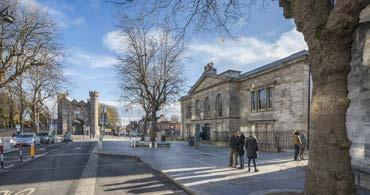
can take a guided tour of the prison, learn about the lives of the inmates, and explore the museum’s exhibits.
Phoenix Park:
Phoenix Park is one of the largest urban parks in Europe and offers visitors a peaceful escape from the city. The park is home to a herd of wild deer, as well as the Dublin Zoo, Áras an Uachtaráin (the residence of the President of Ireland), and a variety of walking and cycling trails.
Ha’penny Bridge:
Grafton Street is a popular shopping district in the heart of Dublin that is known for its lively atmosphere and street performers. Visitors can browse the many shops, cafes, and restaurants, or simply take in the sights and sounds of the bustling street.
Kilmainham Gaol:
Kilmainham Gaol is a former prison that has been turned into a museum dedicated to the history of Ireland’s struggle for independence. Visitors
The Ha’penny Bridge is an iconic symbol of Dublin and is one of the city’s most photographed landmarks. The bridge, which spans the River Liffey, was built in 1816 and offers stunning views of the city skyline.
Overall, Dublin city centre offers a diverse range of attractions and activities that are sure to appeal to all kinds of visitors. From historic landmarks and museums to lively nightlife and outdoor spaces, there is something for everyone to enjoy in this vibrant and welcoming city.





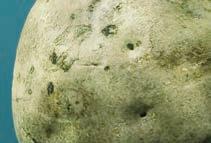

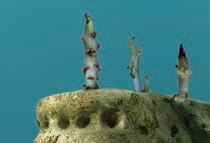
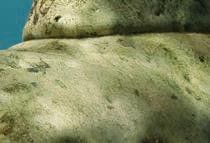




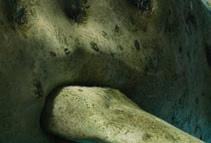
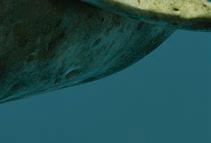


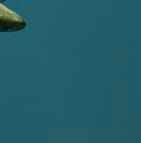
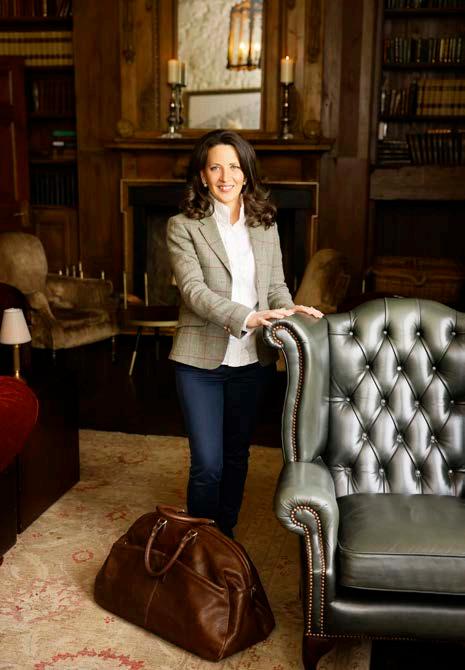
Ireland’s Blue Book celebrated its 50th anniversary last year and has grown from a collection of 11 founding members to 64 across a wide range of properties, from castles, manor houses and bishops’ palaces to coaching inns, former convents, an ice-house and a lighthouse. The wonderful thing is, some of the original members from 1974, like Rathmullan House in Donegal and Ballymaloe in Cork, are still in the Blue Book. Each year, we like to add interesting new properties to the collection that guests will be excited about. For 2025, we have two unique new members. The Station House Hotel in Co. Meath is so charming, close to Dublin, and people love the fact that it’s an old station house. Then Dromoland Castle is a stunning hotel that broadens our offering in Co. Clare. Before now, Gregans Castle in the Burren was our only member in the county, which is such a popular destination, so we’re delighted to have yet another beautiful place for guests to stay in the area. We’re always looking for properties with a story to tell, but the one thing that ties them all together is excellence in food, be it Michelin Star dining or fabulous country house cooking. The Mustard Seed, near Adare was the first member property I went to with my husband, long before I took on my role, and I love going back there to dine in the restaurant.
I’ve been with Ireland’s Blue Book now for over 16 years. In that time, I’ve had the pleasure of working with people in this industry who are incredibly resilient, who’ve come through the challenges of the pandemic and out the other side. I’m also extremely proud of
Ireland’s Blue Book has been welcoming guests to its collection of distinctive properties for more than half-a-century. CEO Michelle Maguire talks to Meg Walker about what makes each one a special place to stay, dine and experience a warm Irish welcome.
the creative, dynamic young graduates who’ve worked with me over the years and have enjoyed learning from them and seeing them progress in their careers.
I was recently in the US, visiting five American cities in one week – New York, Detroit, Indianapolis, Nashville and Charlotte, which are all new gateway cities with direct flights to Ireland. The Aer Lingus College Football Classic in August will bring a lot of American visitors to Dublin who’ll likely extend their stay to see other parts of Ireland, which is wonderful. Overseas guests have the whole world to choose from when deciding where to go on their holiday’s so we’ve got to continue to work hard to make sure visitors consider Ireland for that precious vacation time.
I’ve already had two staycations this year. I like to visit the National Trust properties in Northern Ireland, so went to Fermanagh in March, which was wonderful. I was also down in Waterford, visiting Mount Congreve Gardens, which I’d suggest people put on their itineraries; and I did the Dunmore East Cliff Walk, which is lovely. Because I travel so much for work, I don’t necessarily want to get on another aeroplane for my own leisure time. For me, getting in the car and going to Donegal or up to my mum’s place in Cavan – that’s
a village on the Cavan-Fermanagh border. My first ever job when I was in school was in the Marble Arch Caves, so I started out in tourism. I’ve seen the industry come on a lot in the border regions and Northern Ireland since those early days and watching that evolution has been incredibly rewarding.
When time allows, I’d like to explore some of the islands I’ve yet to visit. I’ve never been to the Skelligs. I’m not great in a boat, but that’s definitely on my bucket list. My husband and I love going away and have travelled a lot of the Wild Atlantic Way together, doing little sections each year, working our way along the route.
I live in Dún Laoghaire in South Dublin. At weekends, I’d stroll along the pier, go to the People’s Park for the market, pop over to Dalkey or head up Killiney Hill for a walk. I’m very lucky where I live that there’s so much to do. For an evening out, I love to go into the city to the theatre or the National Concert Hall. I was in the Bord Gáis Energy Theatre recently to see an opera. Dublin is a great place for anyone interested in the arts. Working for Ireland’s Blue Book, I’ve had the privilege of dining in some extraordinary places, but I also love casual dining around where I live, like in Monkstown or Glasthule, where you’ll find fantastic restaurants and cafés.
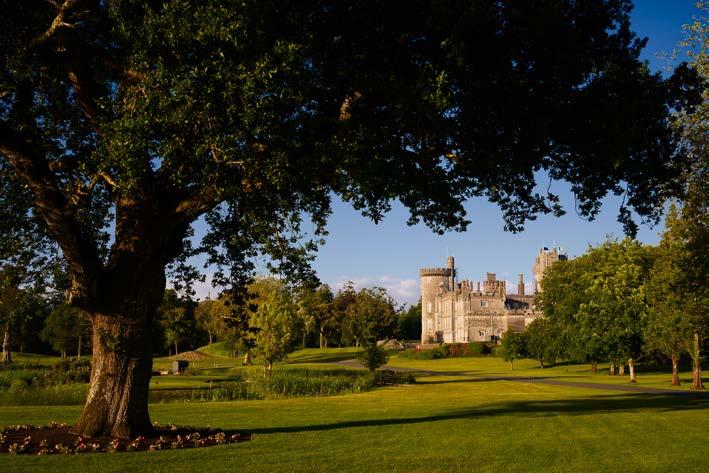
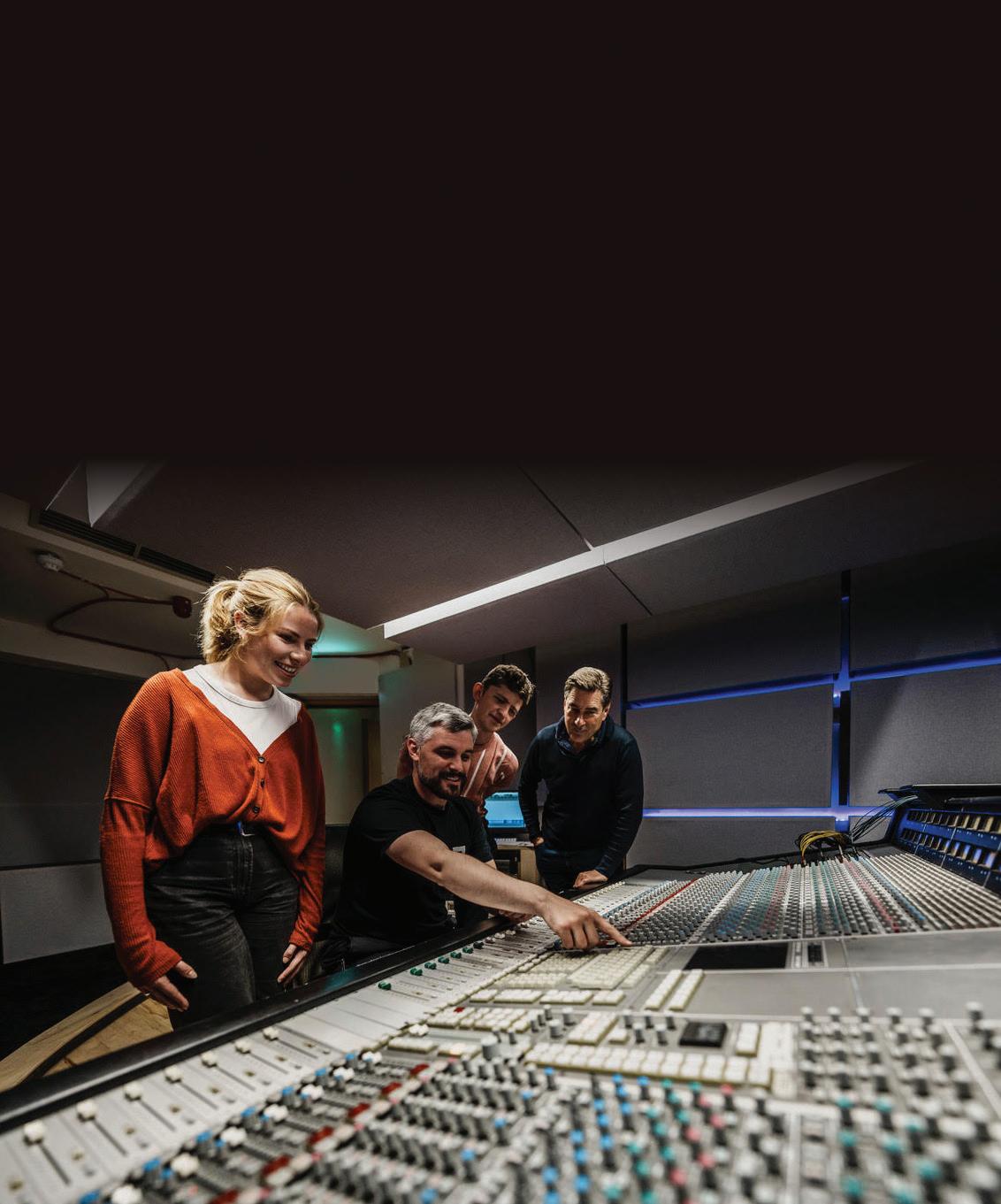




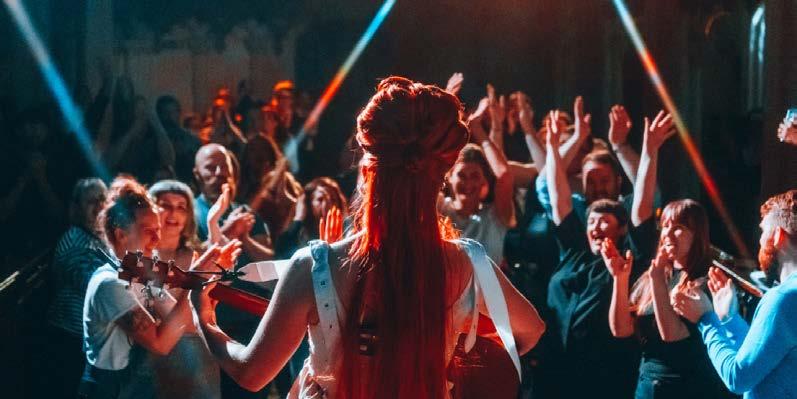
Here’s what you need to know about Ireland’s capital—when to go, what to see and do plus how to get around.
Why you should visit Dublin
The nearly a thousand-year-old Christ Church Cathedral, Trinity College Dublin’s Instagram-favourite Old Library, home to the Book of Kells. Bronze Age gold at the National Museum, stories of emigration on the Jeanie Johnston ship, snugs, pints of Guinness and live music in old pubs. It’s all in Dublin for you to discover and savour.
Best time to visit Dublin
Spring: Daffodils fill such parks as St. Stephen’s Green and Merrion Square
The city comes alive for three days of celebrations during March’s St. Patrick’s Festival and in May, The International Literature Festival Dublin takes place.
Summer: The Bloomsday Festival on June 16 features live readings all around the city that celebrate James Joyce’s ‘Ulysses’. Outside the city, it’s a good time to explore the Dublin Coastal Trail—stroll beaches and piers or take a boat tour from Howth or Dun Laoghaire to see islands and wildlife.
Autumn: Catch emerging performance art at September’s Dublin Fringe Festival, which precedes October’s Dublin Theatre Festival. The Bram Stoker Festival (the Dracula author was born in Dublin in 1847) offers events such as outdoor circus performances at night, choirs in dark libraries and banquets in cathedral crypts.
Winter: Grab a book from Hodges Figgis or Books Upstairs and sip a hot whiskey beside the fire in a historic pub like The Duke, or have a Guinness in Mulligan’s. See a candlelight musical performance at St. Patrick’s Cathedral, which dates to 1200. The year ends with outdoor concerts and light shows at the Dublin New Year Festival
Lay of the land
The pedestrianized streets around Grafton Street are a hub for shopping and dining. Tuck into an Irish cheese toastie at Loose Canon wine bar on Drury Street, or watch the world go by from the outdoor seats at L’Gueleton before hitting George’s Street Arcade for everything from vintage to vinyl.
In the Georgian Quarter, stop for city stories at the Little Museum of Dublin before heading to MoLI, a museum of literature; the RHA for art; or the “dead zoo” at the Natural History Museum (part of the National Museum of Ireland) for an 1850s zoological collection.
The Liberties is one of the city’s oldest neighbourhoods, dating back to the 12th
century. The Guinness Storehouse draws the crowds, but you can learn how Dublin was a powerhouse of world whiskey distilling on a tour of the Dublin Liberties Distillery. Drop into Marsh’s Library, which first opened in 1707. “The Liberties is just 10 minutes from the city centre but it’s steeped in its own character and personality,” says Keelan Higgs, chef and owner of Michelin-starred Variety Jones.
The cobbled streets of Temple Bar are a nightlife hub for tourists. Visit by day to browse for retro finds at Dublin Vintage Factory or Lucy’s Lounge
Get a smoked salmon sandwich at Joy of Cha or coffee and flaky croissant at Il Valentino. Sign up for a tasting at the Whiskey Reserve and then see an arthouse film at the Irish Film Institute
By bus: Dublin Bus operates most of Dublin’s routes with additional service by Go Ahead Ireland
By tram: The Luas crosses the city— the Green Line runs north-south between Broombridge and Bride’s Glen, and the Red Line runs east-west from The Point to Tallaght and Saggart. Cycling: There are some cycle lanes but traffic can be a challenge. Pick up a three-day pass for Dublin Bikes—the first 30 minutes of every journey is free. By car: Taxis are fully licensed (ride shares are not legal)—order via apps like FreeNow or Lynk By train: The Dart light rail runs north-south between Howth and Malahide, via the city centre, to Bray and Greystones in County Wicklow. Additional rail lines service western suburbs, and Irish Rail intercity trains connect Dublin to main Irish cities from Heuston, Pearse and Connolly stations.



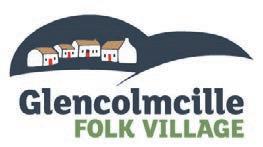
As we open our doors for the 56th year we are delighted to welcome you to the Glencolmcille Folk Village. Glencolmcille Folk Village is located in one of Donegal’s most idyllic valleys, situated along the dramatic coastline of Glen Bay with its spectacular views of Glen Beach and Glen Head.
visit the Folk Village, you will experience a genuine Irish welcome with Ireland from 1750 onwards.
Tour booklets are available in several languages.
to Sliabh Liag cli s we are only 20 minutes along the coast. Tá Chlachán Ghleann Cholm Cille.
ar scéal saoil an Athair Mhic Daidhir.
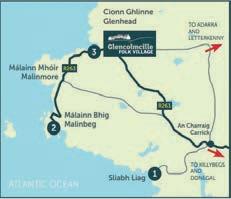


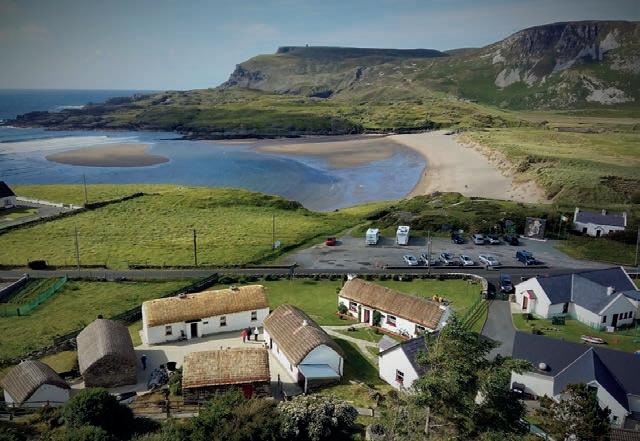
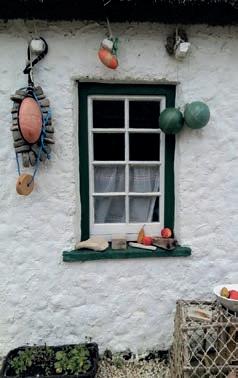

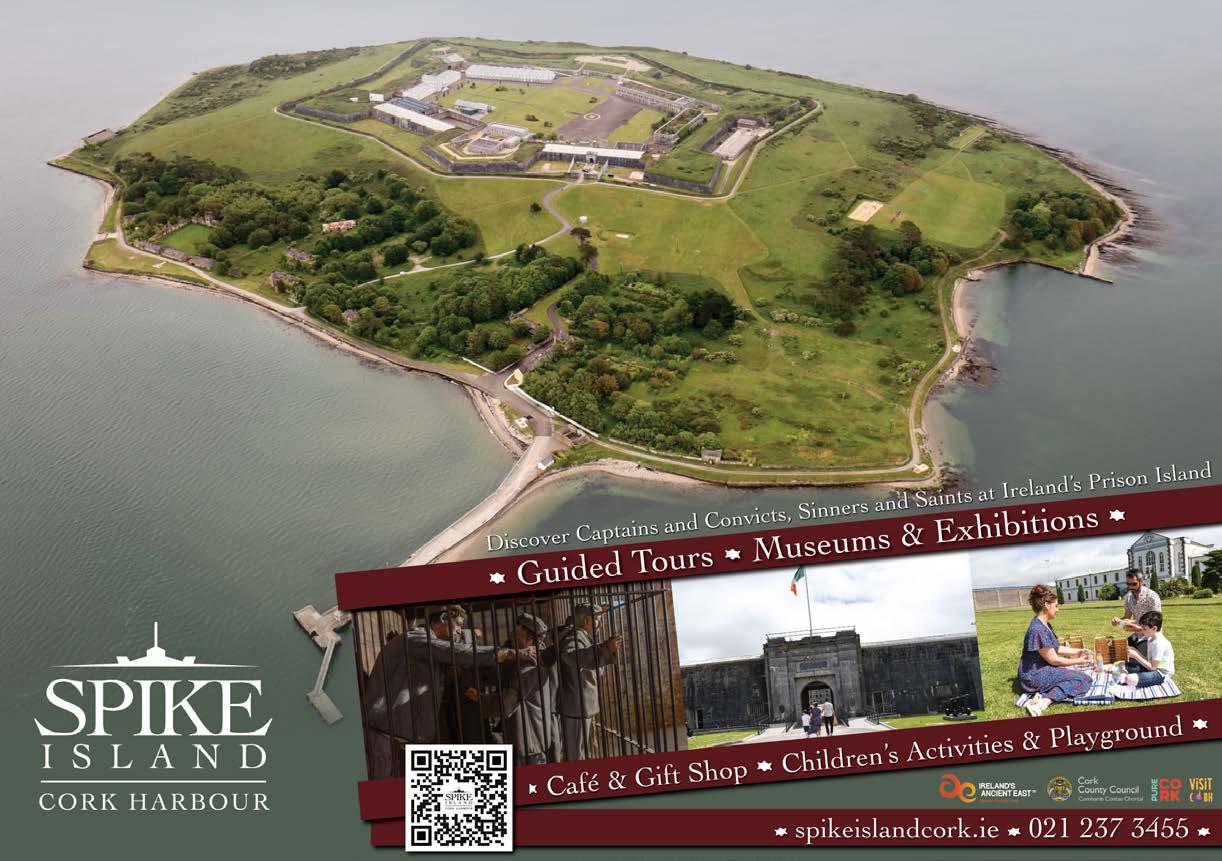
If you’re looking to get your pulse racing, the capital is full of high energy ways to rev up days of sightseeing.
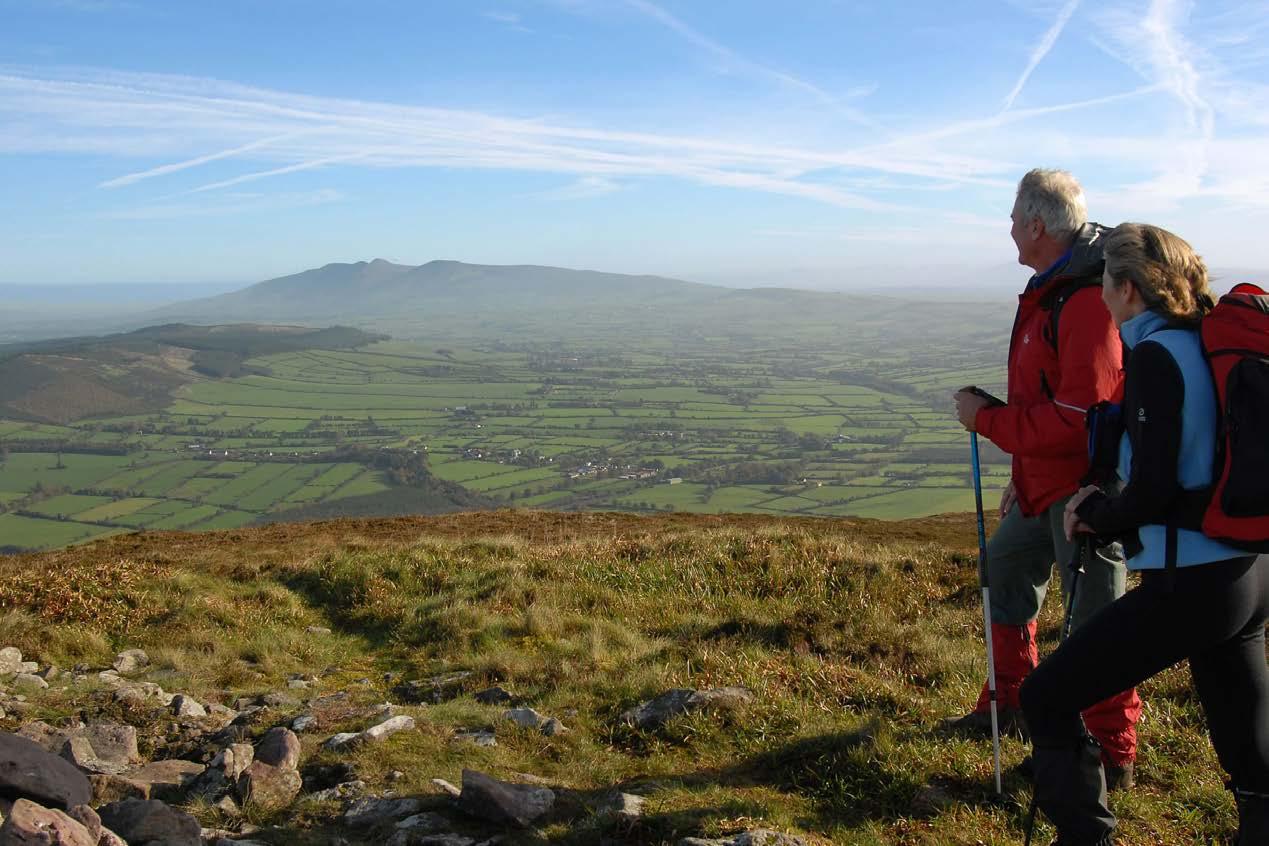
Whether you’re paddling under iconic bridges or cantering through a forest, there’s a thrill to suit you. Choose your own Dublin adventure and you’ll be making a splash in the city centre or heading for a nearby mountaintop before you know it.
Dublin’s waterways are its lifeblood. With City Kayaking you can get to know the River Liffey aboard ‘sit on top’ kayaks, good for both novices and old hands. Enjoy a unique perspective of the city on the trip, your only chance to travel underneath the Ha’penny and O’Connell bridges. Alternatively, go further afield with Kayaking.ie and their tours of Dublin Bay. Suitable for complete begin ners, join a guided paddling tour to Dalkey Island. As you glide along, keep an eye out for the famous local seals who might just swim over to say hello. For something extra special, try a sunset outing.
Just a short stroll from Trinity College and Temple Bar, Dublin’s Docklands are chock full of adventure on the water. For beginners and improvers, Surfdock Watersports is the go to for stand-up paddle boarding (SUP) in the heart of the city. With their SUP equipment rentals and expert lessons, you’ll have everything you need to quickly find your balance on the capital’s waters.
in Malahide, including a one day crash course in how to crew a modern yacht and five-day programme on how to skipper a boat.
With plenty of breezes to catch and many long stretches of beach to choose from, Dublin is a natural spot for kitesurfing. Make your way to Pure Magic in Clontarf for tuition and equipment hire. Their home base at Dollymount Strand is the ideal sheltered spot for beginners tackling the basics and more seasoned kiters brushing up on their skills. With fun for everyone from total newbie to advanced freestyler, surf’s up on the Northside.
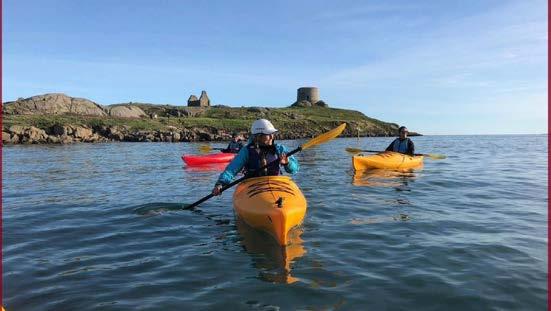
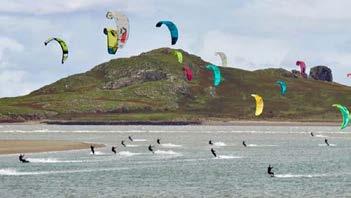
Learn your lines and what knot to do on a sailboat in Dublin Bay. The Start Sailing Course in Dún Laoghaire with the Irish National Sailing and Powerboat School covers all the basics, from what to wear to setting the sails and negotiating all kinds of wind. The school runs more advanced courses at the marina
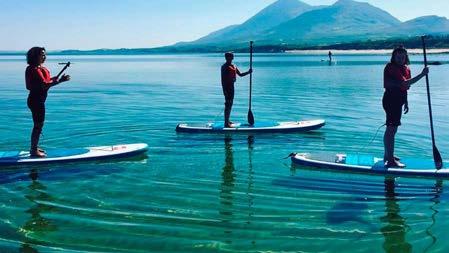

Fancy getting the blood pumping on two wheels? Mountain biking is your gateway to fresh air and gorgeous scenery. Glencullen Adventure Park (the GAP) is a gravity bike park with trails most suitable for intermediate to expert bikers. Visitors can rent a bike and pre-book a ‘pedal up pass’ for a day packed full of mountain based adventure. Ticknock Mountain Bike Trail takes you around the Dublin Mountains for unfolding views of the city and bay. The shortest route takes about an hour and requires a basic level of fitness, but if you’re looking for a bigger challenge, head off on optional extra loops where more experienced riders can extend the route to up to two hours. Along with the scenery you’ll come across some cool rock formations at the foot of Three Rock Mountain, so be sure to bring your camera.

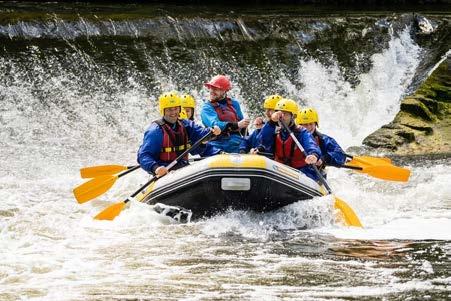

It’s hard to match the feelgood factor of a brisk trek through nature. You can get your fix of panoramic views (and give your legs a proper stretch) on the Cliff Path Loop in Howth, a 30-minute DART ride north of the city centre or venture a little further out of the city to the Dublin Mountains, where a climb is rewarded by a new angle on the cityscape, as you pick out landmarks like the Poolbeg chimneys. Hilltoptreks provide options from day tours to guided walking holidays, giving you the chance to hit the heights of Dublin at your own pace.
While you’re in the mountains, kick the adrenalin up another notch when you zoom through the Tibradden Wood canopy. Zipit has five circuits ranging from one to twenty metres high, and up to four hours of fun for all ages and abilities. Their Treetop Ropes Adventure Course will have you clambering through the pines, swinging into cargo nets and flying down one of their many zip lines.
With Croke Park being the home of Gaelic games (and the GAA Museum dedicated to them), Dublin celebrates these sports with their roots in the ancient past. To get hands on, Experience Gaelic Games provides a chance to try hurling, Gaelic football, and handball in a lively group session. Learn traditional sporting skills that are fun for all and easy to pick up, and you’ll be feeling like a Celtic warrior in no time.
Make a splash with some river rafting on the capital’s doorstep. Just twenty minutes outside Dublin, Rafting.ie arranges exciting group trips on the River Liffey that will get you out into the great outdoors and unlock the city’s natural world. On the trip downriver you’ll float through the Strawberry Beds (named after the fruit that once grew here), as you paddle and splash your way through the peaceful scenery.
Saddle up and seize the reins at Coolmine Equestrian Centre in Saggart, near the foothills of the Dublin Mountains. Their horse riding tours and riding holidays give you plenty of opportunities to get out and explore the countryside. Outings on horseback cover hill and forest, introducing you to local wildlife including deer and birds like the great spotted woodpecker.
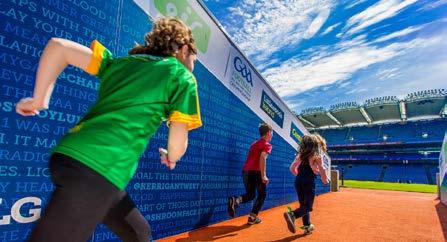
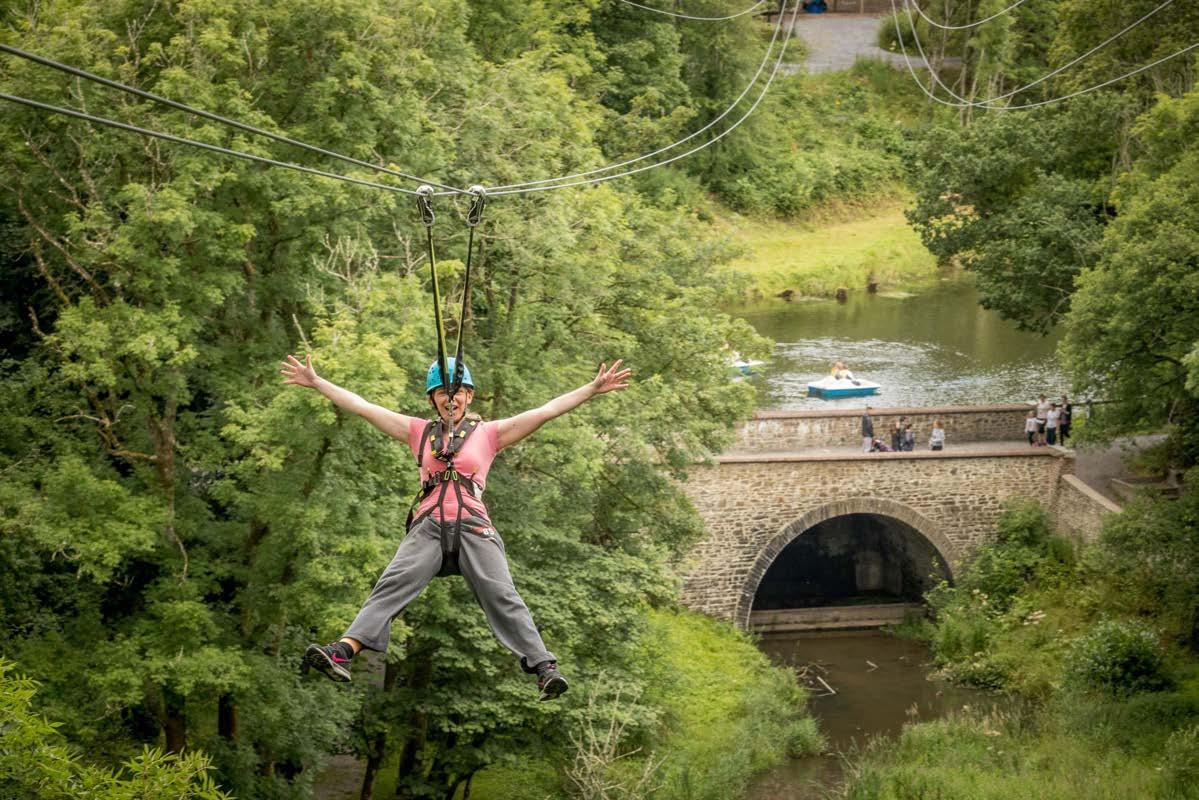
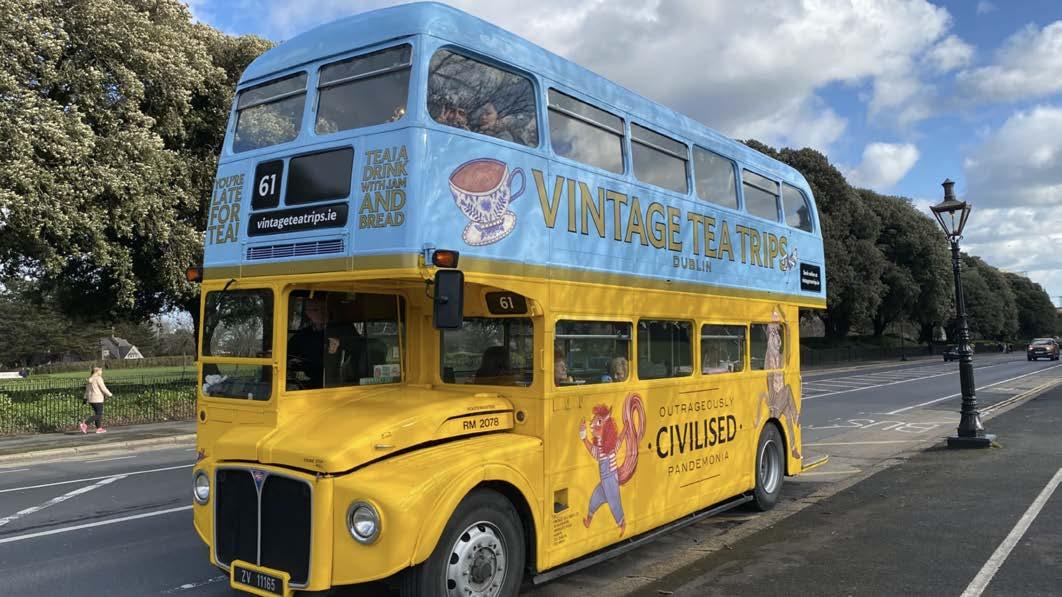
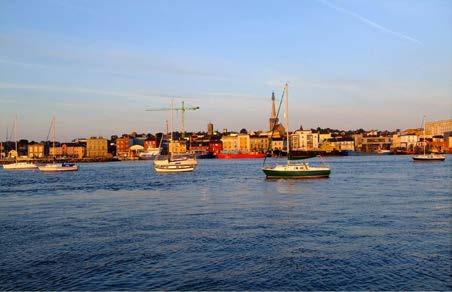
Dublin’s ancient streets are a busy mix of iconic sights and buzzing pubs, but there’s a curious side to this place too. From a jail that housed revolutionaries to a musical kayak down the Liffey, Dublin’s more obscure corners are weird, wonderful and totally in character.
Surfdock
Fancy experiencing Dublin from a different perspective? Saunter over to Grand Canal Dock in the heart of the city’s Docklands and hit the water with Surfdock’s invigorating watersport activities.
Take a step back in time with Vintage Tea Trips and experience Dublin in a unique way. Indulge in their afternoon tea treats, great conversation and tap your feet along to some fabulous 1950s jazz while taking in the sights of the city. You don’t have to be on your best behaviour on board their vintage Routemaster buses, or as they call them, “our biscuit tin on wheels”. This is, after all, afternoon tea the Irish way!
Pauline, Kitty and Jean are their three afternoon tea buses. They are named after Karen’s grandmothers and great aunt, as, as they say at Vinage Tea Trips, they welcomed everyone into their home for tea and cakes, whether you were the postman or the Pope. It is this sense of nostalgia and the door always being open that we wish to always recreate on board. 01 255 1777, Email. team@vintageteatrips.ie, www.vintageteatrips.ie
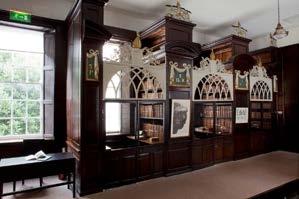
Marsh’s Library
Hidden away in a tranquil corner of the St. Patrick’s Cathedral grounds, Marsh’s Library is the oldest public library in Ireland and was a favourite haunt of Jonathan Swift, James Joyce and Bram Stoker. And just like Stoker, it has its own macabre side.
Along with its 25,000 books and 300 manuscripts, there are bullet holes from the 1916 Easter Rising scattered across the library’s original oak bookcases.
Museum of Literature Ireland (MoLI)
Dublin’s one of the world’s great literary cities and the Museum of Literature Ireland (shortened to MoLI in honour of Molly Bloom, a central character from James Joyce’s’Ulysses’ ) at Newman House is full of interactive exhibits and curious literary artefacts. But the museum’s elegant courtyard is also one of Dublin’s few accessible historic house gardens and contains the famous ash tree under which Joyce had his graduation photos taken.

Escape the hum of Dublin City for a while and venture 30-minutes south to the charming coastal surroundings of Sandycove. Looking out to the Irish Sea is the James Joyce Tower and Museum , a fascinating collection of Joyce’s letters, photographs and personal possessions all stacked up in a 19th century Martello Tower. Sandycove was also the setting for the opening scenes of Ulysses. And if the weather’s playing ball, go for a dip at the famous Forty Foot bathing pool nearby.
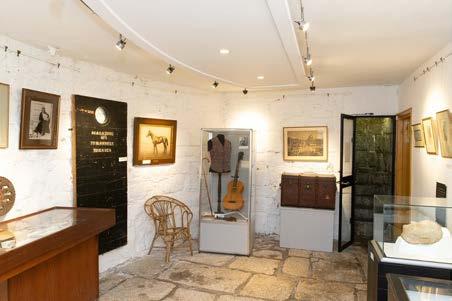
As a literary city, Dublin’s always been full of stories, but few are more important than the ones within the walls of Kilmainham Gaol . If you want the inside track on how Ireland won its independence, then look no further than the infamous jail where revolutionaries like Patrick Pearse spent their last days. Incredibly, future president Éamon de Valera was the final prisoner here (and only survived execution because he was born in the United States). Take one of the superb tours, presented by guides who live and breathe this stuff.

Temple Bar’s already Dublin’s most colourful district, but the Icon Walk brings a whole new splash of character to the city’s vibrant heart. Showcasing original artwork by many local artists of Irish icons from a bunch of disciplines (writers, playwrights, sports icons, musicians and actors), it’s a loud and proud display of Irish cultural heritage. Go for a self-guided tour along Aston Place, Bedford Lane and Price’s Lane and check out eclectic art of everyone from rock musician Phil Lynott to legendary comedy character Father Ted.

We provide our customers with the tastiest, highest-quality fish n’ chips in Dublin at the best prices. We believe that our outstanding standards, service, cleanliness and value are achieved by using the highest-quality ingredients and the best-trained staff to build our well-known Beshoff Bros brand. We also provide a socially and environmentally responsible service to the community and continually work to increase customer loyalty through rewards and incentives.
Only the freshest fish & finest potatoes…
Did you know that Beshoff Bros only use the freshest fish & finest potatoes?
We are proud to be able to provide our customers with fresh fish from the cold clean waters of the North Atlantic caught under ‘European Fishing Policies’ which replenish stocks and guarantee sustainability and traceability.
Our fresh potato ‘Real Chips’ are grown by environmentally-friendly farmers using first-class agricultural practices.


We only use the best vegetable oil available and a range of super-thin batter to ensure the tastiest and healthiest fish n’ chips on both sides of the River Liffey!
“ Simply the best Fish n Chips in Dublin”
For three generations Beshoffs have been serving Dublin with the finest fish & chips. Well known for both the taste and quality of our offer, it is quite simply a taste of Dublin not to be missed.
We specialise in freshly prepared fish which is cooked to order, coated in our secret recipe batter, served with our hand cut chips from only the finest potatoes & all cooked in pure vegetable oil. We also cater for most dietary requirements, gluten free food, vegetarians & halal which means nobody has to miss out on enjoying our tasty food.
We are situated on Dublin’s main thoroughfare O’Connell Street, Our first floor seating area overlooks the spire of Dublin & the GPO, watch the world go by in comfortable surroundings. We cater for large groups with seating for up to 140 people in our restaurant. We also serve breakfast Monday – Saturday until 11am.
OUR STORES
Howth, Co. Dublin
Mespil Road, Dublin 4
Clontarf, Dublin 3
Dame Street, Dublin 2
Malahide, Co. Dublin
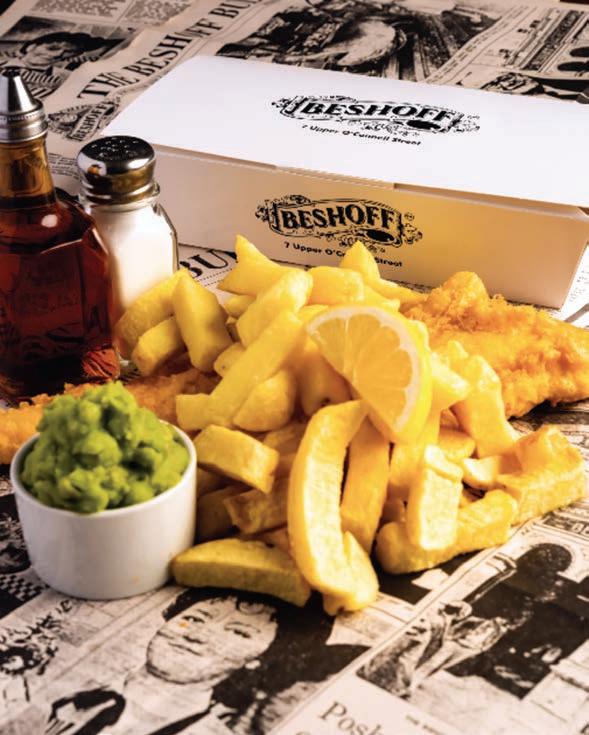





Jennifer McShane chats to Christine Murphy, founder of Waterford-based knitwear label Urban Aran, about blending art with local heritage, building a brand from scratch and what she’s learned along the way.
I studied knitted textiles in Limerick at the School of Art and Design before COVID, one day a week while working in the luxury hotel industry. I worked in senior management roles in the luxury hotel industry for 22-years, in places like the Sheraton in Belgium, the Westbury, and the Ritz-Carlton. I was very involved in interior design projects and the day-to-day running of hotels. I had a good understanding of fabrics, colours and textiles. And it’s amazing how everything interrelates with fashion — the design process, light, simplicity — and it all connects. I launched my first fashion collection in October 2021 during the pandemic and was invited by CREATE in Brown Thomas to show my collection the following year. I have been there four years in a row. My fashion collection is full-time in Arnotts Dublin and 11 other independent stores.
While studying, I walked around Waterford and looked at all the street art murals. That’s how Urban Aran came about. I was so inspired by how unattractive buildings and forgotten corners were being completely transformed by murals, by Irish and international artists. Suddenly, people were standing around looking at them and admiring them. I thought we’re always talking about the Wild Atlantic Way or the Copper Coast, but we’re not looking at urban Ireland and how towns and villages are being revived throughout the country through art. I greatly respect how graffiti has gone from ghetto-style to becoming a free art gallery on our walls. I wanted to bring that spirit into my knitwear
using some Aran stitches, some of my drawings and designs and bold colour.
Although based in Waterford now, I travel a lot. I’ve worked all over Belgium, the UK and the US. I ended up settling here and this became home. I have two girls but I still travel regularly. I was in Paris this year showing my Autumn collection and I’m off to Canada soon. I still design luxury blankets for hotels. I have designed and made luxury hotel blankets in Ireland for Adare Manor, Hayfield Manor, The Merrion Hotel Spa, Ashford Castle, among others.
Currently, my full collection is designed and made in Ireland using only natural fibres. The wool is from Northern Italy; it’s a soft Merino from the underbelly of the sheep. It’s natural, hypoallergenic and biodegradable. The dyes are FSC certified. I knit everything fully fashioned as much of the garment as possible is made without cutting or sewing, so there are very few seams. Many people with sensory challenges wear my pieces, which I hadn’t expected, but it makes sense. The cropped bomber did really well last year. It’s colourful and warm and I use up to four colours of double-twisted wool, which gives great texture. I also do a pure wool ‘coatigan’ that’s really insulating. None of my pieces contain synthetics; it’s all pure wool, no acrylics.
Not everything I make will appeal to everyone. And that’s not my goal. I’m building something with a unique aesthetic. I’m not interested in designing

plain navy jumpers. There’s nothing wrong with them but they don’t fulfil my purpose. For others starting, I always say: You’re not a charity. That’s the advice I always give. You’re entitled to earn a living. Know your numbers and your costs and margins. There’s real pressure to be everything — designer, bookkeeper, PR but knowing the numbers keeps you going.
I joined Network Waterford early on. It took me a while, but it was one of the best things I did. I met my accountant, a business mentor, and a local printer there. Everyone’s eager to learn and help each other. The Local Enterprise Office was a huge help too. You just have to go in, have a coffee and see what’s on offer. It’s hard and lonely at times, especially when you’ve been used to managing a big team. Now you’re the boss and it’s just you.
Being stocked in Adare Manor, Ashford Castle and Arnotts has been a highlight. Seeing Urban Aran in the window at Burnt Orange was a real moment, too. We’ve shown in Paris and Beijing and
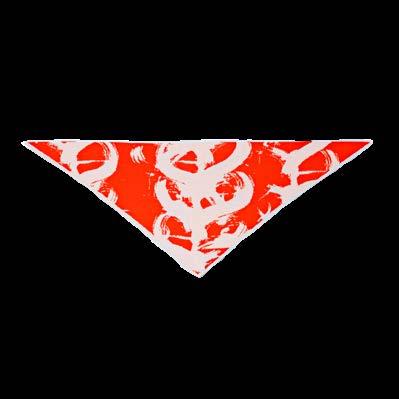









We’re delighted to present Toots, our people moving champion for the 11th summer season. We offer a service from Malahide Railway Station up to the Castle every 20 mins from 10 am, allowing guests to return at their leisure, with a tour through the village 30% discount off the Eco Toots toy keepsake train when you mention Go Wild Pay on board with Revolut, ApplePay, GooglePay, or cash €7 adults €6 for Senior and €5 per child. Family ticket 2&2 €18
Why not take home our value-added keepsake of Malahide with our new EcoToots Activity Toy Train? Simply ask the driver for Malahide’s only tourism merchandise.
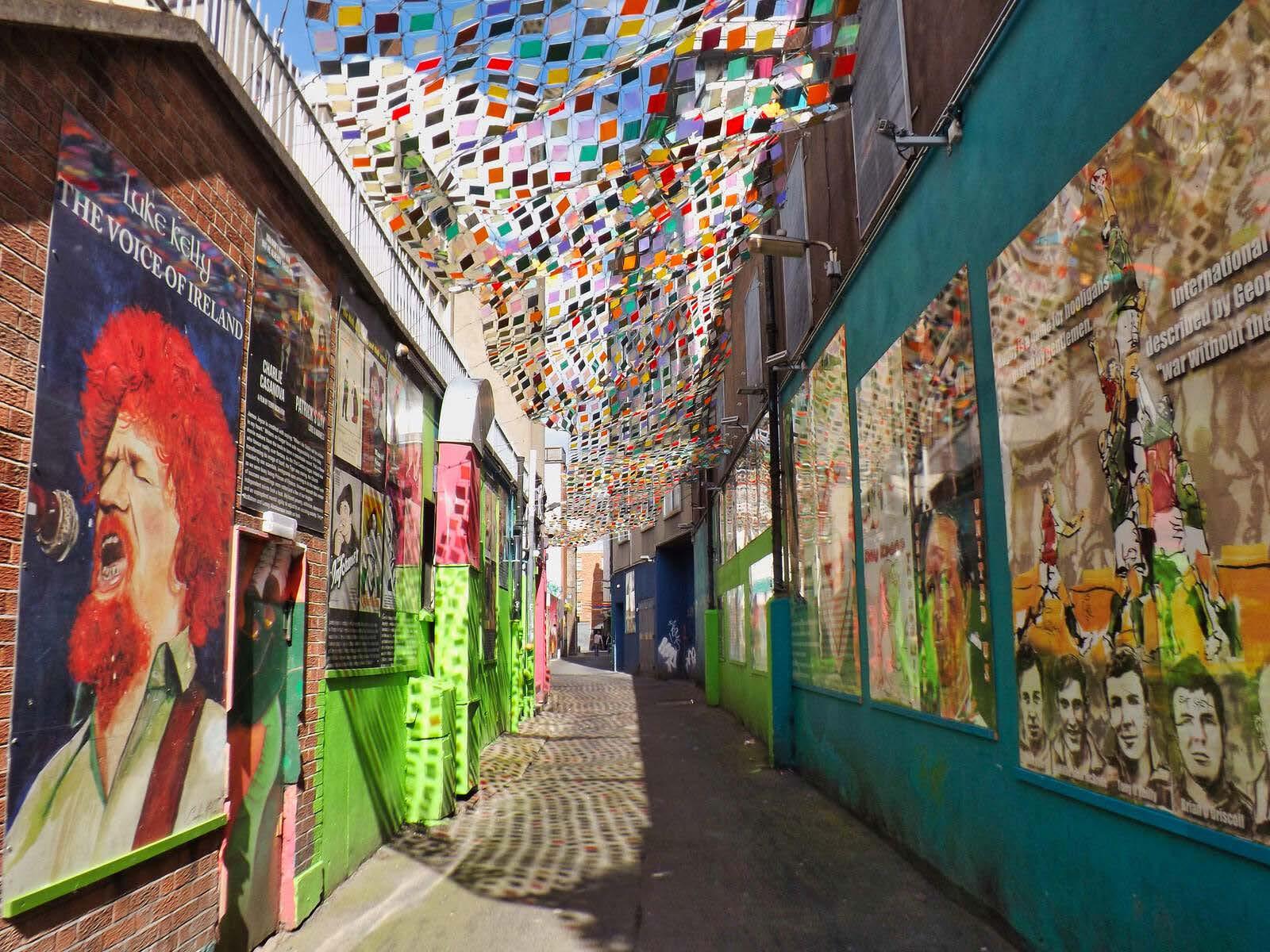
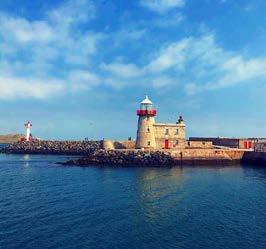

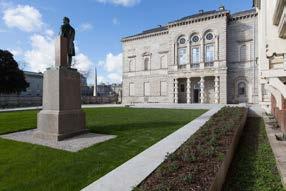





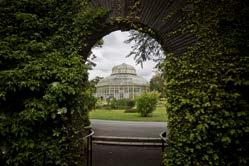
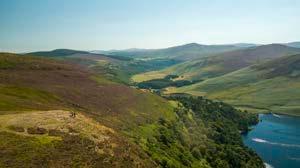
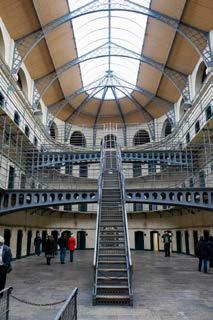



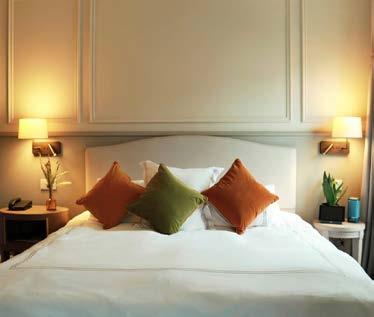
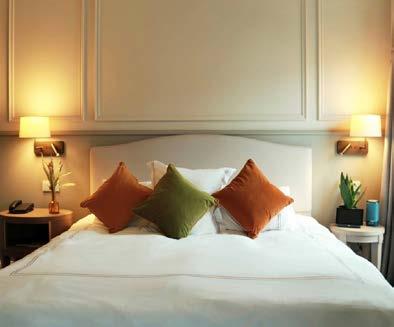






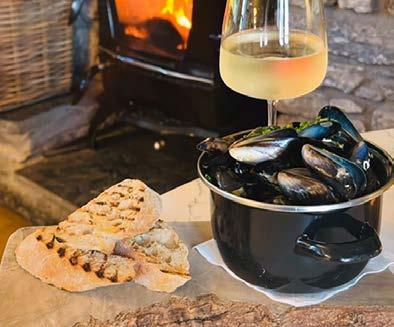



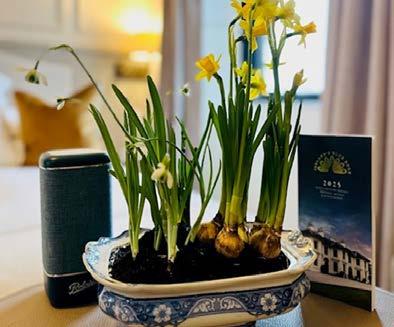


The Lansdowne Kenmare has been a favourite destination for guests travelling to Kenmare for generations. This gracious Georgian building offers stylish townhouse bedrooms, sophisticated cocktails, award winning food,from breakfast to afternoon tea and elegant parties. The Shelburne Street restaurant offers award-winning food, carefully chosen and curated to ensure a nostalgic dining experience.
The Lansdowne Kenmare has been a favourite destination for guests travelling to Kenmare for generations. This gracious Georgian building offers stylish townhouse bedrooms, sophisticated cocktails, award winning food,from breakfast to afternoon tea and elegant parties. The Shelburne Street restaurant offers award-winning food, carefully chosen and curated to ensure a nostalgic dining experience.
The Lansdowne Kenmare has been a favourite destination for guests travelling to Kenmare for generations. This gracious Georgian building offers stylish townhouse bedrooms, sophisticated cocktails, award winning food,from breakfast to afternoon tea and elegant parties. The Shelburne Street restaurant offers award-winning food, carefully chosen and curated to ensure a nostalgic dining experience.
The Lansdowne Kenmare has been a favourite destination for guests travelling to Kenmare for generations. This gracious Georgian building offers stylish townhouse bedrooms, sophisticated cocktails, award winning food,from breakfast to afternoon tea and elegant parties. The Shelburne Street restaurant offers award-winning food, carefully chosen and curated to ensure a nostalgic dining experience.
Main St, Kenmare, V93 YRC8 | Tel: +353 (0)64 664 0200 | Email: hello@lansdownekenmare.com | www.lansdownekenmare.com
Main St, Kenmare, V93 YRC8 | Tel: +353 (0)64 664 0200 | Email: hello@lansdownekenmare.com | www.lansdownekenmare.com
Main St, Kenmare, V93 YRC8 | Tel: +353 (0)64 664 0200 | Email: hello@lansdownekenmare.com | www.lansdownekenmare.com
Main St, Kenmare, V93 YRC8 | Tel: +353 (0)64 664 0200 | Email: hello@lansdownekenmare.com | www.lansdownekenmare.com




















From poets, musicians and playwrights to actors and even one loveable lion, Dublin is home to some truly extraordinary individuals.
This list of 10 of our most beloved exports will leave you in no doubt that Dublin is a city that changed the world.
No list of famous Dubliners is complete without mentioning U2. Formed in Dublin in 1976, this legendary rock band— fronted by Bono and including The Edge, Adam Clayton, and Larry Mullen Jr.—rose from humble beginnings to become one of the biggest musical acts of all time. They got their start performing in local venues like McGonagles and made their name through raw energy, meaningful lyrics, and unforgettable performances. Today, fans can explore their roots at the U2: Made in Dublin exhibition in The Little Museum of Dublin, filled with rare memorabilia. Many of their iconic tracks were recorded at Windmill Lane Recording Studios, which now offers tours to music lovers
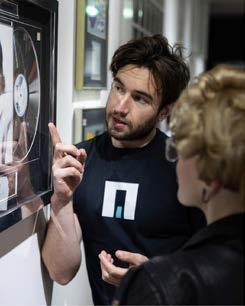
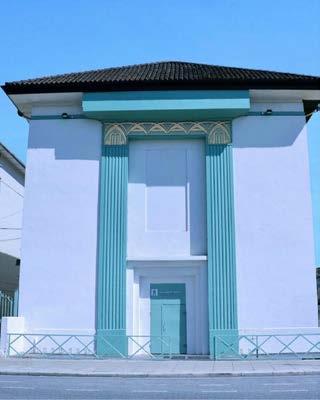
From Castleknock to California, Colin Farrell is one of Dublin’s most successful film exports. Known for his intense performances and smouldering screen presence, Farrell has built a career that spans indie gems and major blockbusters. Films like The Lobster, The Gentlemen, and The Banshees of Inisherin have showcased his extraordinary range. Despite his Hollywood status, Farrell remains deeply connected to his roots. You can even see a lifelike waxwork of him striking a pose at the Dublin Wax Museum Plus


Few voices are as hauntingly beautiful and unmistakably powerful as that of Sinéad O’Connor. Born in Glenageary, near Sandycove, in south Dublin, Sinéad rose to international fame with her debut album The Lion and the Cobra and her heart-wrenching version of Nothing Compares 2 U Though her career was often marked by controversy, her raw emotion and passionate performances won her fans around the globe. Her music, activism, and authenticity continue to influence new generations of artists.
One of literature’s sharpest wits and most memorable personalities, Oscar Wilde was born in Dublin in 1854. Best known for The Picture of Dorian Gray and The Importance of Being Earnest, Wilde’s razor-sharp aphorisms are still quoted today. He grew up on Merrion Square, where his statue now lies sprawled out in the park across from his former home. Whether you’re reading his work or visiting his statue, Wilde’s presence is deeply felt throughout the city.


The unforgettable frontman of Thin Lizzy, Phil Lynott is one of Dublin’s most cherished rock legends. Known for hits like Whiskey in the Jar and The Boys Are Back in Town, Phil brought Dublin soul and swagger to the global rock scene. His charisma and musical genius are remembered with a life-size bronze statue just off Grafton Street on Harry Street. Locals and tourists alike stop to snap photos and pay tribute to the man who put Dublin on the map in the world of rock ‘n’ roll.
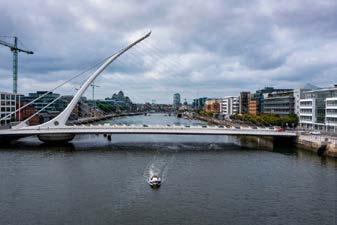
Regarded as one of the most important writers of the 20th century, Samuel Beckett was born in Foxrock, Dublin, in 1906. He achieved international acclaim for his play Waiting for Godot, a cornerstone of modern theatre. Beckett’s minimalist style and existential themes revolutionised drama and literature. His legacy is proudly upheld at Trinity College’s Samuel Beckett Centre and in the Museum of Literature Ireland (MoLI) One of the city’s most iconic modern landmarks, the Samuel Beckett Bridge, elegantly spans the River Liffey and stands as a striking tribute to his enduring influence.
You read that right—Hollywood’s original MGM lion was born in none other than Dublin Zoo. Named Cairbre and later rebranded as Leo, this Dublin-born big cat became the face of Metro-Goldwyn-Mayer films from 1924 to 1928. With his mighty roar and majestic mane, Leo left the Phoenix Park for the glamour of Hollywood, becoming a silent-era film icon before retiring in the 1930s. His unlikely story is a delightful piece of Dublin trivia you’ll never forget.
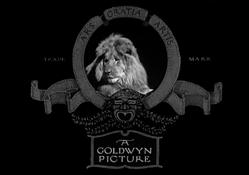

James Joyce is perhaps the most celebrated literary figure to come from Dublin. Born in Rathgar in 1882, Joyce immortalised the city in works like Dubliners, A Portrait of the Artist as a Young Man, and his modernist masterpiece, Ulysses. Each year, fans flock to Dublin on June 16th for Bloomsday—a day dedicated to retracing the steps of Leopold Bloom across the city. For those looking to delve deeper into Joyce’s genius, The James Joyce Centre on North Great George’s Street is a must-visit.

Beloved for her heartwarming and keenly observed novels, Maeve Binchy was a storytelling force whose works captured the spirit of Irish life with humour and compassion. A native of Dalkey in south Dublin, she authored numerous bestsellers including Circle of Friends, which was later adapted into a popular film. Her novels have sold over 40 million copies worldwide. Binchy’s legacy continues to influence readers with tales that are both deeply Irish and universally relatable.
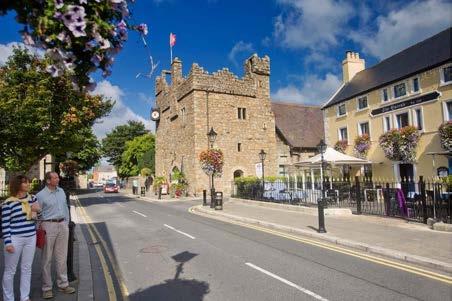
Though he found fame in London and New York, renowned painter Francis Bacon was born on Baggot Street in Dublin in 1909. Known for his emotionally intense and often unsettling artworks, Bacon remains one of the 20th century’s most influential visual artists. In a remarkable cultural homecoming, Bacon’s chaotic London studio—complete with over 7,000 items—was transported and meticulously reconstructed at Dublin’s Hugh Lane Gallery, where visitors can explore his fascinating creative process.
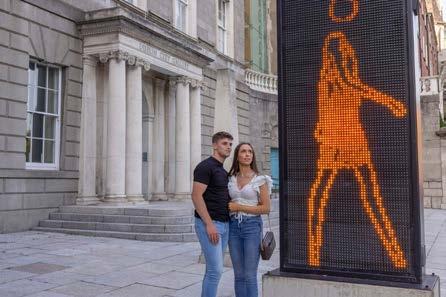
The Heart of Dublin
‘If I can get to the heart of Dublin, I can get to the heart of all the cities of the world,’ - James Joyce’s words certainly ring true in the Dublin of today. Home to Guinness or the ‘black stuff’ as it’s called, and where the pubs are laced with the sound of impromptu music sessions and the chatter of storytellers. When visitors come to Dublin, I’m often asked what to see and where to stay. One of Dublin’s hidden gems is the Jeanie Johnson Famine Ship. It’s a poignant reminder of how Dublin’s Docklands have changed dramatically over the centuries. The dreary warehouses, once lined with barrels and crates, are replaced with trendy bars like Urban Brewing in the CHQ and cool restaurants that play a pivotal role in the area.
A stone’s throw away is the Spencer Hotel, a relaxing oasis with an enviable selection of amenities, most notably an eighteen-metre swimming pool, a feature missing from most city centre hotels.
Another fun way to see the city by bus is with Vintage Tea Trips. Enjoy Afternoon Tea while listening to an entertaining run-down of the city’s history.
An important museum close by that offers rotating exhibitions is EPIC – the idea that Every Person Is Connected is something we Irish can relate to, especially when we meet Diaspora around the world on our travels. The current exhibition explores A Century of the Irish Passport.

‘Dublin can be heaven with coffee at eleven and a stroll in Stephen’s Green’. Lyrics from The Dublin Saunter certainly inspire a visit to this park. Steeped in history, The Green is flooded with office workers on sunny days. The ducks in the pond have survived the bullets during the Easter Rising of 1916 and watched on as generations of courting couples stroll by.
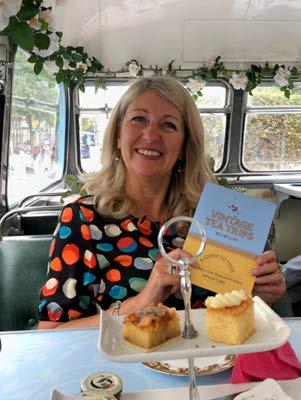
The right to graze sheep on the grass of St. Stephen’s Green has been bestowed on the 88 individuals who have been honoured with the Freedom of Dublin since its inception in 1876. Nelson Mandela and Barrack Obama are among recipients. So too are Irish rock group U2, who actually brought sheep into the park the day after their conferring.
Another question I get asked is where to take the best Instagram shot. Georgian doorways found in one of Dublin’s many squares, will frame any pose. The Ha’penny Bridge, traversing the River Liffey, is another iconic setting, with wrought iron work that screams out quintessential Dublin. Molly Malone, better known locally as the ‘Tart with the Cart’, is another popular choice and she is found at Suffolk Street. But I’m rather fond of the Phil Lynott statue outside Bruxelles Pub off Grafton Street.
Dublin is one of 53 Unesco Cities of Literature in the world and almost every street and pub will have featured in a story, a novel or a song. The Dublin Literary Pub Crawl is an ideal way to weave culture into a social and entertaining experience. Pubs such as the Palace Bar and Davy Byrne’s, frequented by Patrick Kavanagh and Brendan Behan, are included en route. Needless to say, Dublin features prominently in my novels too, especially Six Postcards Home. I hope you enjoy my hometown. Welcome to Dublin.
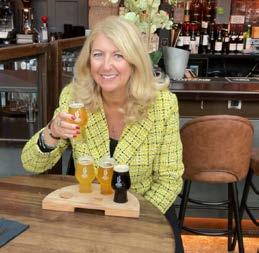
For more from Michelle, see www.thenoveltraveller.com or www.novelireland.com





















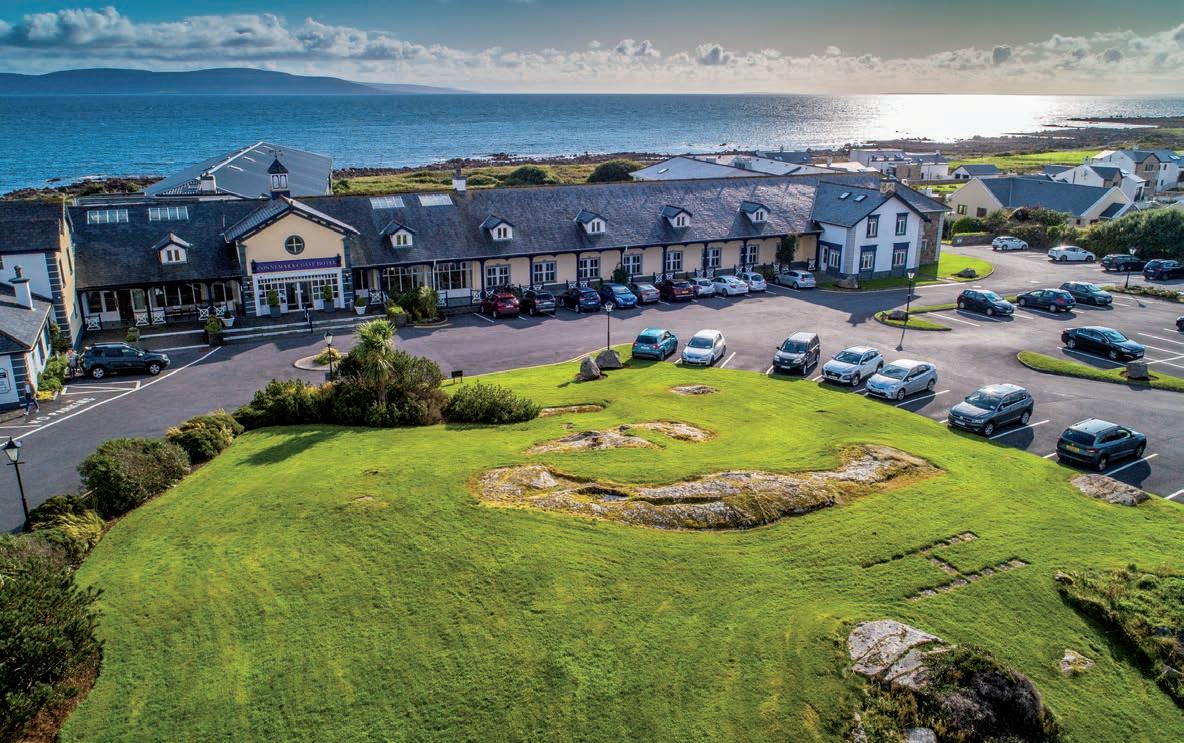
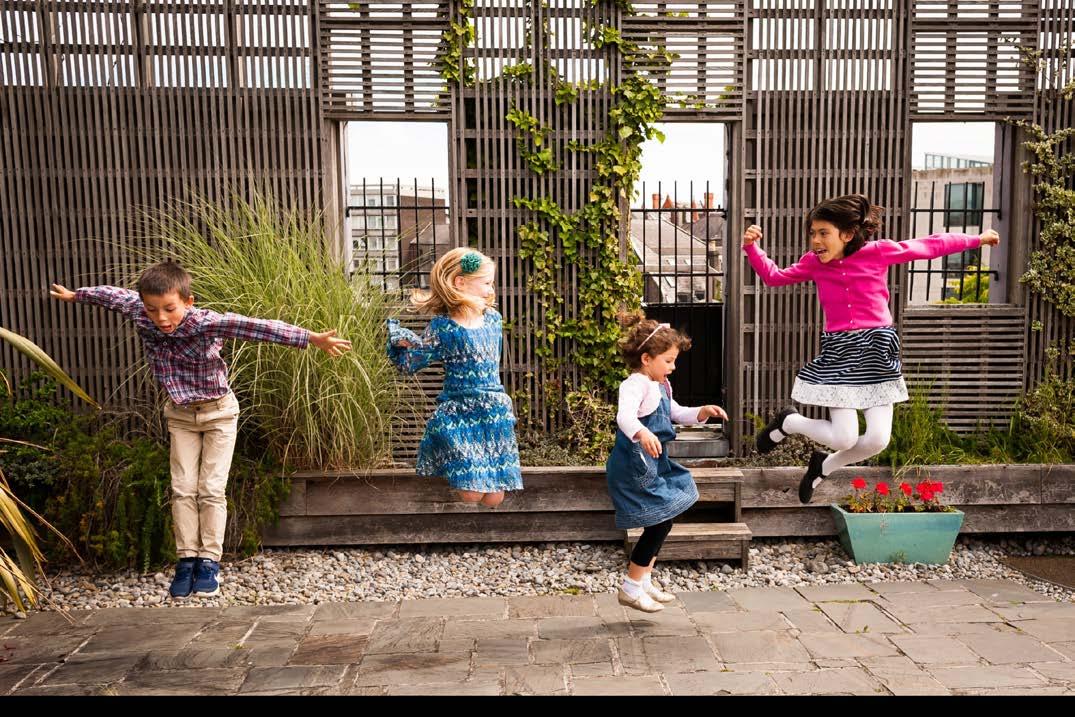
The capital is calling with loads of interesting family activities. Whether it’s museum visits with mini historians, bouncing together on a trampoline or feeding baby animals, there’s something for all ages. With choices from city to coast and ideas for any weather, here are some of our top fun family things to do in Dublin.
Malahide Castle and Gardens
Head north of the city to coastal Malahide village to find Malahide Castle and Gardens . You can tour the medieval castle, roam 260 acres of parkland and visit the Talbot Botanical Gardens to see plants from around the world. The West Lawn is the big draw for little ones, with its Fairy Trail and enchanting Butterfly House.
Newbridge House and Farm
Only a 30-minute drive from the city centre, Newbridge House in Fingal mixes history and outdoor adventure. Here the only intact Georgian mansion in Ireland features mostly original furniture, family portraits spanning generations and cool quirks like the Cabinet of Curiosities. On the traditional working farm, meet piglets, goats and Connemara ponies along the Farmyard Discovery.
Aquazone at the National Aquatic Centre
The indoor water park at Aquazone is a blast for all the family. Try some indoor surfing at the FlowRider or just float along the lazy river. The Masterblaster, Green Giant and Black Hole (three of Ireland’s most thrilling water slides) will keep the energy up.

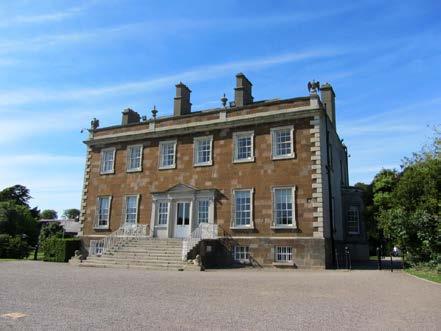

Museum
Head for the two tall masts in the Docklands and you’ll find the Jeanie Johnston. This replica famine ship tells the stories of those fleeing the Great Hunger (with a happy ending, as uniquely no lives were ever lost on board). Next door at the CHQ Building, EPIC The Irish Emigration Museum will also send you back into Ireland’s history. Get involved with interactive displays about the country’s emigrants and learn how they became scientists, novelists or even outlaws in the wider world. Make a full day of it with combo tickets providing entry to both experiences.
St. Patrick’s Cathedral
Afterwards, stroll to St. Patrick’s Cathedral where, since 1432, the pupils of the Choir School have sung at services. Unwind in the lovely park next door with a picnic while the kids explore the playground.
Dublin Castle
It’s been all go at Dublin Castle over the centuries. First a Viking settlement, then a Norman fortress, before becoming a Georgian palace and seat of government. Eventually handed over to the newly independent Irish state in 1922, the grounds can be visited for free at this major landmark in Irish history.
Dublin Zoo

No getaway to Dublin is complete without popping into the Phoenix Park, Europe’s largest enclosed city park. Rent a bike, spot herds of wild deer and enjoy refreshments in the quaint little tea house. While you’re here, why not go wild at Dublin Zoo? Spot giraffes and rhinos on the African Savanna or visit the Gorilla Rainforest.


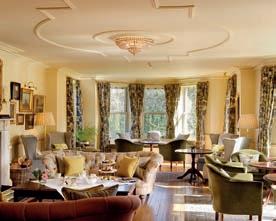



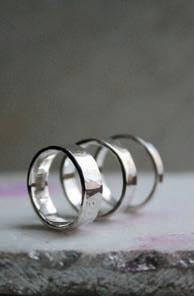

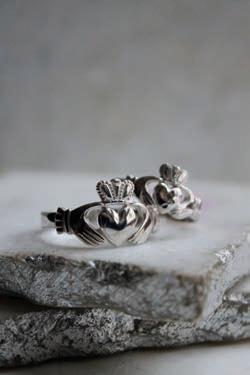
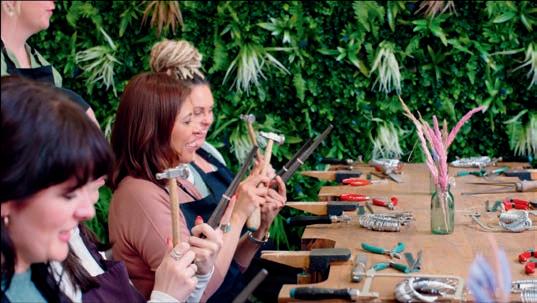

he Luke Kelly Statue on King Street in Dublin City, commemorates the legendary Dublin born singer, folk musician and actor. He was also a founding member of the well-known The Dubliners
With his distinctive singing style, Luke Kelly is often regarded as one of Ireland’s greatest folk singers. To mark the 35th anniversary of his death, a statue was unveiled on Dublin City’s King Street South , in January 2019.
This life sized, seated bronze sculpture was created by artist John Coll. Many fans from Ireland and beyond visit the statue to pay tribute to Luke Kelly, whose legacy and contribution to Irish music can only be described as iconic. A second sculpture, a marble portrait head by Vera Klute, was unveiled at the same time on Dublin’s in the North Inner City.
Take a guided tour of Oscar Wilde House, Merrion Square, Dublin City, the childhood home of the famous playwright and wit. Hear the incredible story of the Wilde family.
Visit the childhood home of Oscar Wilde. It was within the walls of Oscar Wilde House, Dublin City, that young Oscar took his first steps and where he was educated for the first ten years of his life.
As a teenager, Oscar attended nearby Trinity College Dublin. His parents, Lady Jane Wilde, the poet Speranza, and Sir William Wilde, were famous long before Oscar made his mark on the world. The Wilde household was renowned as a centre of culture in Victorian Dublin for 21-years.
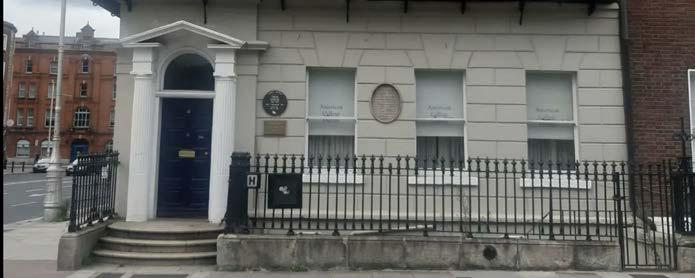

To learn more, book your visit to historic Oscar Wilde house today. They are a nonprofit organisation. All income generated from the tours, events and online store goes to the building’s restoration fund. Tel: +353 16768939
American College, 1 Merrion Square W, Dublin, D02 NH98, Ireland












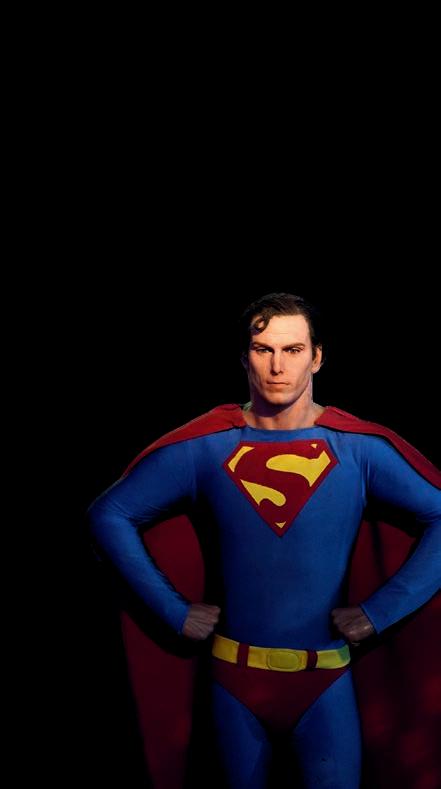

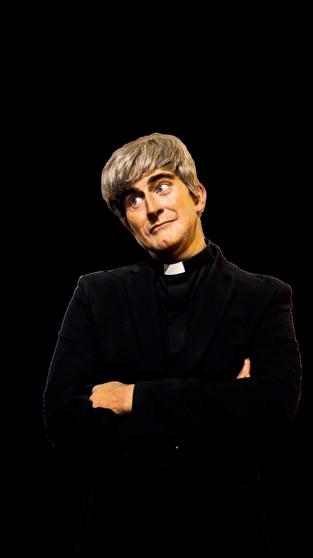

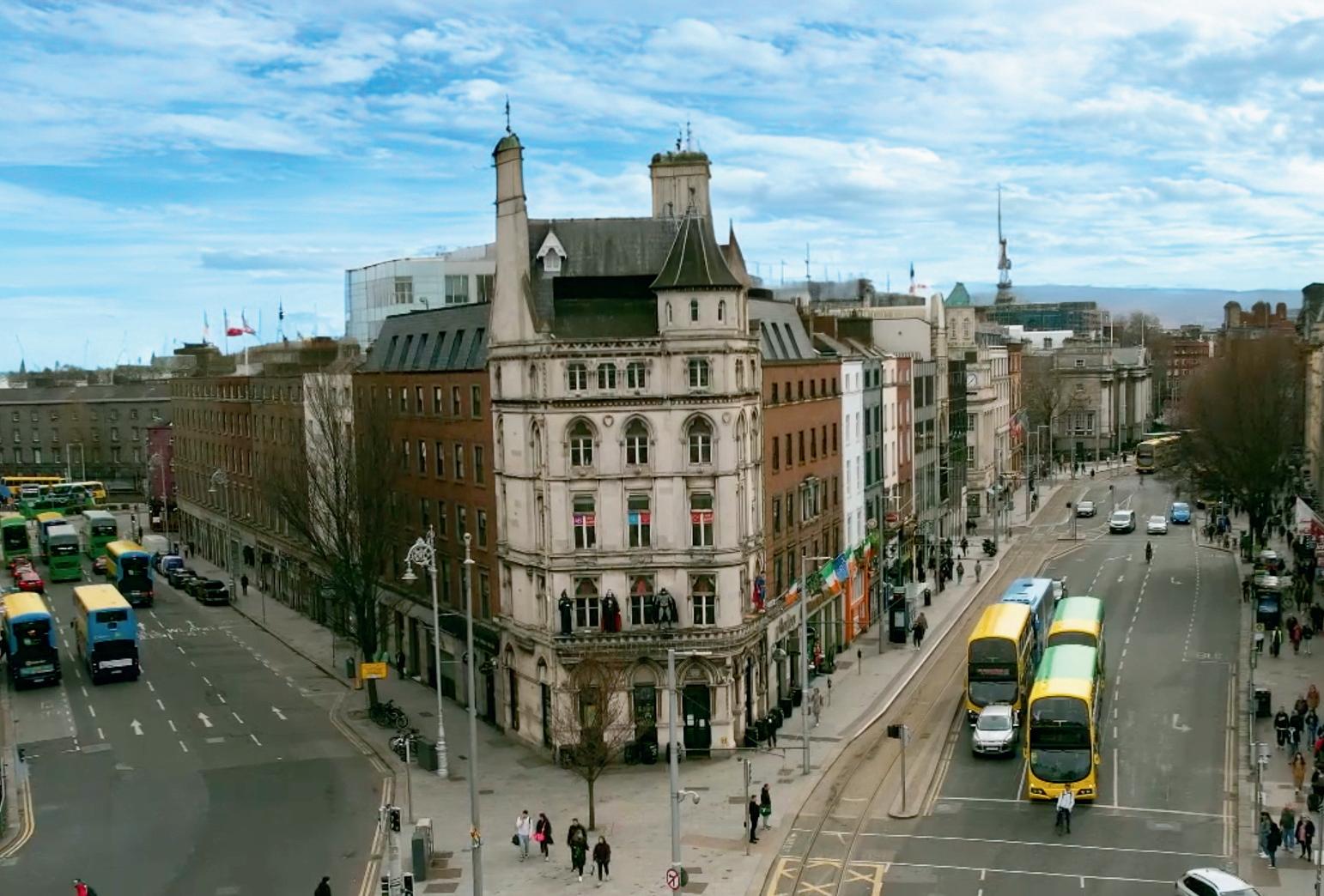



1. MUSEUM OF LITERATURE IRELAND (MOLI)
Delve into Dublin’s literary history and get better acquainted with giants like W.B. Yeats, James Joyce and Oscar Wilde. A trip to the Museum of Literature Ireland (MoLI) on St. Stephen’s Green is a great way to learn the tales behind the writers and their work.
2. WINDMILL LANE RECORDING STUDIOS

You may think you know Dublin, but how much of it have you really uncovered? It’s time to make the most of the unique blend of culture to be had in the capital.
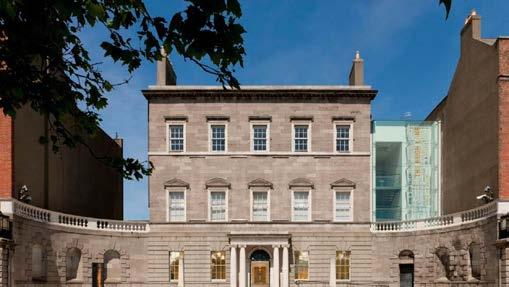
Head to Windmill Lane Recording Studios in Ringsend for a slice of local musical history. A familiar name in the world of music, the Rolling Stones recorded ‘Voodoo Lounge’ here, Lady Gaga laid down tracks for ‘Born This Way’, and Kylie Minogue worked on ‘Fever’.
3. CHESTER BEATTY
On the grounds of Dublin Castle, Chester Beatty is a museum and library that will take you on a global journey. You’ll see Asian paintings, North African costumes and Middle Eastern manuscripts as you hop across continents and centuries of cultural tradition. American mining engineer Sir Alfred Chester Beatty left this amazing collection to Ireland after his death in 1968.
4. MARSH’S LIBRARY
Lose yourself in Ireland’s oldest library, where regulars included famous writers like Bram Stoker and Jonathan Swift. As you gaze upon the 25,000 rare books at Marsh’s Library you can easily imagine days gone by, with many still in the spot where they were first placed in the 1700s. Come midnight, the ghost of Archbishop Narcissus Marsh is said to rummage through the bookcases.
5. EPIC THE IRISH EMIGRATION MUSEUM
Make your way to the striking CHQ Building overlooking the Liffey to immerse yourself in the experiences of Irish emigrants. At EPIC The Irish Emigration Museum, you’ll discover the past as it’s brought to

life through imaginative visual displays and interactive experiences. Explore Ireland’s struggle for independence, and witness the letters of thousands of Irish emigrants lost to the Great Famine. You can even trace your own ancestry at the museum’s Irish Family History Centre.
6. CROKE PARK STADIUM TOUR, SKYLINE TOUR & GAA MUSEUM
Go behind the scenes at Croke Park, the home of Irish sport. On the Stadium Tour you’ll venture pitchside, to Hill 16 for amazing views and beyond. Snap a selfie on the team bench and soak up the heritage of this iconic arena. You can take your visit to new heights with a Skyline Tour to see jaw dropping views as you move along a rooftop open air walkway.
7. HUGH LANE GALLERY
The Hugh Lane Gallery is a must for art lovers, with one of Ireland’s most exciting collections of modern and contemporary work. Impressionist paintings by Monet and Pissarro keep company with the creative mess of Francis Bacon’s reconstructed studio, donated after the painter’s death and relocated from London. Even the dust was catalogued and carefully put in its proper place.
8. JAMES JOYCE CENTRE
Dedicated to the literary icon, the James Joyce Centre should be on the ‘to do’ list for any fan of the written word. Get involved with the interactive display of his most well-known work ‘Ulysses’ as it brings the novel to life.

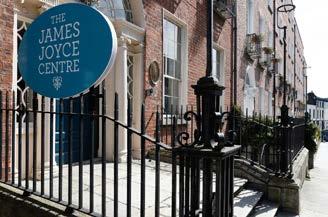























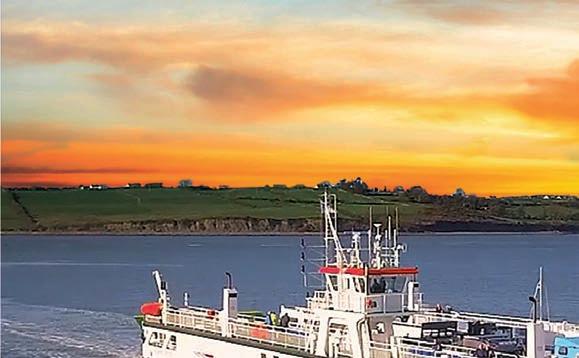

















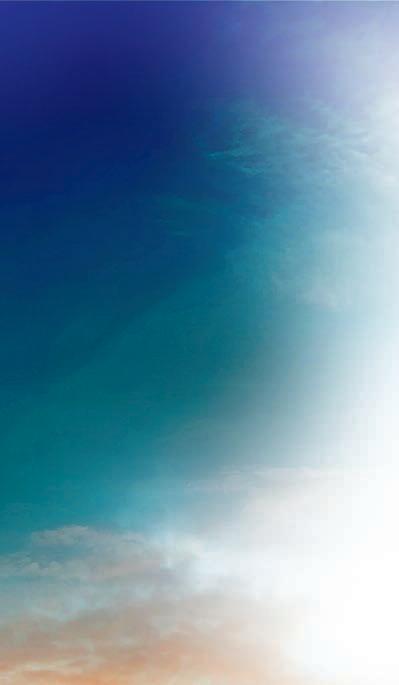




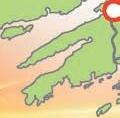

















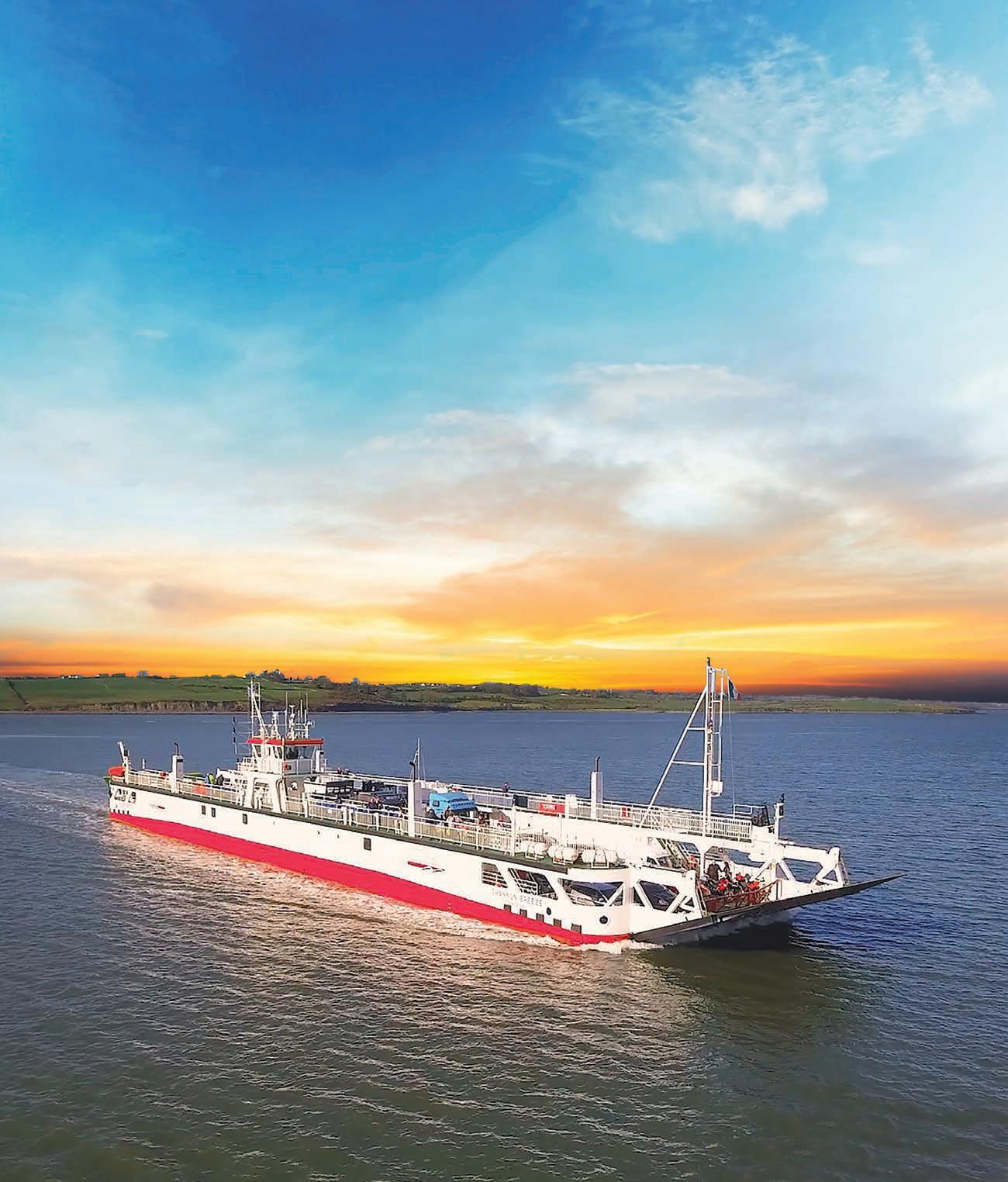
CEO of Tourism Ireland, Alice Mansergh, on the many reasons why the island of Ireland is on visitors’ bucket lists.
In conversation with Meg Walker

We’re excited to elevate brand Ireland in 2025. Typically, people who are thinking of coming here are also thinking of Scotland, Iceland or Norway, so it’s about highlighting why visitors should choose this island. We’ll be making the most of big sporting moments, such as the 153rd Open at Royal Portrush in July and the American College Football Classic in August, or ‘Farmageddon’ as it’s Iowa State vs Kansas State (a reference to the agricultural roots of both colleges); and
we’ve got our first NFL game with the Pittsburgh Steelers playing in Croke Park in Dublin. Then there are lots of festivals to get behind, starting with the St. Patrick’s Day celebrations, and we’ll continue building on our Home of Halloween campaign, which highlights another major Irish festival at the other end of the year. Over 200 million people around the world saw the campaign, learning that Halloween originated in Ireland over 2,000 years ago, and last October saw a boost in


overseas visitor spend. It’s a partnership between us telling that story, with Fáilte Ireland and Tourism NI working with local councils on wonderful festivals like Púca or Derry Halloween.
Slow Tourism Month will be kicking off in June. Sustainability is increasingly on people’s minds. They’re willing to fly here but once they’re on the island, 50% of potential visitors say they’d pay more for sustainable experiences, transport and accommodation once here. Car hire companies are offering EVs to a greater extent, while one of the most visited pages on our website is the ‘How to Travel Ireland by Rail’ page and there are wonderful itineraries you can do. For example, from Belfast Grand Central Station, which is now connected to Dublin hourly, you can get to Derry, Mussenden Temple and Castlerock. Michael Palin called the Coleraine to Derry route one of the world’s greatest train journeys. Then in the south, you can get out to Galway, and from there by boat to the Aran Islands, or down to Waterford and along the greenways. So, it’s about helping people unlock all those alternative ways to get around and spend a little bit longer in communities and nature.
We love our ambassadors sharing their own stories and connections.
Dermot O’Leary’s Taste of Ireland aired last year and is still available on ITV Player. O’Leary is a well-loved TV presenter in Great Britain but not everybody knows he has Irish roots. The diaspora story is told with such pride in places like the USA and Canada, but there’s a huge a population in Great Britain with Irish connections.
Dermot was a perfect ambassador because his parents moved from Wexford to Essex decades ago and he grew up with those strong Irish connections. The five-part series sees him travel from Cork to Wexford, Dublin and Belfast and he’s exploring the culture, scenery and culinary scene. His dad played hurling for Wexford and Dermot tries out the sport there.
Looking at our competitiveness is important, particularly when it comes to how we’re viewed in European markets. Seven out of ten US visitors think a holiday here will be good value and that’s partly driven by exchange rates and their own experience of travel costs within the US. But it’s a slightly different picture if
you go to markets like Great Britain or Germany. There, people are more value conscious. While it’s hard to change the costs of doing business, we do need to dial up how much people want to come here. You want people to feel that while Ireland may not be the lowest cost destination, they’ll get huge value from it as a place where a lifetime of memories are made and put it high on their bucket list. Then there are complexities like the Electronic Travel Authorisation (ETA) being introduced. This is a UK-wide government policy related to immigration but it applies to Northern Ireland. If you’re coming from the EU or North America, and you land into Dublin, to travel into Northern Ireland, you now need this ETA. So, there are concerns around introducing that extra step.
Every area of the island, if you just slow down, there are wonderful things to see and do. Taking the time to find a walk through nature or finding a place that’s going to unlock the history of that area for you, is so worthwhile. There isn’t an area of the island I’ve been to where there wasn’t something jawdropping to learn about or enjoy and it’s just about making sure you’re not speeding along a motorway, never getting to stop and experience it fully or talking to local people.
There are incredible food experiences around Ireland that are a joy to discover. Ireland isn’t immediately associated with food in the minds of people overseas in the way that France or Italy might be. But if you
consider what people do associate with Ireland, they tend to think about rolling green pastures and waves lashing in. Making that connection between our landscape and the food that comes from it and the amazing producers all across the island, is really inspiring. There’s the Burren Smokehouse, the Michelinstarred Homestead Cottage in Doolin, and NearyNógs on the Mourne Coast making chocolate from cocoa beans, incorporating things like gorse or seaweed from the local environment. I’ve enjoyed discovering some of those culinary experiences.
The islands offer unique scenery and experiences. You’ve got everything from the Skelligs up to Tory Island on the Wild Atlantic Way, with over 100 islands in Clew Bay alone. Then Rathlin on the north coast, the Saltees off Wexford with their puffins and from Dublin you can get out to Dalkey Island, where there’s a church that’s more than 1,000 years old. Inland, we have beautiful little islands with castles on them in Roscommon and Cavan and along the inland waterways.
I have a couple of staycations planned. I’ll be heading to the Mourne Mountains and to Mayo later in the summer with family. I’m always inspired to see the professional surfers at Mullaghmore in Sligo or Donegal. I’m not particularly sporty but I have two kids, aged seven and eleven, and at some point, we must try surfing, maybe at the National Surf Centre in Strandhill in Sligo or somewhere on the northern part of the Wild Atlantic Way.
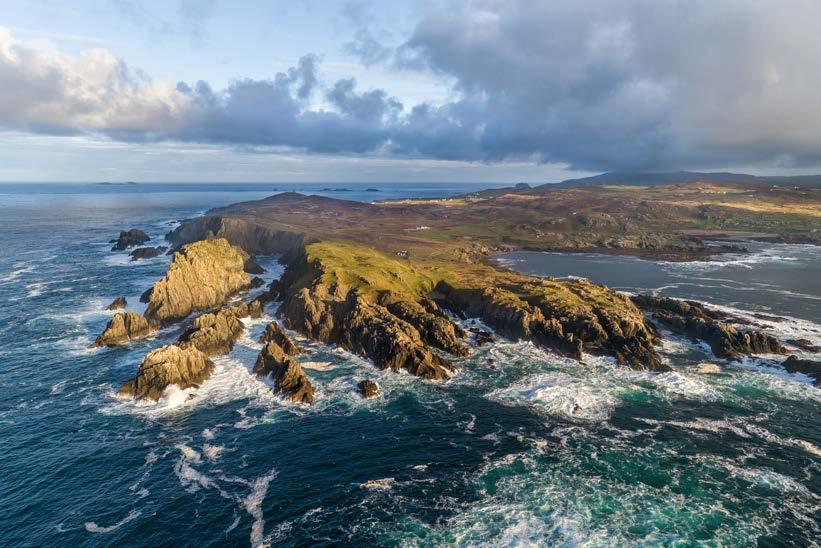
Dublin is a place that takes its whiskey seriously
From the city’s historic distilleries to the newer producers, the stuff made here is considered to be some of the best in the world. The whiskey scene in Dublin has also experienced a big resurgence over the last few years, with the Liberties neighbourhood seeing a slew of new distilleries popping up.
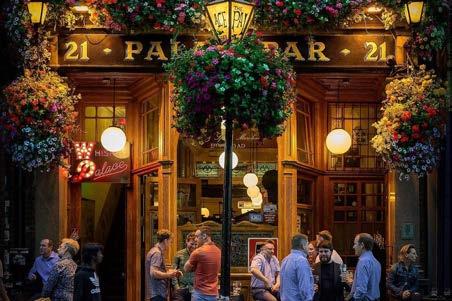
With its classic Victorian features, mahogany partitions and stained-glass windows in the rear, the Palace Bar is the quintessential Dublin pub and fans of whiskey are always welltaken care of here. There are over 100 varieties behind the bar, including their very own Palace Bar whiskey, a single malt aged for 12 years.
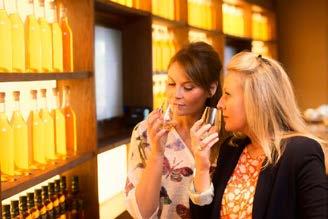
If you want to learn all about the history of Irish whiskey and the process that goes into making it, a tour of this museum is an excellent option. As the Irish Whiskey Museum isn’t affiliated with any one brand, you’ll get all the insider knowledge about the major labels, as well as a tasting of three different whiskeys at the end of it.
Horseshoe Bar in The Shelbourne
If ever there were a place to get cosy in a corner seat and sip a glass of whiskey, the atmospheric Horseshoe Bar at the Shelbourne Hotel is it. With its glossy red leather seats and intimate tables, this bar makes a stylish backdrop for a whiskey sour or a Manhattan. Every Thursday and Sunday they hold whiskey tastings at 6.00pm, featuring four whiskeys from each province in Ireland.

The whiskey menu at L. Mulligan Grocer’s in Stoneybatter is divided into four sections; smoky, rich, fruity and spicy. You’ll find a tipple to suit every budget, from the well-priced classics to some very special varieties. If you’re overwhelmed by the length of the menu, have a chat with one of the friendly barkeeps who can guide you in the right direction.
If you want to have a bit of fun with a whiskey rather than sit down for a formal tasting, Wellington Quay’s Bison Bar is the place to be. They are well stocked with loads of interesting bottles, particularly when it comes to American bourbons. But you’ll find all the Irish favourites there too, which you can enjoy on one of the saddle-shaped bar stools.

Everything there is to know about whiskey, the people in the Celtic Whiskey Shop can tell you. You’ll find everything you could possibly want within these walls, from the exceptional rarities to the new kids on the block. Even better, they sell individual drams of the very pricey whiskeys, so, you can ‘have a sip’ without breaking the budget. There’s also a bar on-site, the menu featuring no less than nine variations on an Old Fashioned and specialised whiskey tastings on offer.
On the edge of St. Stephen’s Green , the sleek underground bar, Nine Below, has a speakeasy vibe, with plush banquettes spread between four different rooms. The whiskey menu is impressive, with rare Irish bottles available by the glass, like Middleton Very Rare and Bushmills 21-year-old single malt.
Settle in at Brooks Hotel’s discretely elegant Jasmine Bar and take your pick of some of the best whiskeys from all over the world. There are 100 to choose from, so your best bet is a whiskey flight selected by the experts behind the bar.
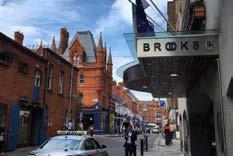
Set on the edge of the Liberties with plenty of Dublin distilleries nearby, 57 the Headline is in a prime location for a whiskey tasting. They have a good selection on offer but you can always avail of a tasting tray if you can’t make your mind up.


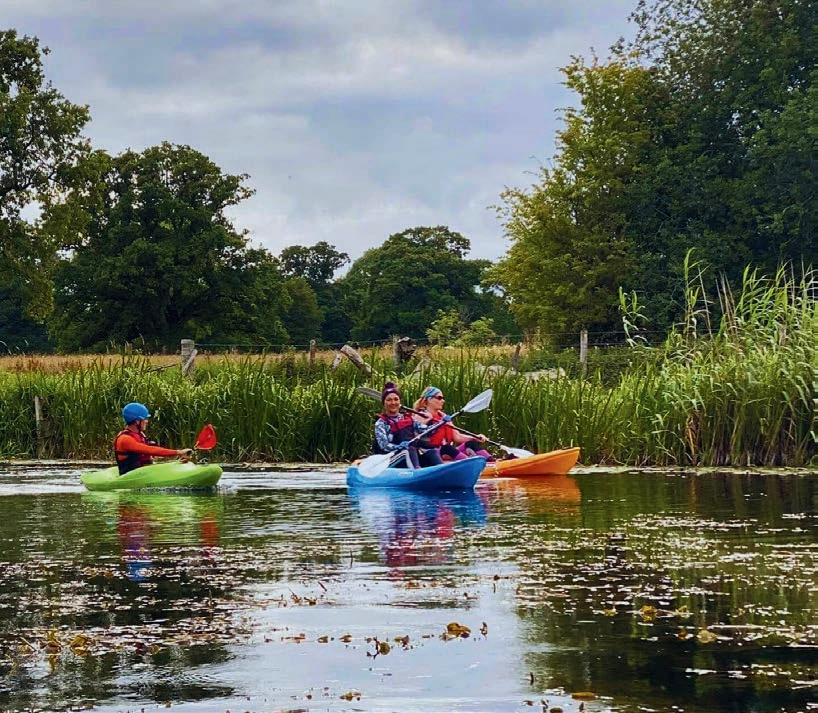
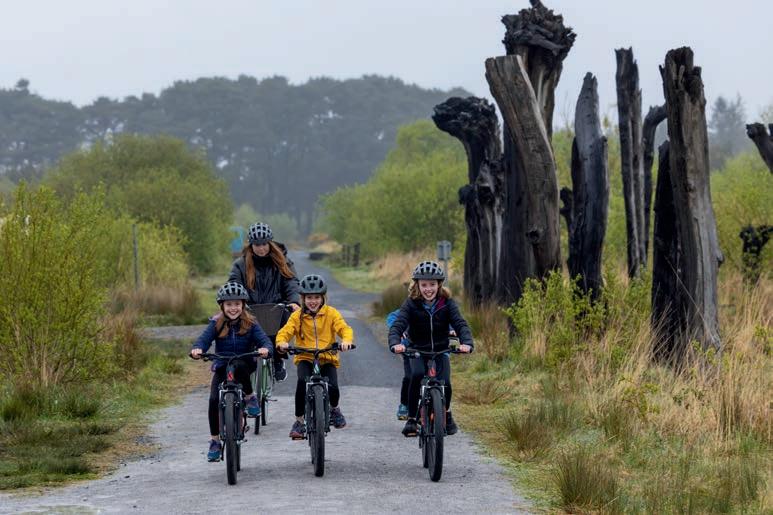
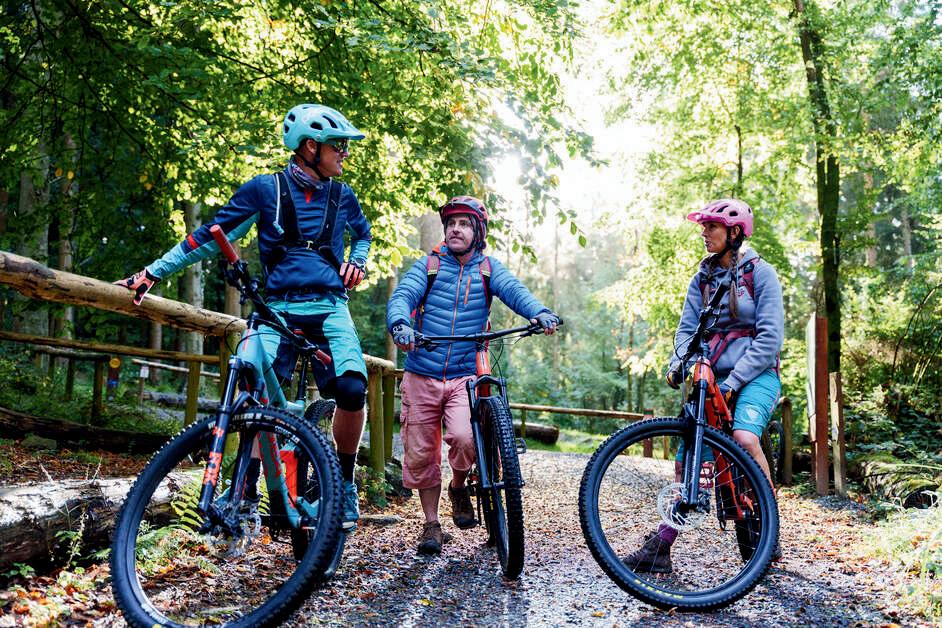
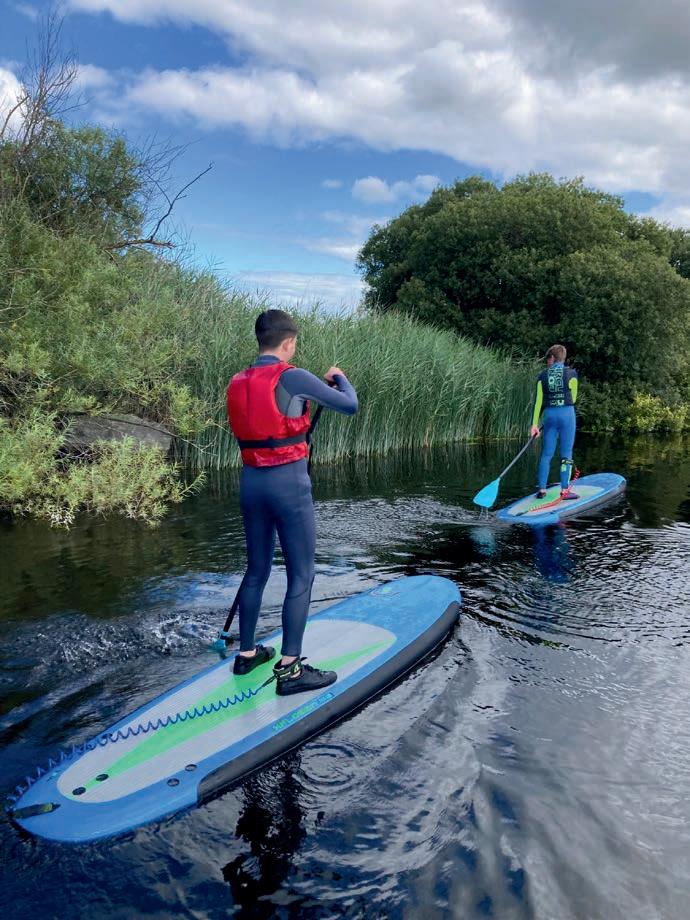

Fionn Davenport is one of Ireland’s best-known travel writers. He has written multiple guides for Lonely Planet, including working on every edition of the Ireland and Dublin guides since the mid-1990s.
As you’d expect from a capital, most of the country’s cultural heavy hitters are here, but unlike other cities the majority are free to visit. You’ll find three branches of the National Museum of Ireland, the country’s most important cultural institution, as well as Ireland’s most prominent galleries, which don’t cost a cent to explore. You can even visit the president’s official residence for free. Here’s how to enjoy Dublin’s rich artistic and cultural patrimony without paying a penny.
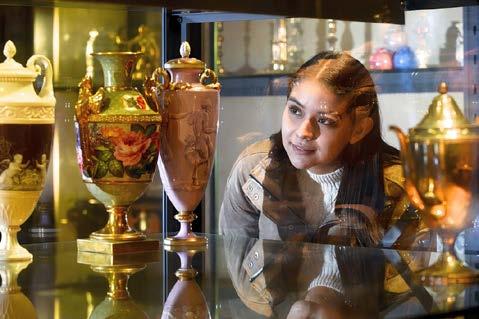
You don’t need to be a printing enthusiast to get a kick out of the National Print Museum, housed in what was once the Garrison Chapel of the 19th century Beggars Bush Barracks in Dublin 4. The history of printing in Ireland is told in fascinating detail through displays and presses, including a replica of the Gutenberg press used in the TV series The Tudors. The museum also has one of 200 original 1916 Proclamations, alongside a Wharfedale press used to print the revolutionary declaration in secret ahead of the Easter Rising.
The original home of the National Museum of Ireland is this handsome Victorian Palladian style building on Kildare Street, which opened in 1890. Today, it’s where you’ll find the museum’s archaeological collection, including some of Ireland’s bestknown treasures like the Ardagh Chalice and the Tara Brooch.
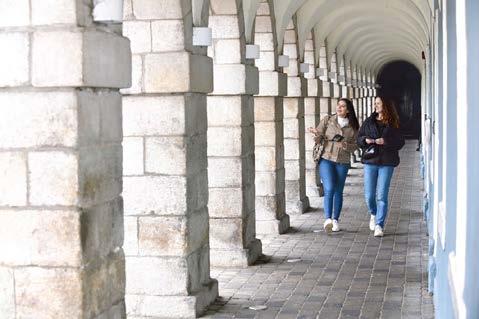
Once the world’s largest military barracks, this impressive neoclassical building on the north side of the Liffey is home to the National Museum of Ireland, Collins Barracks. The diverse collection includes exhibits on Irish soldiering from 1550 to the present day, the story of the Easter Rising, a whole section dedicated to changing fashions over the last 250 years and a permanent exhibit on designer Eileen Gray
The third branch of the National Museum of Ireland in Dublin is the Natural History Museum, which opened in 1857 with a ribbon-cutting by Scottish explorer Dr. David Livingstone, who later disappeared in Africa only to be found by Henry Stanley in 1871 with the famous line, “Dr Livingstone, I presume?” The collection at the ‘Dead Zoo’ numbers around 10,000 exhibits, with highlights including the skeletons of three 10,000-year-old Irish elk and a 20m-long blue fin whale found on a County Sligo beach.

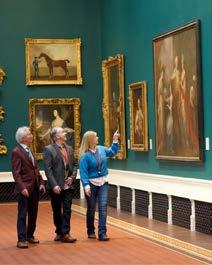

Ireland’s most important art collection lines the walls of the National Gallery of Ireland on Merrion Square. The four wings cover 500 years of European and Irish art, with some of the biggest stars represented: Vermeer, El Greco, Goya, Caravaggio, Rembrandt, Monet and Picasso. The collection of Irish art is exceptional, not least the works of Jack B Yeats, which includes some of his most famous paintings like ‘The Liffey Swim.’ One of the gallery’s best-known paintings, Frederic William Burton’s ‘Hellelil and Hildebrand, the Meeting on the Turret Stairs,’ is so sensitive to light that it is only displayed twice a week, on Thursdays from 11.30am-12.30pm and Sundays between 2-3pm.
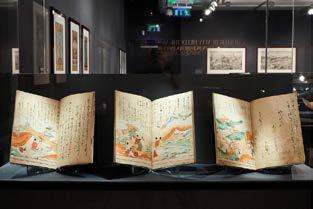
One of the world’s most important collections of rare manuscripts and artistic treasures is in the wonderful Chester Beatty, on the grounds of Dublin Castle. Spread across two fascinating floors, the exhibits include the world’s second-oldest biblical fragment (after the Dead Sea Scrolls), the best collection of Chinese jade books on the planet and perhaps the most beautiful selection of illuminated Qurans outside of the Middle East. In between you’ll find beautiful Japanese woodblock prints, Chinese paintings, medieval manuscripts and Buddhist texts. That they’re in Ireland at all is all thanks to mining magnate and lifelong art collector Sir Alfred Chester Beatty (1875-1968), who established the museum in 1954 and bequeathed the whole collection to the Irish State upon his death.

Home to a world-class collection of modern and contemporary art, the Hugh Lane Gallery was established in 1908 by art dealer and collector Sir Hugh Lane The gallery is best known for the Lane Bequest, a collection of 39 Impressionist paintings by the likes of Renoir, Manet, Degas and Monet. Although now owned by the National Gallery in London, 27 of the paintings are on permanent exhibit in Dublin; 10 of them are shared between the two galleries, with the remaining two staying in London.
Ireland’s most important collection of modern and contemporary art is stored within the walls of the Irish Museum of Modern Art (IMMA) at the Royal Hospital Kilmainham, west of the city centre. The mainstay of the collection features Irish and international art from 1940 onwards, including works by Joan Miró and Pablo Picasso as well as Irish artists such as Dorothy Cross and Robert Ballagh.
With more than 12 million books, photographs and documents, the National Library of Ireland is the country’s library of record. The big attraction is the main reading room, a large space that features in James Joyce’s Ulysses (where Stephen Dedalus gives his poorly attended lecture on Shakespeare and Hamlet).
More than just a small museum dedicated to the works of Dublin’s most famous author, the James Joyce Museum in Sandycove is a living piece of Joycean history. It’s housed in one of the famous Martello Towers built in the early 19th century to ward off a possible Napoleonic invasion, and it is where Joyce spent six nights in 1904. It must have made a bit of an impression, because he opted to use the tower for the opening scenes of Ulysses.
The official residence of the president of Ireland, Áras an Uachtaráin is free to visit by guided tours on most Saturdays. You can pick up a first-come, first-serve ticket (be sure to bring photo ID) from the Phoenix Park Visitor Centre for one of the tours, which go at 10.00am, 11.15am, 12,30pm, 1.45pm and 3.00pm. During the 75-minute tour you’ll learn the history of the house, which was built as the viceregal lodge in 1751 based on a design by amateur architect Nathaniel Clements. The tour takes you through the official function rooms and into the gardens; you’ll also hear how
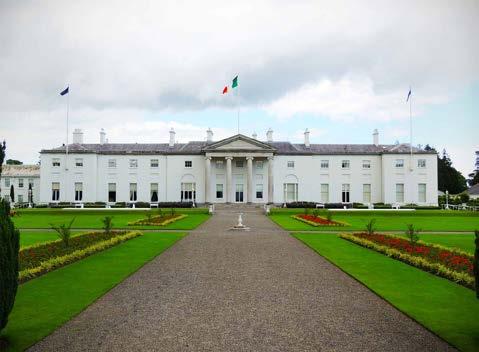

The dozens of bridges that span the River Liffey are a key feature of everyday Dublin life. With a rich history of local traditions surrounding the waterway, it’s no surprise that each bridge has an interesting story to tell.
1. Ha’penny Bridge
Perhaps the most famous of them all, the Ha’penny Bridge is Dublin’s oldest pedestrian crossing. Built over two centuries ago, it takes its name from the original toll that was collected at turnstiles on either side. Nowadays it connects Bachelor’s Walk to Temple Bar, two of the city’s most vibrant areas when it comes to shopping, dining and people watching.
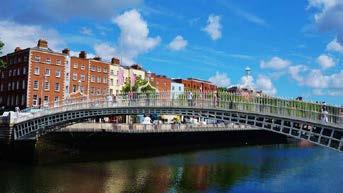
2. Mellows Bridge
two sleek bridges in town designed by Spanish architect Santiago Calatrava, with the second being the James Joyce Bridge, a tribute to another literary giant.
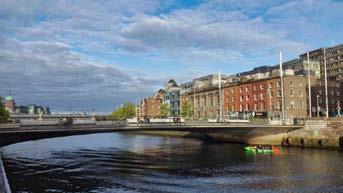
its clean linear design, is a stone’s throw from the Abbey Theatre. Not only a useful crossing point for pedestrians, it also offers up a stunning view of the Liffey.

4. Seán Heuston Bridge
Seán Heuston was the youngest of the rebel leaders to be executed (at only 25 years of age) after the 1916 Rising. One of the many landmarks across the city named for figures of the
6. Millennium Bridge
Since its opening day on December 20 1999, the Millennium Bridge has provided a quick and handy route for pedestrians between the cultural haven of Temple Bar and Dublin’s Italian Quarter. Winner of a design competition with 153 entries, the lightweight steel and concrete design provides a nice modern contrast to its more ornate neighbour, the Ha’penny.
This bridge has served the city since 1688 and is known locally as the ‘old man of the river’. The present version was constructed between 1764 and 1766, making Mellows Bridge the longest surviving arc in Dublin. Virtually unchanged over the centuries, you can admire its three elegant arches from either the Liberties on the south side or Smithfield on the northern bank.

Dedicated to modernist Dublin writer Samuel Beckett, this contemporary stunner opened to the public in 2009. Crossing the river between the Convention Centre and Sir John Rogerson’s Quay, the sculptural design suggests the Irish national symbol of a harp. This is one of

Just a five minute walk from Phoenix Park and Dublin Zoo, the National Museum of Ireland - Decorative Arts & History at Collins Barracks is also a short stroll away. Fittingly, the bridge is situated opposite Dublin’s largest railway station, also named after Heuston.
5. Rosie Hackett Bridge
The newest addition to the list, this bridge opened in 2014 and is the first in the city to be named after a woman. Dubliner Rosie Hackett was a trade union activist and was also part of a rebel group that occupied St. Stephen’s Green during the Easter Rising of 1916. The bridge, with
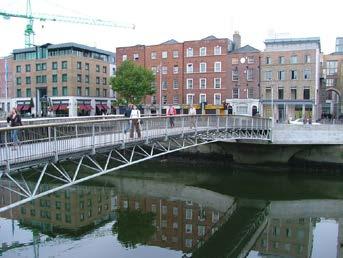
complete with sandstone balustrades runs right through the centre of the city connecting O’Connell Street to Dublin’s Southside. The namesake of nationalist leader Daniel O’Connell, it’s the only traffic bridge in Europe wider than it is long. Stroll across the classically designed three arch span and check out the lamps on the central island. With their distinctive five lanterns, they’ve recently been restored to their full glory.


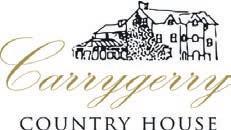
Carrygerry Country House, near Newmarket-on-Fergus and just minutes away from Shannon, is a 200 year old Manor tastefully restored to its former glory, set in a idyllic mature country setting. On arrival, you will experience a relaxed and unique country house atmosphere with open fires and antique furniture. There are 11 bedrooms, all individually styled in keeping with the house.
We cater for Birthdays, Anniversaries, Weddings, Christenings, etc.


Our Conservatory Restaurant is open for Dinner from Saturday from 6.30pm to 9.30pm. Our Á La Carte Menu fresh, locally sourced produce and a complete well balanced
Near Newmarket-on-Fergus and just minutes away from Shannon, is a 200 year old Manor tastefully restored to its former glory, set in a idyllic mature country setting. On arrival, you will experience a relaxed and unique country house atmosphere with open fires and antique furniture. There are 11 bedrooms, all individually styled in keeping with the house.
Set Dinner Menu for €29 (3 courses plus Tea/Coffee) is served from 6.30pm to 9.30pm Tuesday to Saturday.


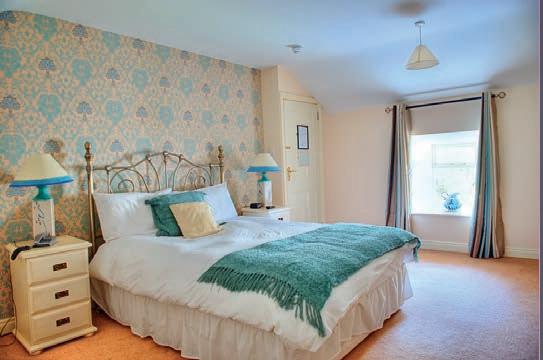

Our Conservatory Restaurant is open Thursday, Friday & Saturday evenings for dinner from 5.00pm-8.30pm. Sunday Lunch served from 1pm-3.30pm. Our dishes offers fresh, locally sourced produce and a complete well balanced menu
Set Dinner Menu for €40 (3 courses plus Tea/Coffee) is served
Carrygerry Country House, near Newmarket-on-Fergus and just minutes away from Shannon, is a 200 year old Manor tastefully restored to its former glory, set in a idyllic mature country setting.
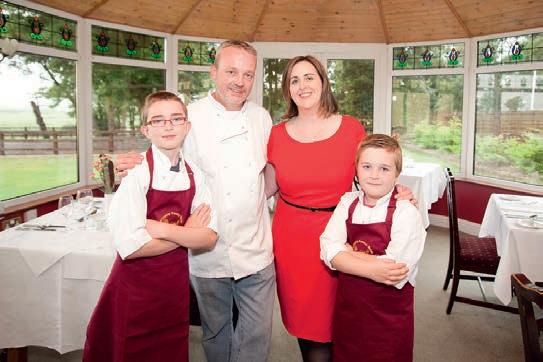
Our Conservatory Restaurant is open for Dinner from Tuesday to Saturday from 6.30pm to 9.30pm. Our Á La Carte Menu offers fresh, locally sourced produce and complete well balanced menu.
Our Conservatory Restaurant is open for Dinner from Tuesday Saturday from 6.30pm to 9.30pm. Our Á La Carte Menu fresh, locally sourced produce and a complete well balanced

On arrival, you will experience a relaxed and unique country house


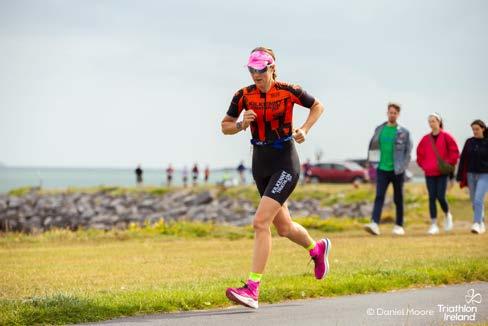
The highly anticipated Triathlon National Series returned in May 2025, bringing another summer of racing around Ireland with 16 events running from May to September. Set against some of the country’s most stunning backdrops, this year’s series promises something for everyone – from firsttimers to seasoned competitors.

With races in all four provinces, athletes of all levels can choose from a range of distances, unique courses and scenic locations to suit their goals. Ambitious triathletes will aim for the competitive National Series title, which is awarded at the annual Triathlon Ireland Awards.
The calendar features some of the best triathlon courses in Ireland, with the return of iconic triathlons, including the Skerries Triathlon and Dublin City Triathlon. Hundreds of participants make their way to Skerries every year for a scenic beach start, coastal cycle and a run through the charming marina town. Now in its 42nd year, Skerries is one of the longest-running and historic triathlons in Ireland – a true cornerstone of the sport’s legacy. The highly popular Dublin City Triathlon returns in August, with the swim kicking off in the
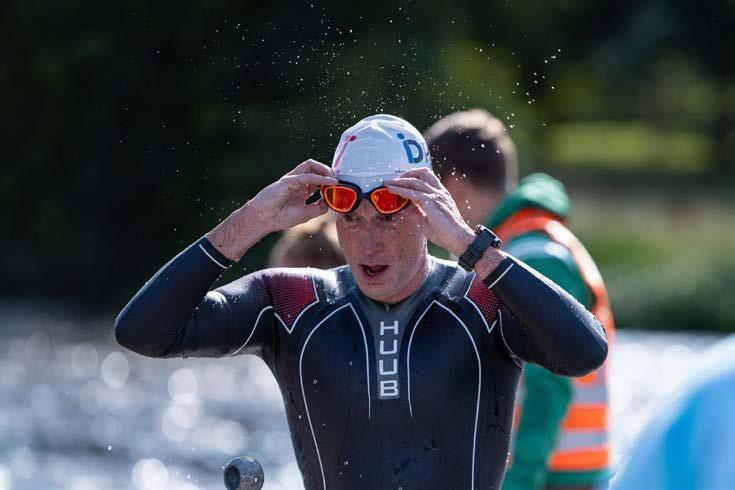

River Liffey next to Phoenix Park. The scenic cycle is followed by a run, weaving through the famous park, providing a unique course in the heart of the city.
Many participants travel to races with family, friends, and their local clubs, creating a lively and supportive race day atmosphere. Local clubs provide a welcoming community, offering encouragement and motivation from the start line to the finish with supportive weekly training and motivational cheers. Clubs are at the heart of the triathlon community, adding an extra layer of
connection and encouragement. For many, the friendships and shared achievements become just as meaningful as crossing the finish line itself.
For the competitive triathletes, National Championship titles are up for grabs across various distance triathlons as well as aquabike and aquathlon. This year’s Sprint National Championships will take place in July, hosted by Two Provinces Triathlon in County Longford on the banks of the River Shannon.
The 2025 Triathlon National Series is the perfect way to experience the spirit of triathlon while exploring the very best of Ireland.

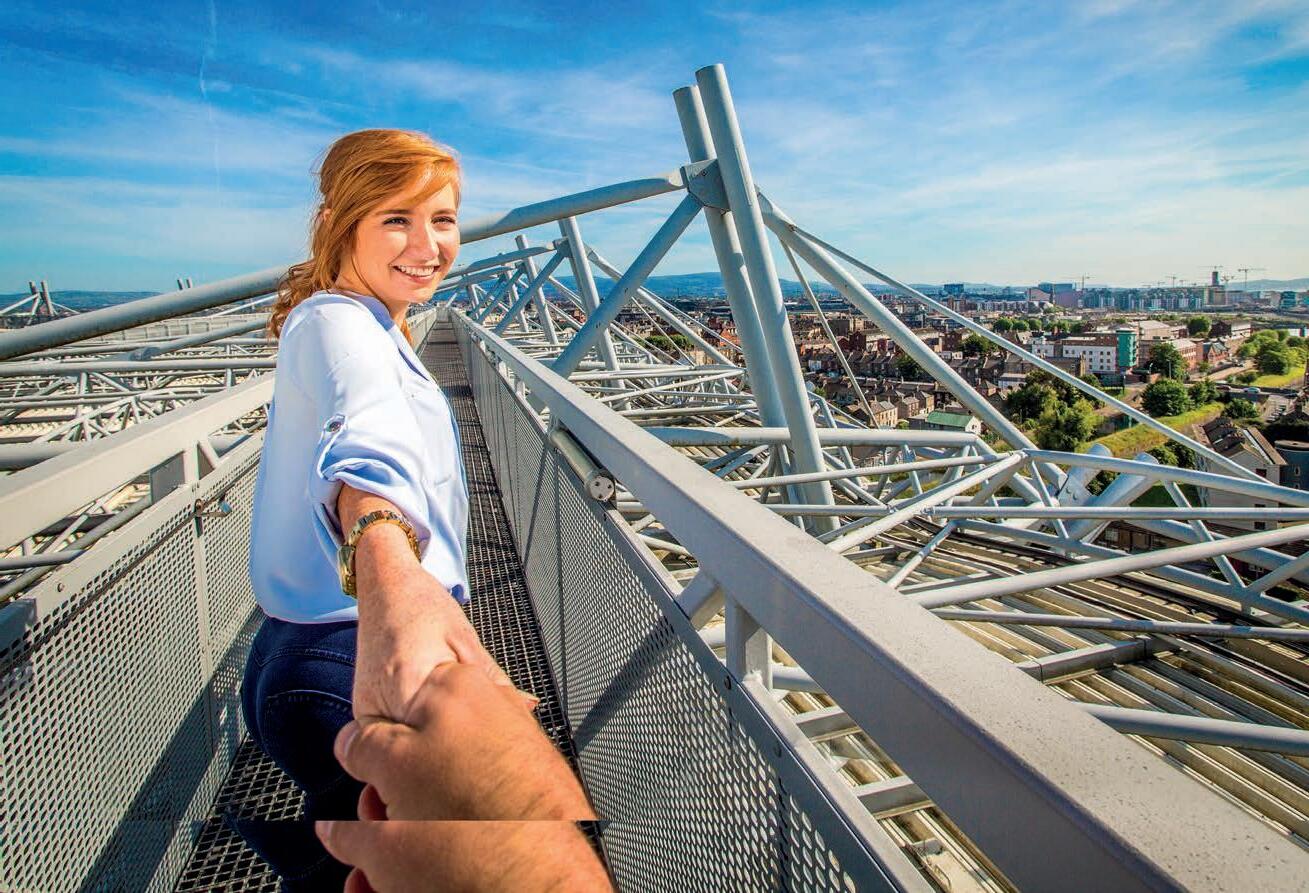

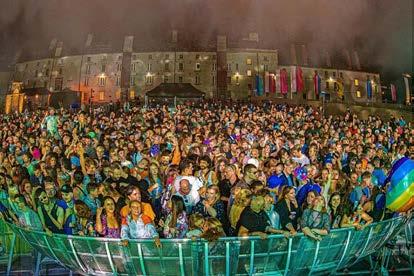
From friendly bars and terrific club nights to sea swims and organised hikes, LGBTQ+ visitors to Dublin will have plenty to do in a welcoming and safe environment.
A strong attitude of inclusivity means that that there is no easily identifiable LGBTQ+ quarter within Dublin as such, but rather a variety of vibrant shops, restaurants and bars scattered across the city offering the warmest of welcomes to all LGBTQ+ visitors.

Dublin’s oldest and biggest gay bar is The George, which has been serving the city’s LGBTQ+ community for over thirty years. Open seven nights a week with free entry Monday through Thursday, its biggest draw is Sunday’s Bingo with Shirley Temple Bar.
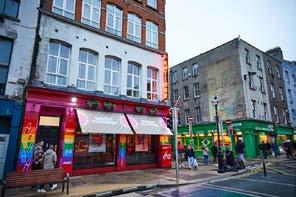
North of the Liffey, LGBTQ+ activist and performer Panti Bliss (or The Queen of Ireland, to give her full title) presides over Pantibar on Capel Street. There’s more of a pub vibe here than at The George, but that doesn’t mean that things can’t get a little wild in here too, particularly at weekends.
For something a little more sedate, there’s Street 66 on Parliament Street, which has really comfy oversized armchairs. The focus at this roots-influenced bar is on craft beer
and spirits, including many of the independent gins now being distilled in Dublin.
Outside of the city’s late-night bars most LGBTQ+ club nights in Dublin occur weekly or monthly, with dates and tickets usually advertised on social media.
Events to look out for include Profile at The Voodoo Lounge and Spinster at The Grand Social. Since launching in 2010, the Mother Block Party has grown to become the most successful and popular date on the city’s queer nightlife calendar, garnering almost legendary status among lovers of electronic, synth and disco.
Dublin’s annual LGBTQ+ Pride Festival has grown so big in recent years that it rivals St. Patrick’s Festival as a city-wide party. June is Pride Month, but most of the festival takes place over five days and includes familyfriendly celebrations, community zones, a huge parade and lots of music and food.
The Rainbow Swimmers are a sea swimming group who organise regular meetups at picturesque Seapoint in Monkstown, just a short train ride from the city centre.
If mountains are more your thing, then you’ll want to connect with the Out and About hiking group. They meet every Thursday and Sunday for hikes around Dublin and the Wicklow Mountains.
Out2Tennis, meanwhile, is Ireland’s gay tennis network, organising events and tournaments around the city. Although there are some pretty good players involved, the overall aim is to encourage members of the LGBTQ+ community to come together and play, regardless of their level.

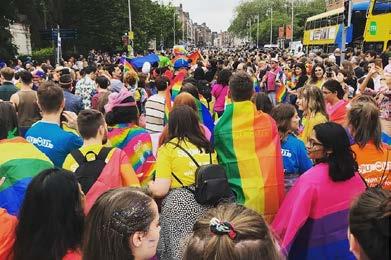
Ireland’s only LGBTQ+ film festival, GAZE celebrates the best in Irish and International queer cinema each summer with screenings, Q&As and workshops.
A handful of LGBTQ+ groups run outdoor activities that take full advantage of Dublin’s enviable location next to mountains and the sea.
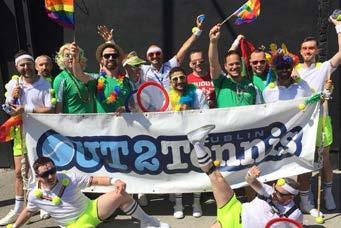
Embedded in Irish history are the stories of beloved LGBTQ+ figures who were among the first to fight the good fight. Visit the National Museum of Ireland, Collins Barracks and follow the Rainbow Trail through Irish LGBTQ+ history. Admire artefacts linked to modern LGBTQ+ activists, like the dress Dr Panti Bliss wore during her moving 2014 “Noble Call” speech in the Abbey Theatre detailing her experience of homophobia.
The National Library of Ireland also has the permanent online exhibition Living with Pride, which features over 2,000 photographs by architect and activist Christopher Robson, many recording Dublin Pride marches.
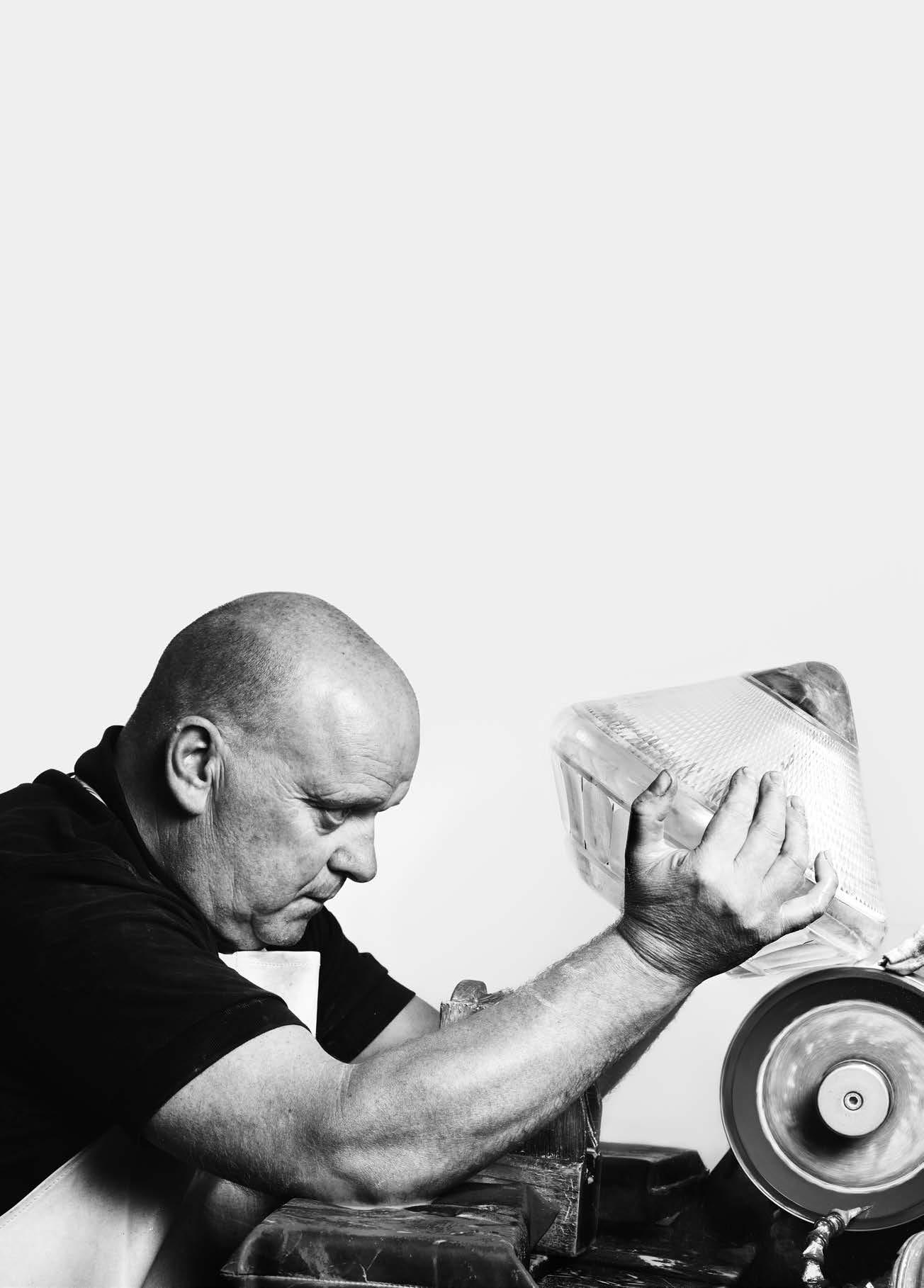
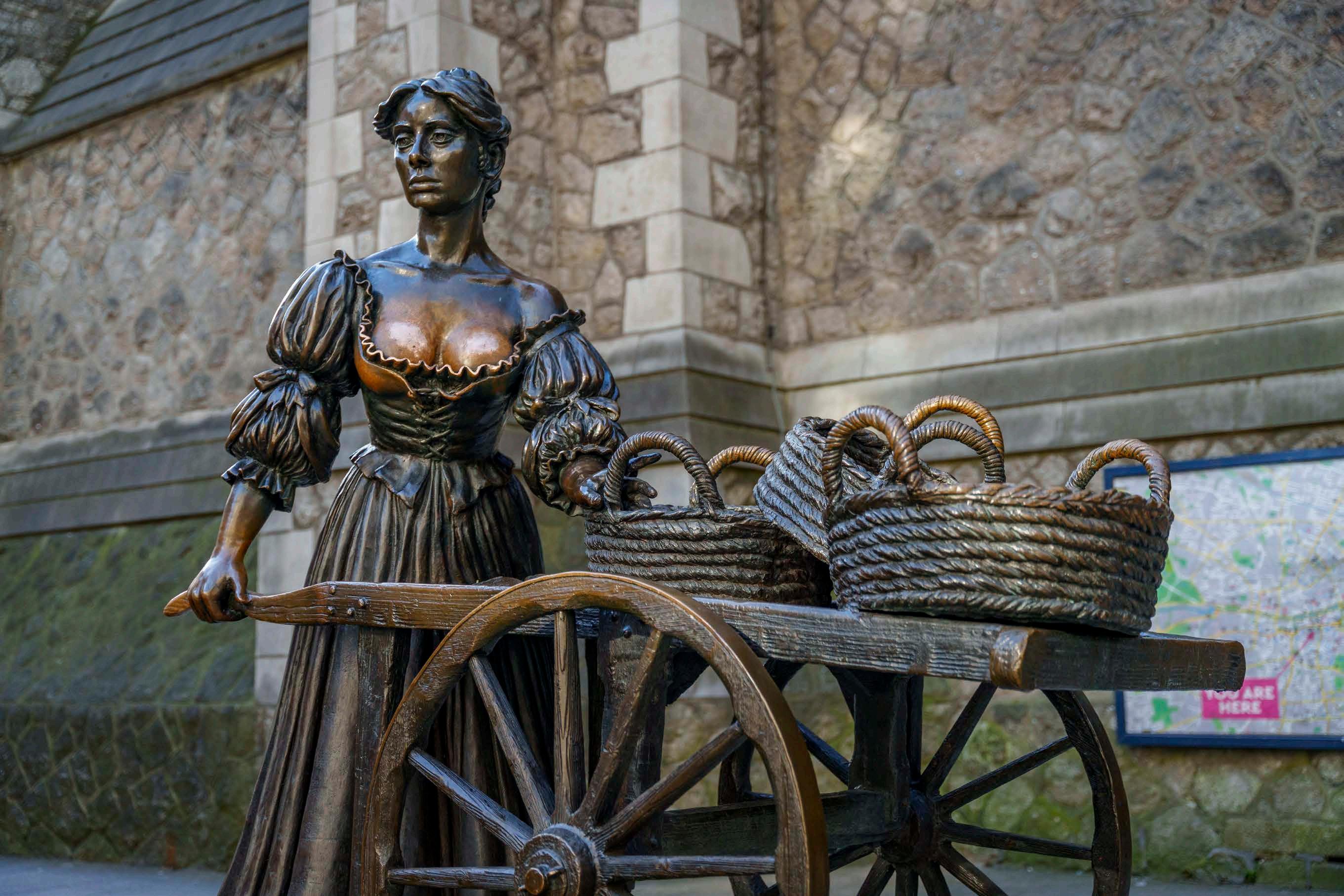

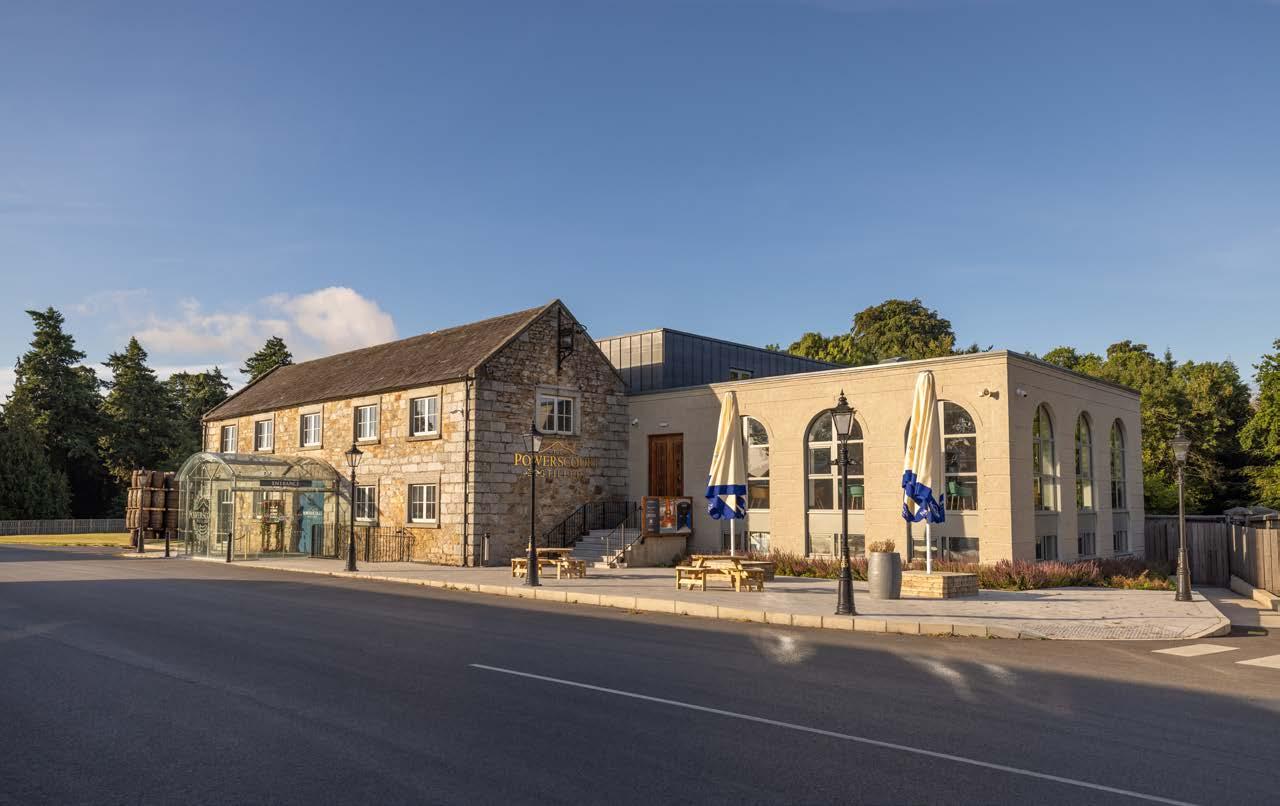
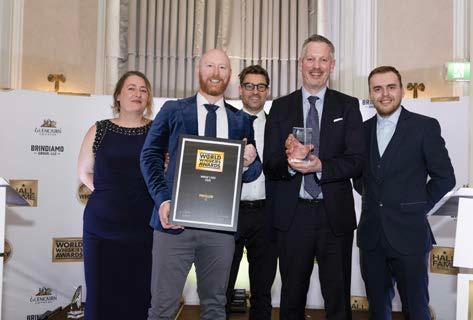
tucked beneath the majestic Sugarloaf Mountain, something truly special is maturing — and it’s not just the whiskey.
This year, Powerscourt Distillery is raising a well-earned glass to a momentous milestone, as their whiskeys—and the people behind them—have been honoured on the world stage.
The distillery proudly brought home ten prestigious awards at the 2025 World Whiskies Awards, including the coveted title of World’s Best Grain Whiskey for their Fercullen 15. It marks the first time a Wicklow whiskey has received this global honour — a proud moment not just for the distillery, but for all of Wicklow.
And while the spirits are winning accolades, so too are the spirits of the people behind them.
Local legend and whiskey visionary John Cashman was recently inducted into the Whisky Magazine Hall of Fame, becoming the 100th person ever to receive this recognition. A familiar face to many in Wicklow, John’s 27-year journey through the Irish whiskey industry has
taken him from Tokyo to Montreal, spreading the word and the warmth of Irish whiskey to the world. And yet, he’s never strayed far from home. When he’s not crafting award-winning whiskeys, John’s coaching local GAA and rugby teams, championing food and drink producers as Vice Chairman Wicklow Naturally, and helping to build a thriving, sustainable future for the region he loves.
“It’s an incredible honour,” John said of his induction. “But more than anything, I’m proud of the people I’ve worked with and the community that’s supported me every step of the way.”
It’s that same community spirit that drives Powerscourt Distillery’s commitment to sustainability, earning them the Icons of Whisky – Sustainable Distillery of the Year award. They’re leading the way
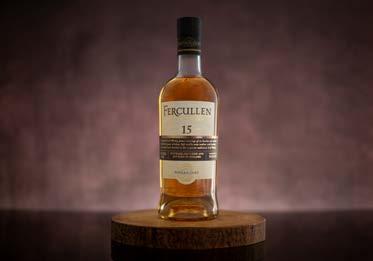
Visitors to Powerscourt not only get to taste some of Ireland’s finest whiskey, like the smooth and complex Fercullen Falls, recently named Ireland’s Best Blended, but they also experience the hospitality and heart that make this place truly unique.
Whether you’re a whiskey connoisseur or simply looking for an unforgettable day out in Wicklow, Powerscourt Distillery offers more than just a tasting—it offers a story of passion, place, and people worth celebrating.
So next time you find yourself on the scenic trails of Powerscourt Estate or gazing out over the gardens, make sure to stop by the distillery. Raise a glass, take a tour and savour the spirit of Wicklow — in every sense of the word.
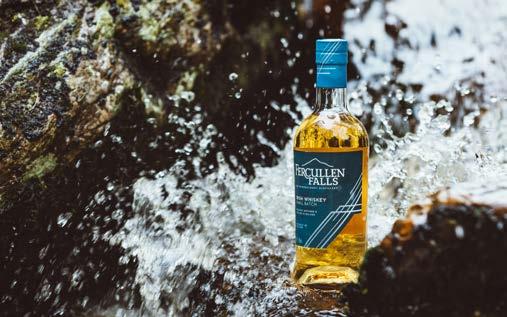

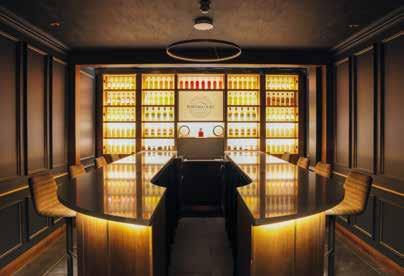




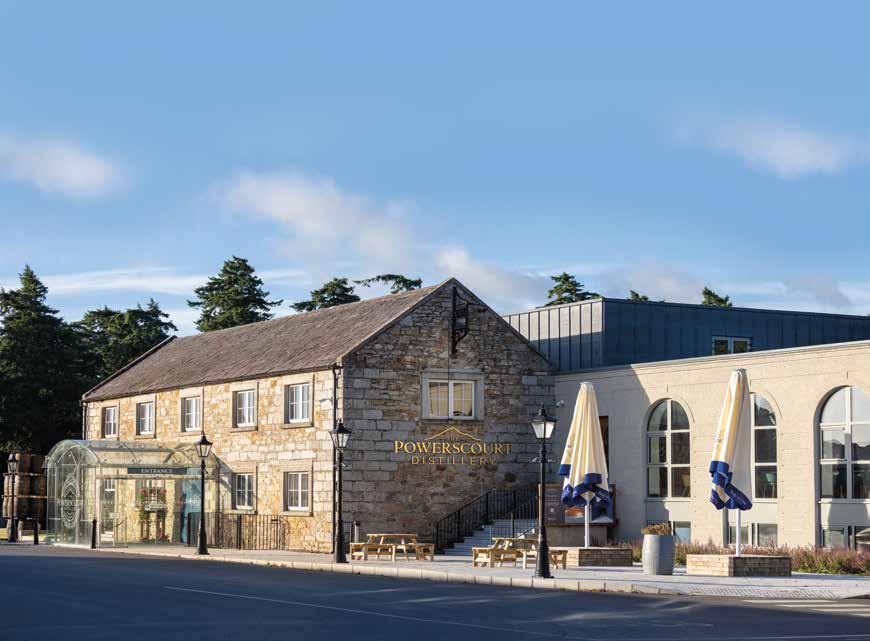




Fercullen Falls from Powerscourt Distillery, Co. Wicklow, Ireland, has been crowned Ireland's ‘Best Blended Whiskey’, solidifying the distillery's status as a premier Irish whiskey producer. Powerscourt Distillery took home a total of nine awards at the 2025 World Whiskies Awards. Committed to sustainability and also named ‘Sustainable Distillery of the Year’, Powerscourt offers an enriching visit for whiskey enthusiasts and eco-conscious travellers alike.


















Book Today: www.powerscourtdistillery.com
Dublin is a swimmer’s paradise and there are many excellent idyllic and safe places to take a dip. Dublin also boasts Blue Flag Beaches at Portmarnock, Seapoint, Portrane and Killiney.
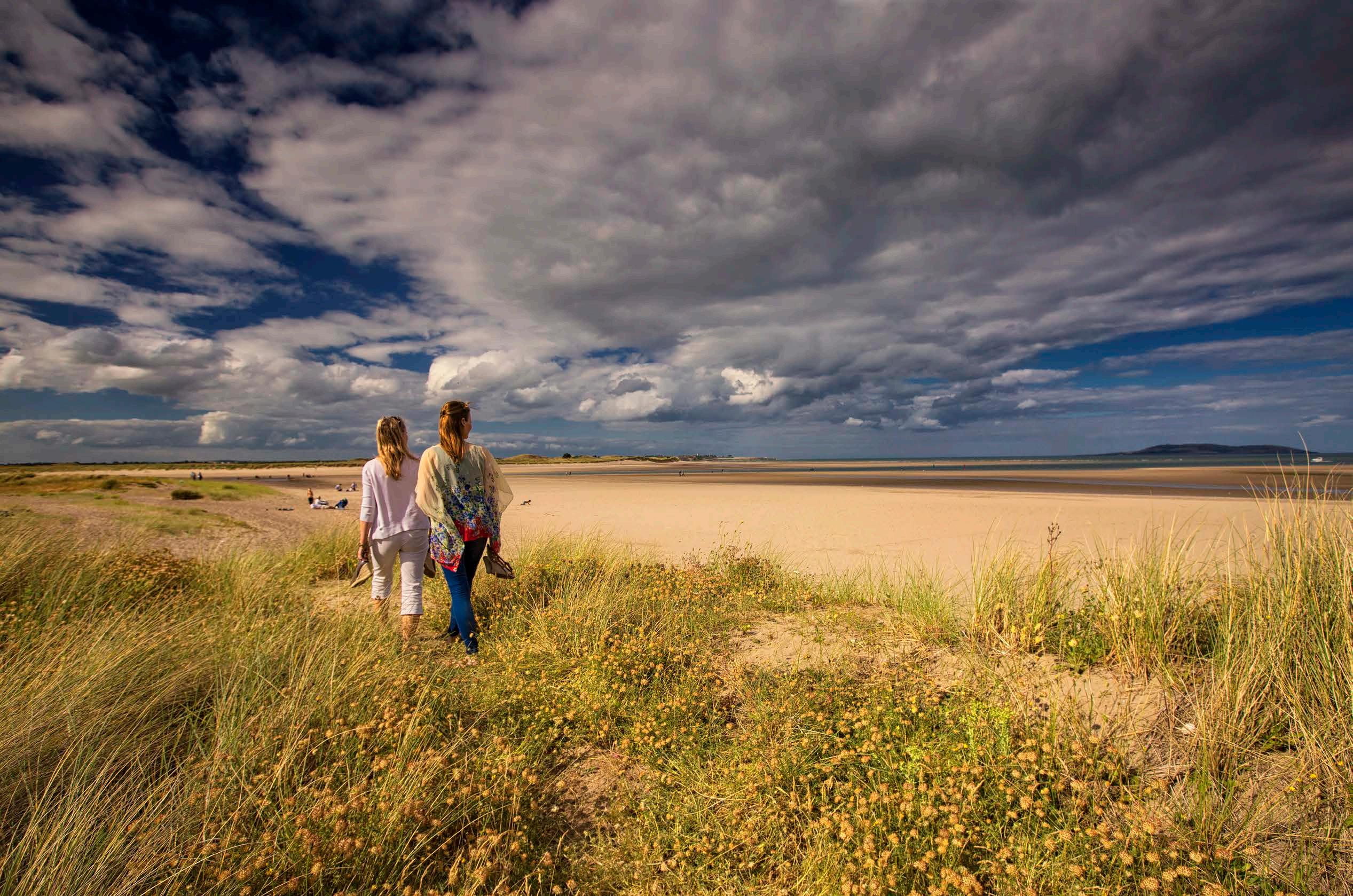
Forty Foot - Sandycove
An exciting promontory on the southern tip of Dublin Bay at Sandycove. It’s one of the county’s most popular bathing spots with a 250-year tradition among swimmers. There are plenty of handrails to help swimmers have a safe and easy access to the emerald sea. This Dublin institution was maleonly and used to be popular with nudists.
Tower Bay, Portrane
Near the Forty Foot, you can view the Tower Bay, which is also near to Lambay Island. Overlooking this idyllic nook is one of the many Martello towers dotted around the coastline.
Dollymount Strand
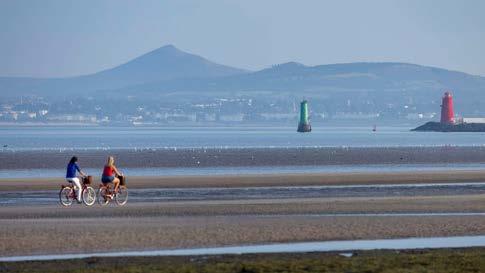
Take a stroll along this wonderful stretch of sand – a favourite haunt of walkers, cyclists and runners. The Strand also takes in amazing views of Dublin Bay. It hosts a nature reserve and also allows for a bit of kitesurfing.
The Great South Wall
A haven for swimmers near Ringsend and the Grand Canal Dock. Close to the famous Poolbeg towers and you can also

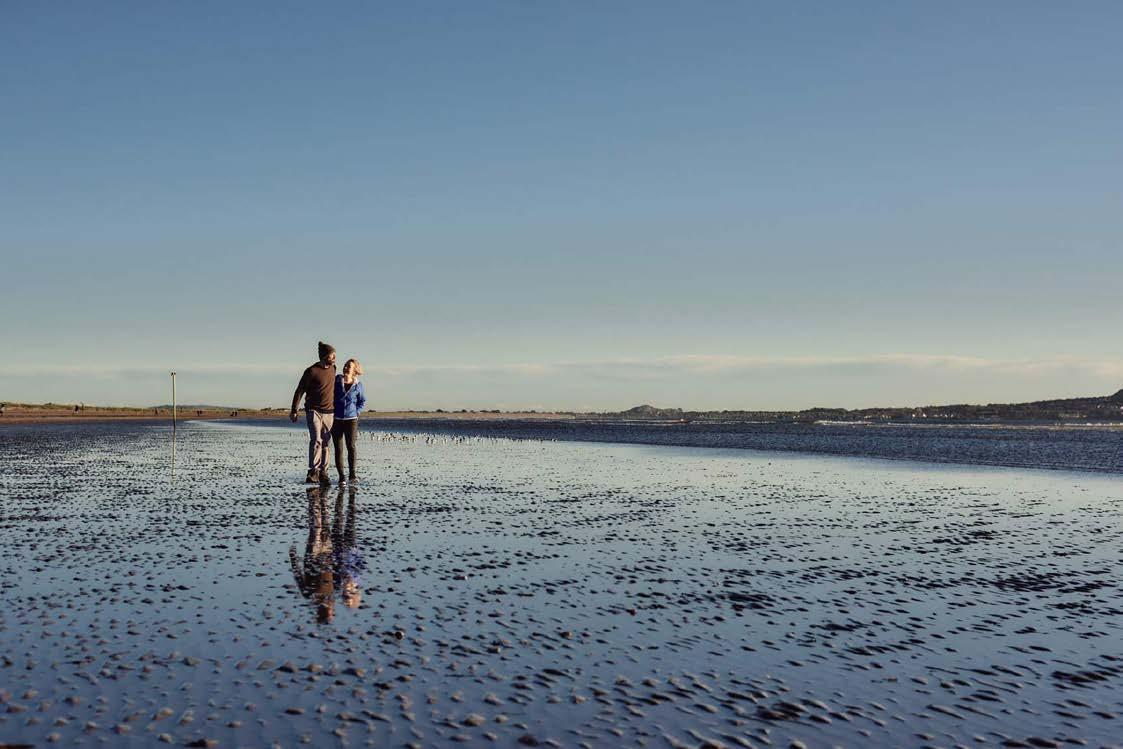

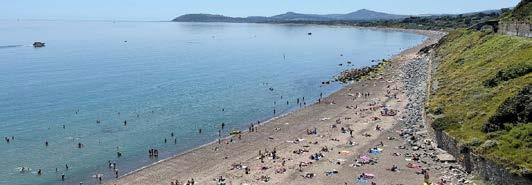
Killiney – White Rock
This is a cool hideaway at low tide. The beach can be stony but between the White Rock Beach and the beautiful Vico Baths, this area is popular. The water depth is good and the
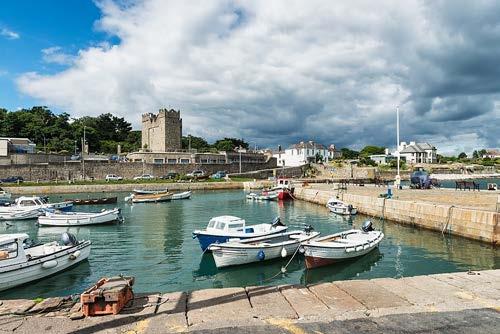
Bullock Harbour
If you wish to jump from high viewpoints, then this is the place for you. Near the Forty Foot, it is a haven for thrillseekers. The harbour is also home to a wonderful scuba diving school.
Burrow Beach
Also known as the ‘Hole In The Wall’ in Sutton and a good stretch of about 1.3km in one of the country’s most scenic area.
The Velvet Strand
This Portmarnock flat sands beach has been kissed by fame when in 1930, aviator Charles Kindgford Smith used the sand as a runway. This brave man’s flight to
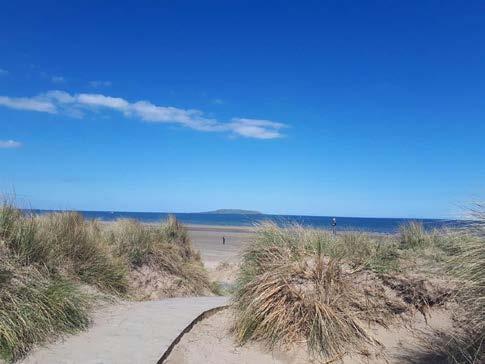
Flying the Blue Flag
Four of the beaches along the coast are of Blue Flag quality.
1. Seapoint – Dun Laogharie/Rathdown 2. Portmarnock/Velvet Strand 3. Bray South Promenade 4. Greystones
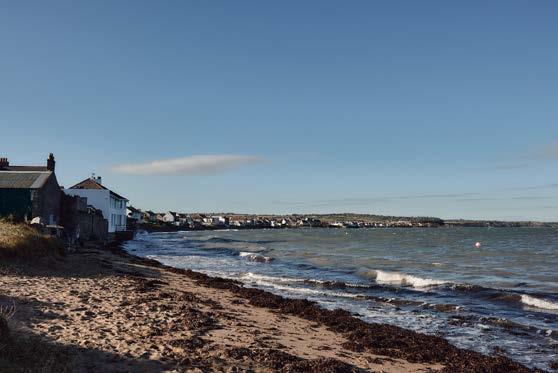
These beaches have achieved the Blue Flag standard – which is an international award of the highest accolade. It recognises outstanding compliance with bathing water quality.
The programme aims to raise environmental awareness and promote sound environmental management of beaches, marinas and inland bathing waters around the world.
The beaches and marinas that have achieved this accolade have complied with strict criteria relating to water quality, safety, facilities for visitors, beach management, environmental education and the provision of information.
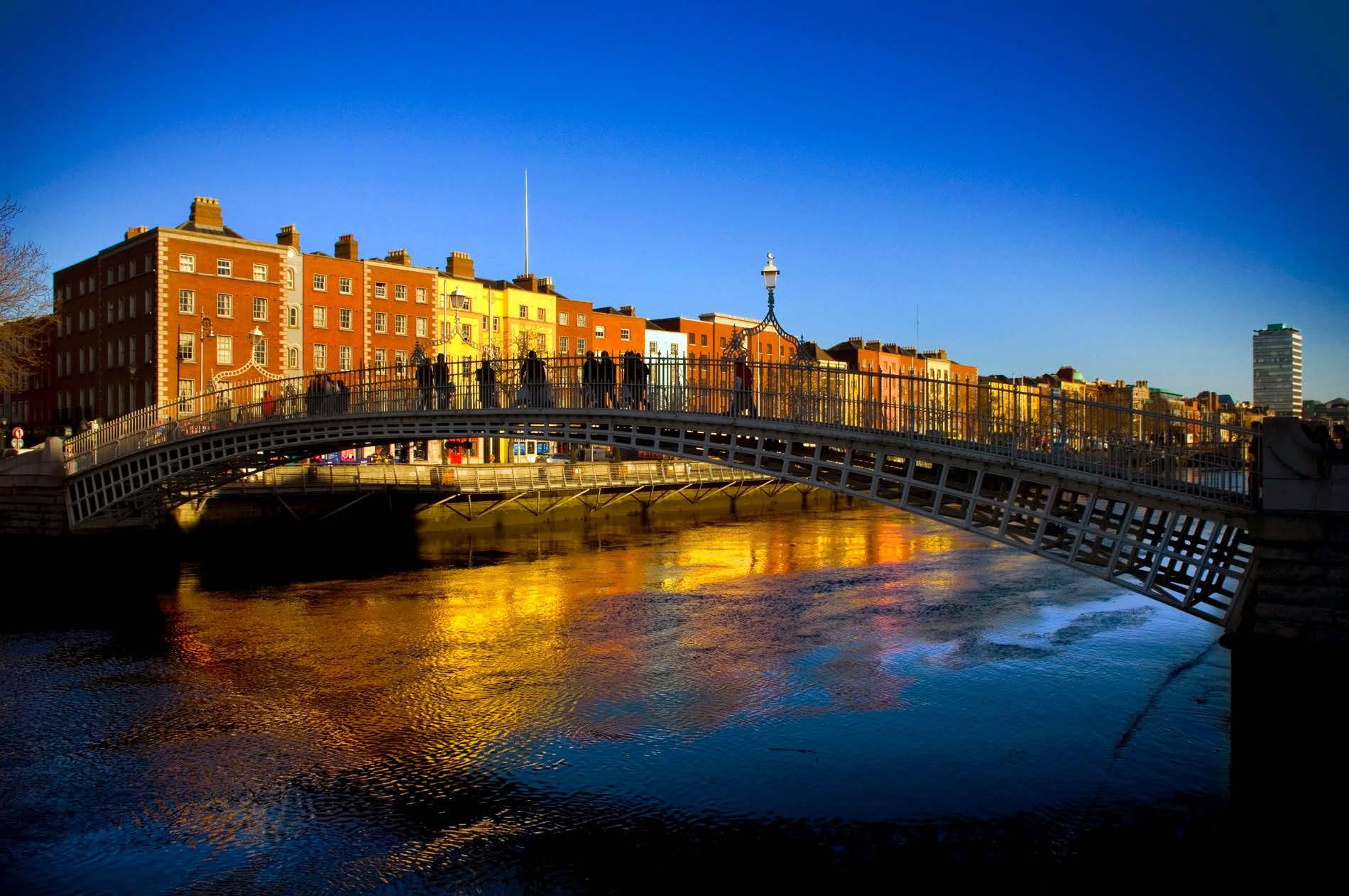
The National Gallery might be the country’s most important art gallery but it doesn’t forget that art is for everyone, not just grownups who like to nod sagely in front of their favourite paintings. There are family-friendly tours of the permanent collection on Sundays that are specially designed for young audiences, as well as a monthly tour that is exclusively for new parents and their babies. There’s a dedicated space in the atrium for kids to tap into their inner artist, while on Sundays there are free, drop-in workshops, were kids are taught the basics of how to draw and paint.
One of the most popular museums in Dublin for families is the Natural History Museum, where prehistoric skeletons and Victorian cabinets stuffed with specimens have been enthralling visitors of all ages since Scottish explorer Dr. David Livingstone declared it open in 1857. The collections in the ‘Dead Zoo’ are divided between the Irish Room (where you’ll find the skeletons of three 10,000-year-old elk), the World Animals Collection (highlights include chimps, apes and human skeletons as well as a 20m-long fin whale found in Sligo) and the Blaschka Collection, made up of glass models of marine creatures. At the Discovery Zone visitors can handle taxidermy specimens and rifle through open drawers.
Entrance to the Chester Beatty Museum and its wonderful collection of ancient books and beautiful artefacts is free but the real draw for families is the varied selection of classes and activities. Kids and adults can learn about a bunch of fascinating subjects from how to draw the perfect horse to the music of the Middle East, while activities range from silk weaving to Qi Gong in the rooftop garden.
In the heart of one of Dublin’s busiest neighbourhoods and right beside Grafton Street, leafy St. Stephen’s Green is made for a family walk or picnic. Once a private park available only to those who rented keys, it was gifted to the city in 1880 and has been free to enjoy ever since. Kids can feed the ducks in the pond or run around in the playground, while the inviting paths and nicely landscaped gardens provide a leafy escape for everyone. As you wander, 15 commemorative statues and memorials dotted about the park add the odd teachable moment along the way.
To round off the day and although it’s not free, check out the options with City Kayaking.
A walk across the famous Ha’penny Bridge provides a handy way to cross the Liffey and an irresistible photo opportunity. But why be ordinary and just walk over it, when you can experience the 200-year-old span in a new way? An extra safe City Kayaking trip gives you the only chance to paddle underneath and see a different side of the capital’s iconic bridges. This leisurely glide down the River Liffey on ‘sit on top’ kayaks is a special family adventure you’ll be talking about for ages.
Courtesy of Visit Dublin.com


Visiting Ireland? Go Wild Magazine is now available on PressReader!
English not your first language?
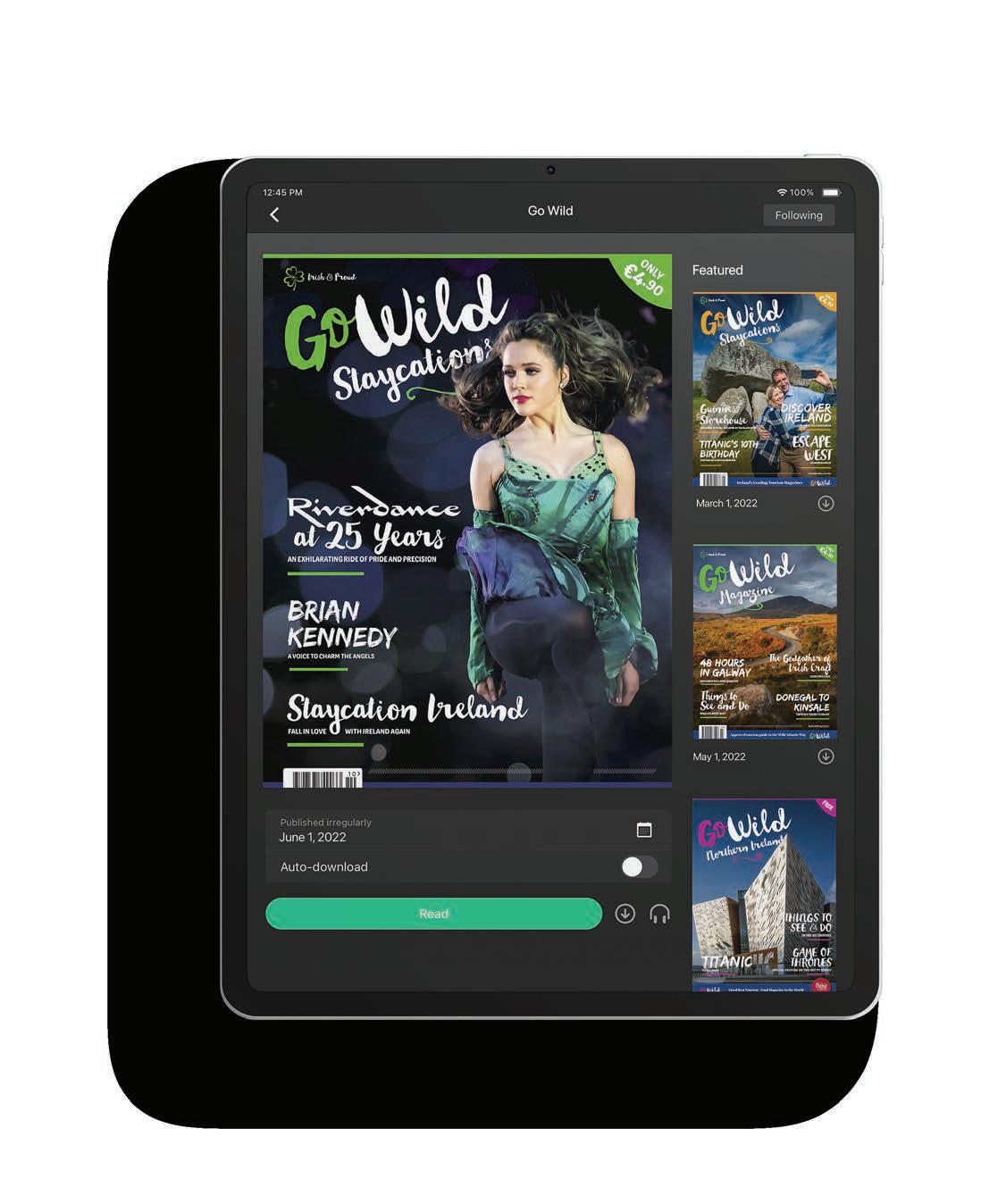
Use PressReader's translation feature to read Go Wild articles in 21 di erent languages!

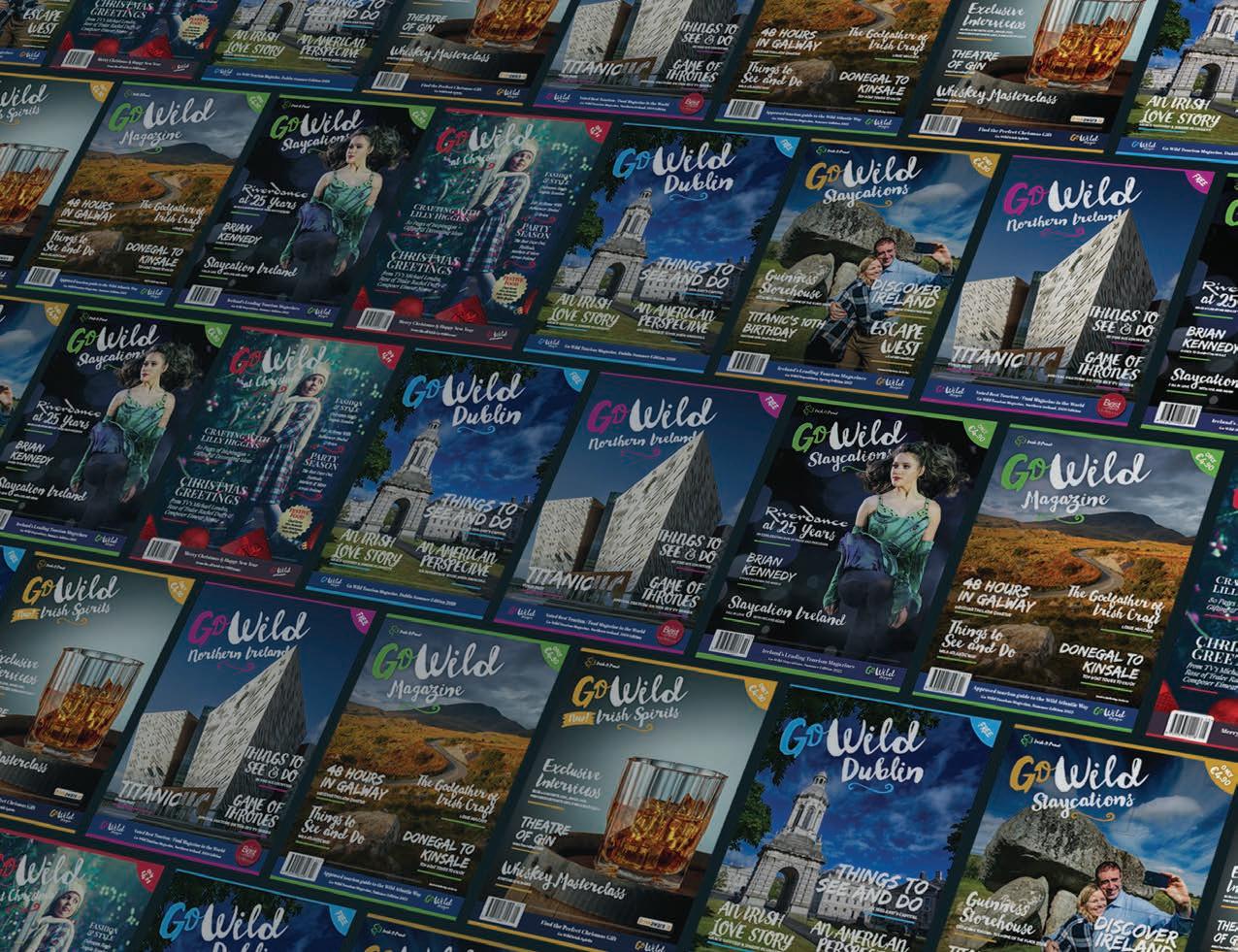
Skerries Mills, in North County Dublin, is a heritage centre made up of two historic windmills, a watermill, a mill pond, mill races and wetlands. The mill complex also houses the Watermill Café, a gallery which showcases local art, and an award winning craft shop.
On the Dublin Coastal Trail, Skerries, with its beautiful beaches and harbour area, is home to three national monuments within the Skerries Mills Heritage Museum lands.
The great five sail windmill capturing views of coastal landmarks, is testament to wind power and human engineering.
The four sail windmill stands on the site of an ancient fort. Climb up this thatch dome mill, which dates from the 16th century and the closure of the monasteries in Ireland, for an inspirational view of industrial heritage. Guided tours are available daily of this hidden gem.
Visitors begin their guided tour of the site in the four storey watermill building,

where they can try their hand at grinding and observe the waterwheel at work. After, enjoy a walk through the cornfield and a tour of two very different sail mills.
The last tour takes place one hour before closing time. Visitors can avail of
free parking and literature is available in Irish, French, German, Italian and Spanish. The café and gallery can be accessed independently.
Skerries Mills is operated as Not for Profit Social Enterprise.
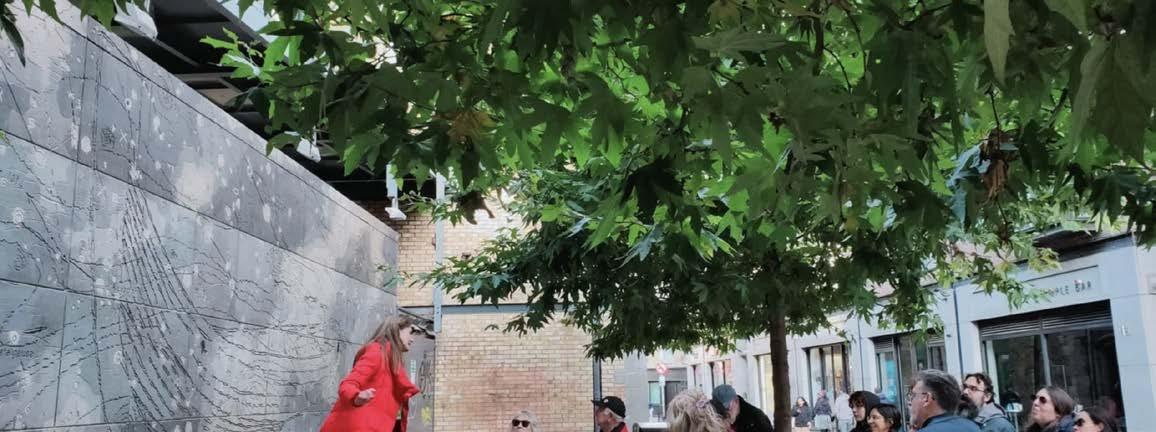
Walk Dublin gives you an easy, fun and themed means of understanding various aspects and eras of history and culture on these Dublin City tours.
Enjoy a guided tour of Dublin City with Walk Dublin. Explore the sights, sounds and history of a very different time in
Dublin. The Dark Ages was when the Vikings founded Dublin, and everything was made of wood. There were constant battles both internally and with the Gaelic Irish, so life was uncertain.
Strongbow arrived and brought Dublin into a larger medieval world. You will see a sunken tower, appreciate the
remains of the ancient Dublin City walls and take part in a game where you figure out who stole the sheep in a Viking court of law.
Call +353866671107 for more info or availability Email ruth@walkdublin.ie



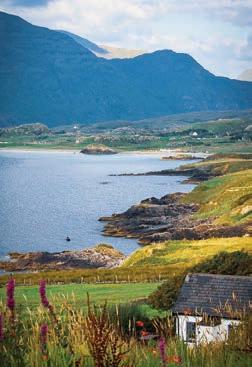



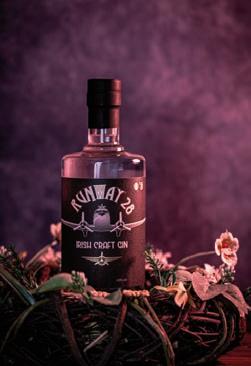


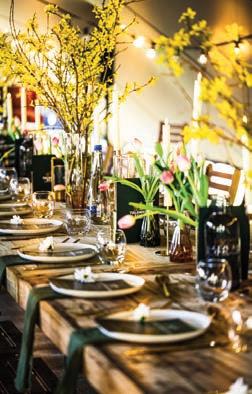
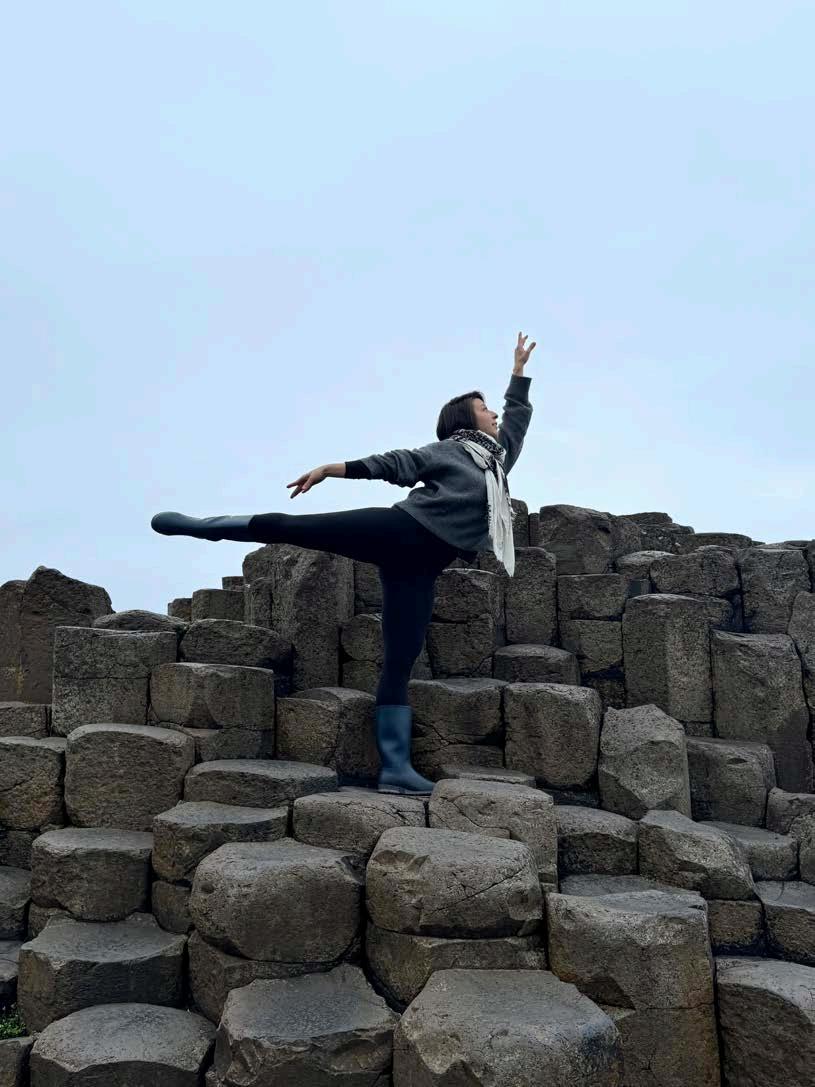
Mickela Mallozzi, the New York-based host and executive producer of PBS travel series Bare Feet with Mickela Mallozzi, chats to Meg Walker about the importance of supporting the arts and why she’ll never run out of reasons to revisit Ireland.
It was 15 years ago that Mickela Mallozzi came up with the concept for her award-winning travel series, where her passion for music, dance and travel would take her all over the world, meeting diverse communities to learn about their cultures, hear their stories and dance together.
I’m catching Mickela while on yet another busy trip to Ireland, this time in the West, a combination she says of “work and leisure”, with a stop in Galway and Dingle in Co. Kerry, to meet with collaborators to discuss the return of Bare Feet Tours, set for May 2026, where visitors get an opportunity to dance with the presenter. She’s also working on another season of her hugely popular TV series.
Season 7 of Bare Feet airs on PBS in the US in May and GoTraveler globally, with the premiere episode set along the northern part of the Wild Atlantic Way, followed by Lafayette, Louisiana, for Festivals Acadiens et Créoles. “Then we have our Accessibility in the Arts episode, featuring professional companies and arts education for people with disabilities, where we ask the question, ‘What does accessibility mean?’” It’s a topic close to Mickela’s heart. “My sister has cerebral palsy, so I grew up in the disability community.”
The last two episodes of the season are set in Northern Ireland, taking in Derry and the Giant’s Causeway before the season finale in Belfast. “We only meant to do two episodes in Ireland and Northern Ireland, but we found so many amazing stories in Belfast we thought, let’s just do a whole separate episode in Belfast.”
The promotional video for Seasons 7 and 8 – a total of ten episodes split into two seasons – shows a teary-eyed Mickela in different settings, leading me to wonder if this was a particularly emotional season. “I cry a lot in the show, just because I feel so connected to people. This season was especially emotional for a lot of reasons. On one occasion, I’m with the Māori people in Auckland, New Zealand, dancing the haka on the pitch of Eden Park. Sometimes I’m emotional just thinking, I can’t believe this is real. Other moments I feel overwhelmed, spiritually and emotionally. I still experience those pinchme moments that I get to continue to connect with people, through the universal language of dance and music.”
Ireland has a its own unique vibe, she admits. “I don’t tend to get too emotional in Ireland because it’s just so much fun.
Everyone’s so joyful and nobody takes themselves too seriously. I did cry once while in Belfast, talking to these two female musicians – Catriona Gribben and Miadhachlughain (Múlú) O’Donnell –who are part of an all-female trad session collective at Cultúrlann, a space where they’re keeping the Irish language alive.” Mickela goes on to explain the connections between Cultúrlann and the Irish hip hop band Kneecap, whose film (“it’s amazing,” says Mickela) has garnered massive praise the world over since its release last year, and just won a BAFTA award. Kneecap bandmember Móglaí Bap’s father, Gearóid Ó Cairealláin, who passed away in December, was an Irish language activist and founding member of Cultúrlann as well as Raidió Fáilte, which began as an Irish pirate radio station. But back to the women who made Mickela weep: “Catriona was talking about growing up not having that opportunity to learn the language, and here was this space where she could, and now it’s a safe space for her to perform with other women.”
Season 8 lands in October and premieres with Cuba, followed by two episodes in New Zealand and finishing with Taiwan.
“In Taiwan, we met with two indigenous communities. I don’t think people realise how many indigenous communities there are worldwide, especially in Asia. We were in Tainan, which is the oldest city in Taiwan. It was colonised by the Dutch, Japanese, then the Chinese so it has all those influences. Taiwan was really beautiful and the food’s incredible.”
Despite Ireland’s relatively small geographic size, Mickela is adamant there are countless things to keep her coming
back. On this latest trip, she met dancer and co-founder of Céim Arts, Jonathan Kelliher. “He’s learned these old steps that have been passed down to him from previous generations. The dances are similar to sean-nós or Irish dancing, but it’s all about the history, the culture, and the stories are always different. I’ve been drawn to Ireland for 14 years, and I always find more stories and new places to explore. I tend to go back to places I feel connected to, and the dance and music is such an integral part of the culture here. And in Belfast, there’s so much new art coming out, and all these cool contemporary artists. Like the ‘tradtronica’ band, Huartan – their music is very pagan influenced. Or Kíla, who started singing in Irish in the ’80s, collaborating with world musicians and not just keeping to strict Irish trad music.”
Mickela’s currently filming Season 9, which will highlight the Gombey Festival in Bermuda, and Bomba, plena and salsa dancing in Puerto Rico. “We also want to show New Orleans’ rich history of dance and music outside of Mardi Gras. Then we’re heading up to the indigenous community in Quebec, near Montreal.”
She’s also returning to Dublin in March to once again co-host the St. Patrick’s Day parade. “I always plan to come back to Ireland – I can’t stay away,” she laughs. When she’s looking to go off-grid and take some time away from the camera, Mickela – the daughter of two Italian immigrants – heads to southern Italy. “My family still has this little farmhouse there. It was our location for the pilot episode of Bare Feet Nobody speaks English, and I’m related to half the town. It’s a special place. I feel connected to the earth there. I’ll walk along the beach and harvest olives from the trees my great-grandparents cultivated.”
I wonder what life lessons she’s learned in all the years she’s been working on the show. “Everybody’s the same, no matter what language we speak, what religion we follow, what colour our skin. Everybody wants the same things – food, shelter, love, family, joy… The beautiful thing about dancing with people is, that comes out. You don’t have to speak the language to understand that.”
There are those lost in translation moments that crop up now and again, she asserts. “It is a unique show, no one does what we do. I’ve never done these dances before and sometimes that message is lost and we’ll show up and they think it’s a performance, but it all works out. Cuba is a beautiful place with warm,
welcoming people, but there are people there who are starving. We didn’t have power for a couple of days, we ran out of gas, we couldn’t find water… There are things happening in that place that are detrimental but people still got together, celebrated and made music.”
What are some of the things she’s most proud of? “The fact that the show is still around, at the calibre it is now… I don’t think viewers understand that we’re a completely independent show. We’re funded through grants, foundations and sponsors. I don’t have to answer to the head of a network. Our Accessibility in the Arts episode – two years ago, when we started
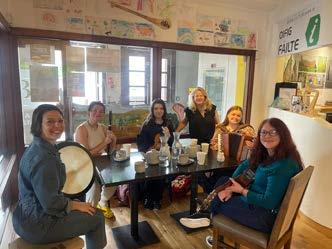
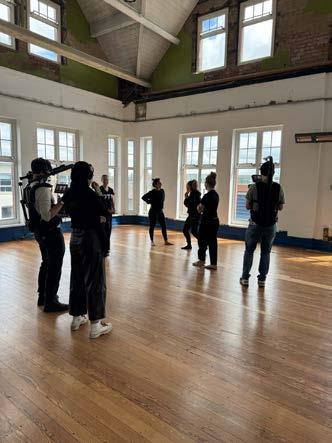
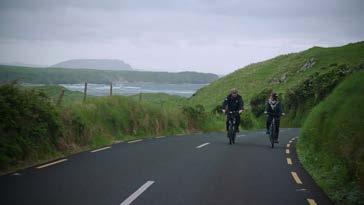
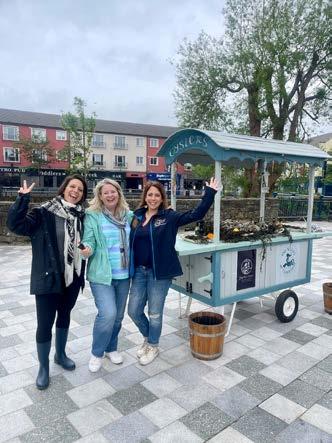
pre-production, no one would have greenlit that. And now, the timing is amazing for it to come out, because of the retraction of DEI in the US. Last season, we did an episode on this Arab-American community in Brooklyn. This was before what had happened in Palestine. Everything takes about two years, so when it came out, it was just after the first major attack. People asked, ‘Are you going to pull that episode?’ And I was like, ‘No, this is a story that needs to come out now more than ever, to show these are real people. They’re families, neighbours, they celebrate joy just like you do, and food, music and dance. I’m really proud of what we do.”
“The arts are invaluable,” she continues. “You don’t have to want to become a professional dancer or musician for the arts to help you become a better doctor, lawyer, bus driver, politician, whatever it may be –just to have a sense of empathy, a wellrounded place in your community and a way of expressing yourself. But unfortunately, in the States, the arts have always been the first thing that’s cut from budgets, and now we don’t know the future of the arts or of public media, of PBS. Things like the New York City Ballet or the Met, institutions that heavily rely on government funding could potentially disappear. It’s scary, and we’re all bracing ourselves. For now, all I can do is continue to try and get the show on air. We have teachers telling us they use the show to inspire students to learn about another culture. That’s what I am hoping to add to this landscape. We’re trying to be part of the solution.”
Mickela’s advice to anyone travelling anywhere is simple: “Whatever you love to do back home – whether that’s dance, cooking, singing, bird watching, photography, running – do that when you’re travelling because you’ll find that community. The reason Bare Feet works is because I love to dance. When I hear music, I can’t keep my feet still. And when I meet people who are as enthusiastic as I am about dancing, there’s this connection. In Ireland, there are local theatres and dance troupes or you can just go to a pub and hear trad music. If you’re on your own, you’re going to make friends. People are so open and willing to chat. I think that’s why I fell in love with this place.”
Season 7 of Bare Feet with Mickela Mallozzi is available to stream from May 1 on the PBS app, PBS.org, Amazon Prime Video and on the GoTraveler app; travelbarefeet.com.

When travellers think of Dublin, iconic landmarks such as the Guinness Storehouse and the Book of Kells in Trinity College often dominate their itineraries. Historian and tour guide, Dr. Kevin McKenna recommends five slightly-lesser known but equally fascinating destinations that showcase Dublin’s rich culture and history
The Chester Beatty is probably one of the hidden gems in the city centre, located just behind Dublin Castle. It has an amazing collection of artefacts. This was formerly the private collection of mining magnate and philanthropist, Sir Alfred Chester Beatty, who died in 1968 and the museum houses manuscripts and other treasures from all over the world. It has everything from the writings of William Blake to the most beautiful copies of the Quran and the dragon robes of Chinese Emperors. There’s also a wonderful café attached to the Chester Beatty, the Silk Road, which serves Middle Eastern and Mediterranean cuisine. chesterbeatty.ie
Marsh’s Library
Dublin’s oldest public library and one of the few remaining 18th century libraries in the world: Marsh’s Library was founded
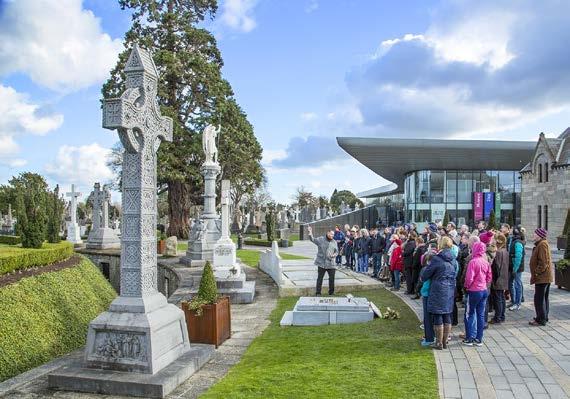
in 1707. Located close to St. Patrick’s Cathedral in Dublin 8, it was built using money provided by Archbishop Narcissus Marsh, so that anyone who could read would have a place to study. Dracula author Bram Stoker was a visitor, as too was James Joyce, who mentions in the library in Ulysses. Its unique atmosphere has remained unchanged for 300-years and it even has its own ghost: a spectral figure of an old man has been seen rummaging through books after midnight, and it’s said to be the Archbishop Marsh himself. marshlibrary.ie
Henrietta Street
For a real sense of going back in time, head northside and stroll up to Henrietta Street. It was first laid out in the 1720s and these would have been the most sought-after properties, lived in by landed families and hereditary peers. The street fell into disrepair in the 19th and 20th centuries, where they became tenements – a census from 1911 shows that there were 835 people living in poverty in just 15 houses on the street. The intriguing history of the street is set
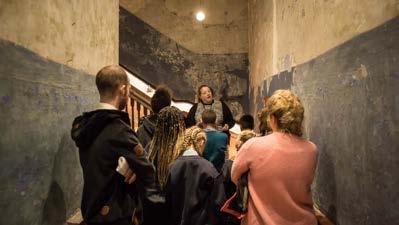

out at 14 Henrietta Street, a museum that captures the thoroughfare’s rise and fall, including replicas of tenement rooms. The King’s Inn pub, at the corner of Henrietta Street and Bolton Street is an excellent spot for a pint and a toasted sandwich. 14henriettastreet.ie
Some of the most notable names in Irish history lie in this, Ireland’s biggest cemetery, just 2.5km from Dublin’s city centre, where more than 1.5 million people have been interred here since 1832. These include the Liberator, Daniel O’Connell; WB Yeats’ muse, the revolutionary Maud Gonne; and leading figure in Ireland’s struggle for independence, Michael Collins. Guided tours are available, there is an impressive interactive garden centre and Glasnevin Cemetery is also home to the world’s largest collection of Celtic crosses. Afterwards, go for a drink in the nearby pub, The Gravediggers, a family-run institution since 1833, renowned for the excellence of its pints. dctrust.ie
Staying in this part of Dublin, the National Botanic Gardens are also in Glasnevin. Founded in 1795, they boost stunning restored historic glasshouses and an impressive array of plants and cultivars. It’s a calm and beautiful space and a great place to while away an afternoon. There’s a lively calendar of events at the Gardens, with talks and walks, lectures, concerts and even a tomato festival. botanicgardens.ie
For more information about Dublin tours and experiences, visit https:// www.contexttravel.com/cities/dublin
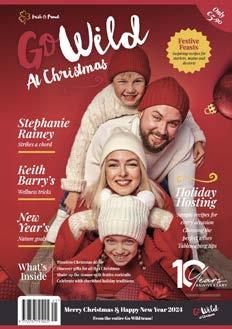

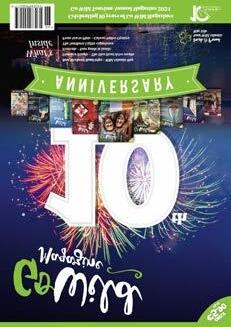
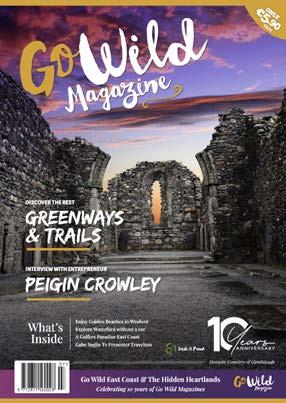
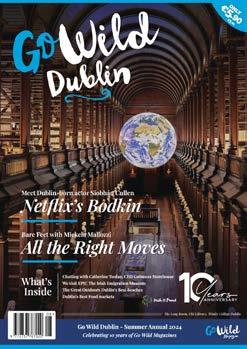


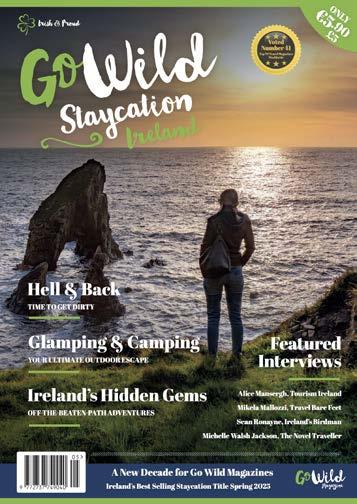
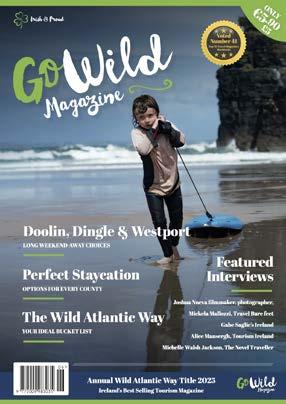
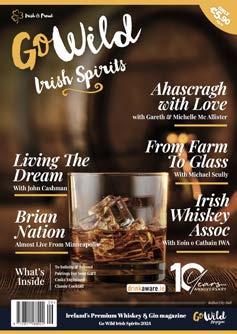
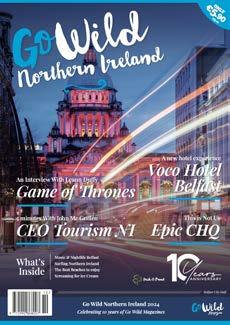
June
July
August

September
October


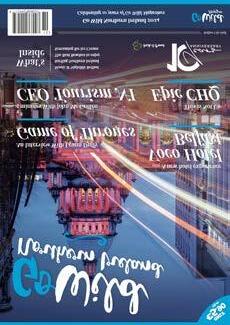
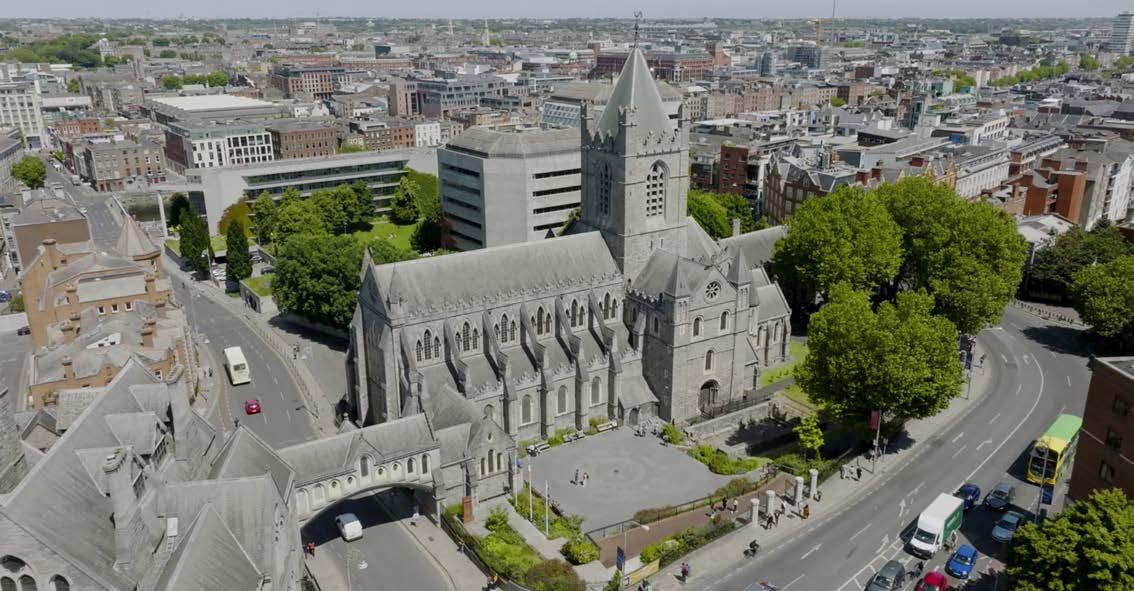
Dublin
wouldn’t be what it is today without the impact of the Vikings, although our ancestors might beg to differ.
The Scandinavian warriors arrived in longboats in 795 AD and ruled with an iron fist for almost three centuries, before being defeated at Clontarf. You don’t have to look too far to see the marks left by these fierce invaders. Christ Church and Wood Quay are the two main Viking settlements in Dublin and a good place to kick off a trip back in time.
A visit to Dublinia takes you right back to Viking times in the capital. See for yourself what life was like onboard a warship and how treacherous their long voyages were. Try on a helmet, handle their weaponry and pick up some of the skills involved in being a Viking warrior.
Sitric Silkenbeard, the Viking King of Dublin, built the original place of worship where Christ Church now stands. A gift to the Irish church from the Vikings, it’s become a focal point for worship, quiet contemplation, education and community events. Though it’s much changed since his day, you can delve into the oldest and largest crypt across Ireland and Britain, marvel at the intricate interior tile work or lose yourself in the stone labyrinth.

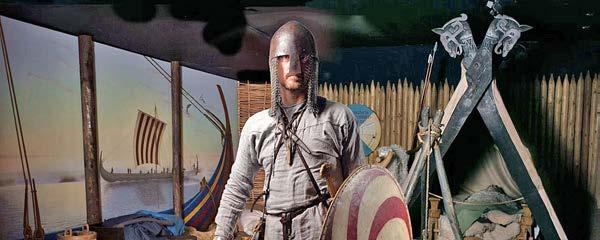
Dublin’s main Viking excavation site came to the nation’s attention in 1974, thanks to building works that uncovered valuable insights into the past. We learned that the Vikings brought us into the monetary economy of Europe with King Sitric’s penny coins, and furthered our knowledge through finds of pottery, armour and weaponry.
Stop off at The Brazen Head to savour some of the city’s best hospitality and soak up the historic surroundings. Said to be one of Ireland’s oldest pubs, it dates back to 1198 when Norman mercenaries and Viking merchants gathered here. You can picture the scene centuries ago as you relax with a pint.
NATIONAL MUSEUM OF IRELAND – ARCHAEOLOGY
At the Viking Ireland exhibition in The National Museum of Ireland you can learn about the Viking Age in Ireland through fascinating artefacts. It represents the finest collection in Europe of excavation finds from an early medieval urban centre.
No visit to Dublin would be complete without a visit to Dublin Castle, or at least a relaxed stroll in the castle’s Dubh Linn Gardens. The original medieval structure was built in 1171 on ground that was a Viking settlement, part of which survives to this day.

Under the castle, the River Poddle flows through a large brick tunnel, which you can walk through with restricted access.
The Steine of Long Stone, or Ivar the Boneless’ Pillar, is a replica of a carved pillar erected by the Vikings in the 10th or 11th century. Ivar the Boneless is of course the same notorious Ivar you may know from the History channel’s Vikings series. You’ll find it at the junction of Pearse Street and College Street.
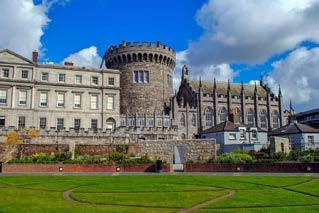
Revolutionize your online store with Brainstorm Design! We create stunning, high-converting e-commerce websites that captivate customers and boost sales.
• Expert web designers & developers
• Custom designs, seamless shopping experience
• Data-driven optimizations for increased ROI
• Exceptional customer support
• Scalable solutions for growing businesses
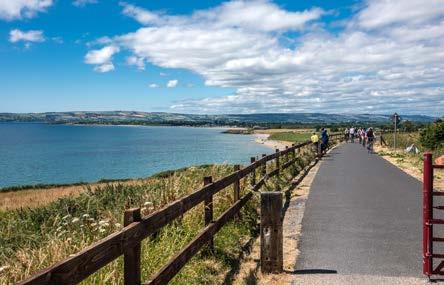



Download


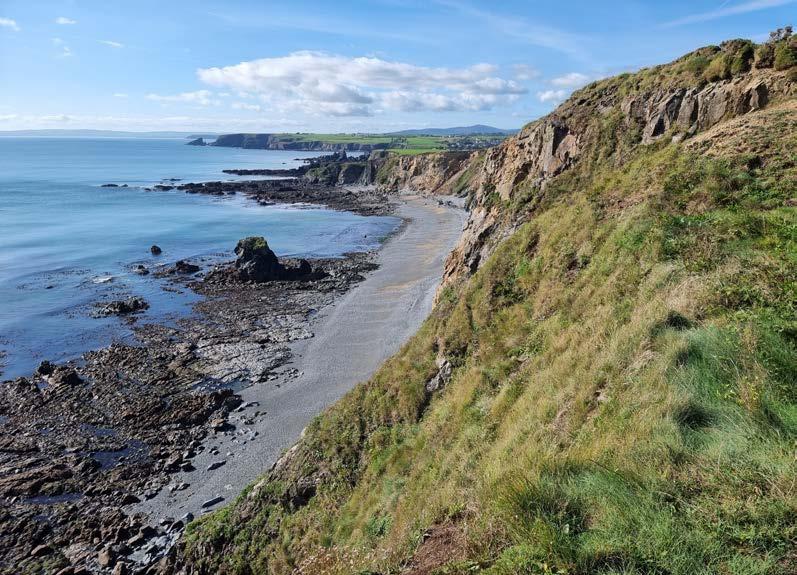





Dun Laoghaire is a beautiful coastal town located in County Dublin, Ireland. It’s known for its stunning views of Dublin Bay and its charming seaside promenade. There are many tourist attractions in Dun Laoghaire that visitors should check out during their stay. Here are some of the top tourist attractions in Dun Laoghaire:
1. Dun Laoghaire Pier:
One of the most popular attractions in Dun Laoghaire is its pier. The pier stretches out into the bay and offers visitors breathtaking views of the surrounding area. The pier is a great place to take a stroll, go fishing or enjoy a picnic.
2. The National Maritime Museum of Ireland:
This museum is located in the former Mariners Church, which is a beautiful building that dates back to 1837. The museum has a wide range of exhibits that explore Ireland’s maritime history, including shipwrecks, fishing and the role of Irish sailors in both World Wars.
3. James Joyce Tower and Museum:
This museum is located in the Martello Tower, which was made famous by James Joyce in his book, “Ulysses.”
The tower is now a museum dedicated to Joyce’s life and works, and visitors can see the living quarters where he stayed with his friend, Oliver St. John Gogarty.
4. The Forty Foot:
This is a popular spot for swimming and diving, and is a well-known landmark in Dun Laoghaire. The Forty Foot is a famous spot where people come to jump into the sea, even in the colder months.
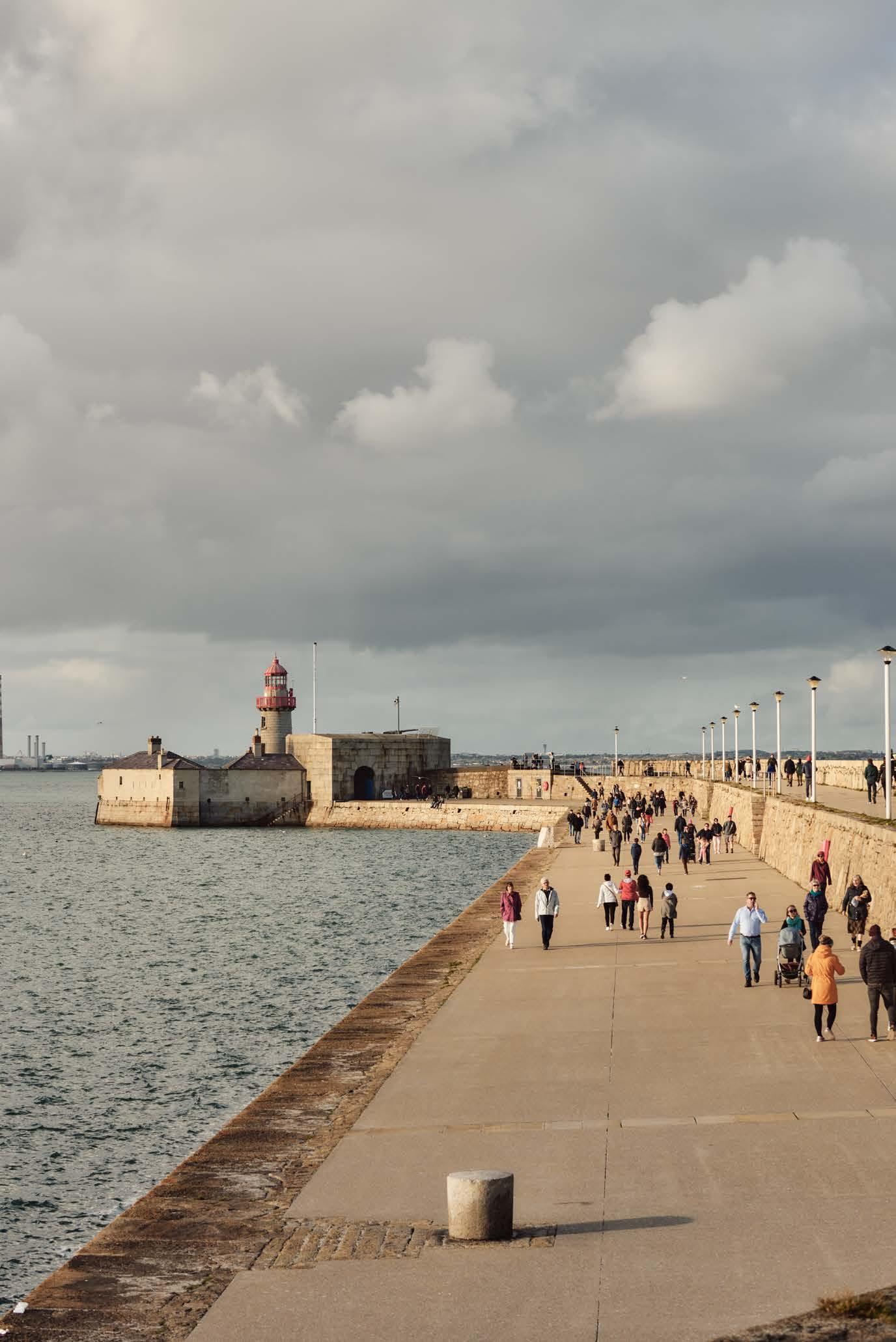
5. The Pavilion Theatre:
This theatre is located in the heart of Dun Laoghaire and offers visitors a range of performances, from plays and musicals to comedy and dance shows.
6. The East Pier:
The East Pier is another popular spot for visitors to Dun Laoghaire. It offers stunning views of the bay and is a great place to take a stroll or go for a jog.
7. The Sunday Market:
Every Sunday, a market is held in People’s Park, where local vendors sell a range of goods, including crafts, jewellery, and food.
8. The Dun Laoghaire Baths:
This newly renovated seafront attraction is a mustvisit for visitors to Dun Laoghaire. The Baths, which originally opened in 1895, have been restored to their former glory and now feature a modern leisure centre, swimming pool and fitness studio.
9. The James Joyce Walk:
For literature lovers, the James Joyce Walk is a mustdo when visiting Dun Laoghaire. This guided tour takes visitors on a journey through the town, visiting locations that were significant to Joyce’s life and work, including the Martello Tower and the Forty Foot.
Dun Laoghaire is a fantastic destination for those seeking a mix of history, culture and natural beauty. With its picturesque coastline, charming parks and rich cultural heritage, there is something for everyone to enjoy in this vibrant and welcoming town.



Imbued with tradition, but with an eye to the future, Irish design is highly regarded on the global stage. Whether your tastes are for textiles, ceramics, art, glassware or furniture, these independent retail spaces offer Irish-designed products that blend heritage, craftsmanship, innovation, and sustainability.
Article
Built in the 17th century, Powerscourt Townhouse in Dublin city centre was once the home of the 3rd Viscount Powerscourt, where he would stay when not at his Wicklow estate. Today, it’s the location of collection of some very chic shops, including independent contemporary home interiors store, Article, which is based in what was formerly the Viscount’s dressing room. From ostrich feather dusters to delightful pieces for your tabletop, it’s a mix of practical and playful items, many of them Irish designed.
Powerscourt Townhouse, South William Street, Dublin 2; article.ie
Irish Design Shop
Jewellers Clare Grennan and Laura Caffrey set up Irish Design Shop in 2008 as a go-to for Irish design-led products that combine traditional methods and new techniques. Here, shoppers will find items like beautifully embroidered linen napkins; hand-woven willow baskets; hand-cut Irish crystal tumblers and sheepskin booties made in Co Sligo. Some years ago, the duo added another floor to the shop which showcases their in-house jewellery collection, Names, handmade in their workshop and finished on the shop floor. There’s also Áras, a range of affordable and practical homewares exclusive to the shop. 41 Drury Street, Dublin 2; irishdesignshop.com
Weaving stories from the past into modern aesthetics, Irish design offers quality and authenticity. Here’s where to find the very best of products in Dublin from Irish makers and craftspeople.
This concept store is where discerning Dubliners shop for design pieces from both local and international designers. There are three outlets in all: the flagship store on Drury St, which also has a much-lauded café; a children’s store, Barn just around the corner on Exchequer St, as well as its newest addition, Life, also on Exchequer St, which offers a curated selection of wellness pieces for a balanced, healthy lifestyle. Need-to-know Irish brands available at Industry & Co include Copperfish, offering lighting crafted from salvaged and storm-fallen timber; Irish fragrance company Field Day, which
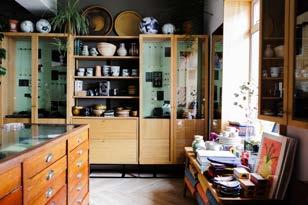
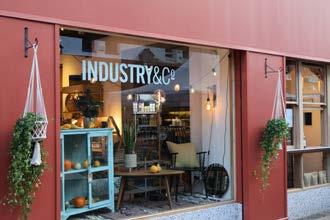
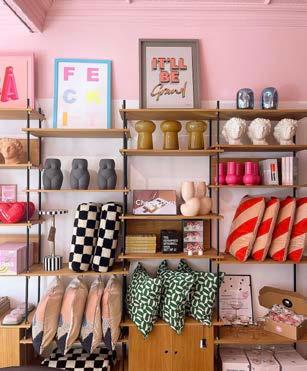
celebrates Irish wildflowers, and especially weeds, and contemporary fine and fashion jewellery label Scribble & Stone.
Home & Café, 41 A/B Drury Street; Life, 14 Exchequer Street; Barn, 21 Exchequer Street, All Dublin 2; industryandco.com
April & The Bear
April & The Bear owner Siobhan Lam has an eye for eclectic and interesting homeware, which is fully evident at her store in Rathmines. Take your pick from quirky art prints to stunning ceramics and vibrant cushions and throws, and carefully curated furniture pieces. If you’re looking for gifts that are Irish but non-traditional, April & The Bear have great options, including Poolbeg Lighthouse candles, and a graphic art piece reading ‘Grá’ or ‘Love’ in Irish. 213 Rathmines Road Lower, Rathmines, Dublin 6; aprilandthebear.com
Temple Bar is generally associated with a lively night life but it’s also home to some brilliant shops, including Design Lane. This co-operative retail space showcases the work of over 40 designers and makers, and offers everything from art to knitwear, candles and ceramics, as well as an excellent and jewellery selection. The focus is on small independent local brands across craft, design and art – also, check out the amazing millinery offerings here –and it has a wide range of unique products, handmade in Ireland. On any given day, if you pop in, you’ll have the chance to talk to some of the designers who retail here, and if you’re looking for a thoughtful, Irishdesigned and beautifully crafted gift to take home, undoubtedly you’ll find it here. Unit 2, Old City Pudding Row, Essex St. West, Dublin 8; designlane.ie







Roe & Co reimagines Irish whiskey through immersive experiences in Dublin 8. Recently awarded “Best Tourist Attraction” and “Visitor Attraction of the Year,” this innovative distillery blends tradition with innovation. Hands-on blending and cocktail classes champion a modern approach, pushing boundaries and redefining Irish whiskey with fresh perspectives.

Escape the city bustle and discover the idyllic charm of Newbridge House and Farm this summer. Explore a beautifully preserved Georgian mansion, wander through vibrant gardens, and meet adorable animals on our working farm. It’s a perfect day out for all ages, offering a unique glimpse into Ireland’s rich heritage and countryside. It’s just 25-minutes from Dublin City Centre and only one stop on the DART to beautiful Malahide.


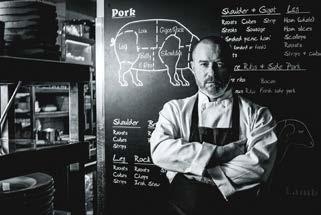
For 35 years, Head Chef Stuart Ross has been the driving force behind Texas Steakout, one of Ireland’s oldest and most beloved steakhouses. Since its inception, Stuart has crafted exceptional dishes using only the finest local ingredients, partnering with trusted Irish suppliers to ensure every plate reflects quality, tradition, and taste. Stuart Ross: The Culinary Heart of Texas Steakout.
Riverdance 30 – The New Generation celebrates the show’s incredible 30th year milestone, with a special anniversary tour, which comes home to the Gaiety Theatre for the summer season. The spectacular production rejuvenates the much-loved original show with new innovative choreography and costumes and state of the art lighting, projection and motion graphics showcasing the new generation of exceptional performers, all of whom were not born when the show began 30 years ago.
SHOWS: Tuesday to Saturday at 7.30pm, Sunday at 5pm. Matinee Saturday at 3pm.
VIP Experience: Tuesday, Friday and Saturday at 6.30pm Tickets available on TICKETMASTER.COM or at GAIETY THEATRE BOX OFFICE, South King Street, Dublin D2

You won’t find leprechauns or pots of gold at EPIC, but you’ll discover that ‘what it means to be Irish’, expands far beyond the borders of Ireland. There are stories of Irish emigrants who became scientists, politicians, poets, artists and even outlaws, all over the world. If you’re one of the 70-million people worldwide who claim Irish heritage and ancestry, this museum will feel like the start of a homecoming, connecting you and your story to so many others.
Step behind the scenes at Dublin’s iconic Abbey Theatre with an exclusive guided tour. Uncover the rich history of Ireland’s National Theatre, discover portraits of legendary actors and directors, and stroll the very corridors once walked by literary giants. Marvel at Michael Scott’s 1966 Magic Box design and explore a treasure trove of props that have brought 120 years of stories to life. Visit abbeytheatre.ie for what’s on this March
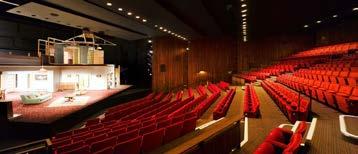
Step into a realm of wonder just a stone’s throw from Dublin’s heart, on the Fingal coastal trail and in a heritage coastal village. Malahide Castle & Gardens isn’t just a landmark; it’s a captivating journey through centuries. From its storied castle walls and vibrant botanical gardens to the enchanting Fairy Trail and exotic Butterfly House, it’s a truly unmissable Dublin destination offering magic for all ages, in all seasons.

Discover the tales of heroes and villains at Ireland’s infamous prison island.
Located in the heart of Cork Harbour, Spike Island holds a significant place in Irish history, having served as a military fortress and notorious prison.

Prepare to be transported back in time as you navigate through centuries of Irish history. Join a guided tour with one of our expert storytellers, explore interactive museums, exhibitions and embark on scenic walking trails.

Did you know that Beshoff Bros only use the freshest fish & finest potatoes?
We are proud to be able to provide our customers with fresh fish from the cold clean waters of the North Atlantic, caught under ‘European Fishing Policies’ which replenish stocks and guarantee sustainability and traceability.
Our fresh potato ‘Real Chips’ are grown by environmentallyfriendly farmers using first-class agricultural practices. We only use the best vegetable oil available and a range of super-thin batter to ensure the tastiest and healthiest fish n’ chips on both sides of the River Liffey!
Glencolmcille
Folk Village is a thatched cottage coastal village in South West Donegal.
Established in 1967, it tells the story of Glencolmcille through the ages.
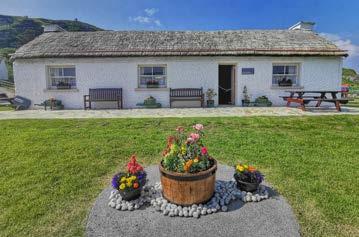
Original artefacts are on display in the cottages, which were constructed from stone taken from period cottages throughout the parish.
The tours are currently self-guided and are available in more than eight languages. There are three audio-visual programs that tell the story of Father McDyer, the local fishing tradition and cinefilm from the 1950’s.
They have adapted a beautiful outdoor dining area and have a great family orientated eating area within this, with a safe area for children to play. They are world renowned for their beautiful vegetable soup and Irish breakfast.
On special occasions you can Meet local crafts people and have a go at making a St. Brigid’s Cross or mending a fishing net.

Shannonferry Group Ltd. operates the Killimer-Tarbert Car Ferry linking the main tourist routes of Ireland’s Shannon Region on the “Wild Atlantic Way” from Killimer, Co. Clare to Tarbert, Co. Kerry. With scheduled sailings every day, this pleasant twentyminute journey across the Shannon Estuary will save 137 km from ferry terminal to ferry terminal, providing a staging point for the many attractions of Clare, Kerry and adjoining counties.
On disembarkation, enjoy the majestic scenery on either side of the Shannon Estuary from Killarney & The Dingle Peninsula to the Burren and the famous Cliffs of Moher.
You can rely on Dublin Express to get you between Dublin Airport and Dublin City with 120+ services running every day. All while enjoying a premium onboard experience with comfortable seats and a generous luggage allowance. Not to mention free onboard wi-fi and charging ports for all your devices.

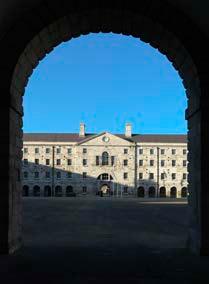
The National Museum of Ireland is home to the world’s greatest collection of objects related to Irish history and heritage. The collection spans from prehistoric times to the present day and is on display across our museums, two in Dublin and one in Co, Mayo. Exhibitions explore a diverse range of themes from Bronze Age gold to 20th-Century revolution and contemporary design. While our Natural History Collection is relocated, as we commence the first phase of refurbishment of the Museum at Merrion Street, you can engage with all your favourite specimens and programme at the Dead Zoo Lab in Collins Barracks, opening summer 2025. The main aim of the National Museum of Ireland is to preserve, share, explore and celebrate Ireland’s history and culture and its place in the wider world. Join the conversation with guided tours, lectures, creative workshops and more. Admission is free. Please see www.museum.ie for updated information.
Come and visit the Connemara Coast Hotel this year and enjoy a wonderful break with family and friends along the Wild Atlantic Way. Set in a beautiful part of Ireland, offering stunning views of the Wild Atlantic Way, it is the perfect base for those looking to relax by the sea and explore the picturesque surroundings. Check out www.connemaracoast.ie

Rock out in the heart of Dublin! Take a guided tour through Irish music history at Ireland’s most influential music complex. Hear stories and see iconic memorabilia from U2, Sinead O’Connor, Rory Gallagher and then explore the Thin Lizzy Exhibition. Plus, step into the rehearsal room and channel your inner rockstar!

The National Wax Museum Plus in central Dublin offers a fun, interactive experience for all ages. Explore Irish history, meet famous faces in wax, and dive into zones like Science & Discovery, the Chamber of Horrors, the Mirror Maze and more. A must-see attraction blending education, entertainment and selfie-worthy moments!
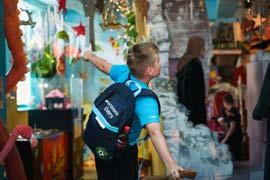
An elegant bolthole on Kerry’s wild and unspoilt Atlantic Coast. In keeping with its origins as the town residence of the Earl of Shelbourne, The Lansdowne Kenmare is a refined, calming retreat set in the heart of the pretty heritage town of Kenmare. Surrounded by Kenmare’s bustling boutiques, quirky art galleries and traditional Irish pubs, it’s been reimagined today as a stylish town hotel where you can expect a traditionally warm Irish welcome.

Join us at Silver Works in the heart of Dublin for a fun, handson jewellery-making workshop. Craft your own silver ring or charm, no experience needed! It’s a unique way to meet new people, to spend time with friends or family and leave with a special keepsake you made yourself.

Immerse yourself in Irish culture with a visit to the GAA Museum - Choose from the Croke Park Stadium Tour where you’ll discover the history of Ireland’s national sports or learn all about Dublin from 17-storeys high on the Kellogg’s Skyline Tour. Both tours include GAA Museum access.

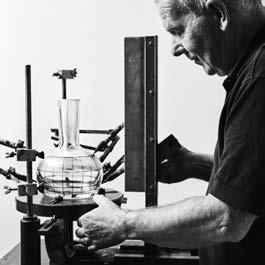
Each Waterford piece is an exquisite combination of artistic inspiration and technical prowess; capabilities honed and perfected over 240-years of expert craftsmanship. At House of Waterford you can experience the rich heritage, proud passion and elite craft that lie behind every Waterford creation. Discover the personalities, techniques and artistry that go into producing Waterford’s beautiful luxury crystal.
“Discover riverside charm at The Landmark Hotel in Carrickon-Shannon, the perfect base for your Hidden Heartlands adventure. Overlooking the River Shannon, this family-run hotel blends boutique-style bedrooms with award-winning dining and heartfelt hospitality. Explore nearby walking trails, visit local distilleries or simply relax and watch the boats go by. Whether you’re escaping for a romantic break or a foodie weekend, let your journey begin at The Landmark”

Are you looking for the perfect place for your upcoming nuptials? Then look no further than Carrygerry Country House. Set in the peaceful, idyllic countryside of County Clare, located just minutes from Shannon International Airport, Carrygerry Country House offers you a warm, elegant, classic setting for your perfect wedding day. 061 360500
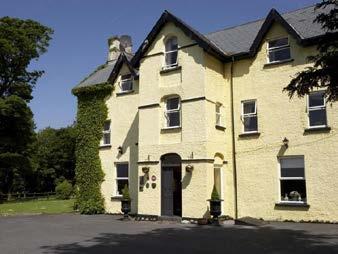

Experience a city sightseeing tour with a difference. Hop on board a vintage bus and take in the sights of Dublin while indulging in Afternoon Tea and listening to the Irish art of storytelling with live onboard guides. This is Afternoon Tea the Irish Way.
This summer, unlock a world of epic storytelling at the Game of Thrones Studio Tour. Step onto authentic sets, explore iconic props and costumes and uncover the secrets behind a global TV phenomenon. Ready to journey beyond the screen and into the heart of the action? Book your adventure now!

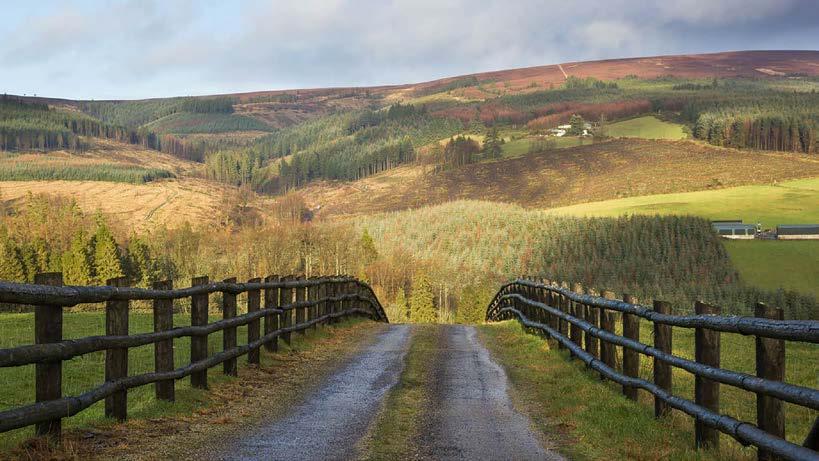

The magnificent Dublin Mountains are the city’s natural playground, with 43km of mountain trails, country paths and rural roads in easy reach of the city centre. Running right through, you can follow the Dublin Mountains Way for some of the most scenic viewpoints and wonderful bits of forest in the county. Choose from easy strolls or challenging hikes and enjoy the outstanding views of the city and lush green countryside.
Shankill
Distance: 6km one way, time: 1.5 – 2 hours
If you fancy a short walk that takes in wonderful views of the city and the sea, head to the Dublin Mountains Way and start your trek in Shankill village. Hike through the leafy forests at Rathmichael Wood and Carrickgollogan Wood, see the old Lead Mines Tower and take a trip down the orange marked path to enjoy the peace of Barnaslingan Woods. You’ll emerge at the stunning ‘Scalp’ viewing point, where you can take a moment to drink in the incredible views.
Keep an eye out for badgers, rabbits and birds along your way and spot magnificent trees including the Noble Fir, Scot Pine, Birch and Larch. To return, you can walk back the way you came, or take the 44 bus (weekdays only) from the Enniskerry Road.
Getting there: It takes about 40 minutes to get to the starting point from the city centre. Hop on the DART at Connolly Station to Shankill and start your hike from Brady’s of Shankill, a pub in the village.
Ticknock
Distance: 8km, time: 2 – 2.5 hours
For a more challenging hike, take on the trail at Ticknock Forest. Start from the car park off the R113, or if you’re arriving by bus, begin at Carthy’s Green just off the Ballyedmonduff Road in Ballinteer. Hike through a stunning forest of Japanese Larch, Sitka Spruce, Scots, Monterey, and Lodgepole Pine and spot the wonderful fauna along the way.
Soak up the spectacular views as you climb Three Rock Mountain and spot the triple rock formations that give the mountain its name. Once thought to be man-made, these formations are actually the result of natural weathering. Continue on to the Two Rock moorland and discover the romantic Fairy Castle ruins. At 537m, this cairn is the highest point of the Dublin Mountains Way – look out at the dramatic views of the city below.
Get back on the trail and head northwest towards Tibradden Mountain to find another cairn before walking a further 30 minutes to complete the trail.
Getting there: Jump on the green Luas line to Dundrum and catch a 44b bus (weekdays only) straight to Ballinteer.
Glenasmole and Tallaght
Distance: 6km, time: 1.5 - 2 hours
This route is considered the final stage of the Dublin Mountains Way. Start at Cruagh Wood and head on to Featherbed Forest, where you’ll emerge at Piperstown Hill. Admire the gorgeous Glenasmole Valley, an area of conservation along the River Dodder. Here you’ll note the Bohernabreena Waterworks, which were built in 1887 to supply water for the mills along the river. Spot the whooper swans, moorhens and little grebes that call the river home and follow the path to Kiltipper Park. From here, look back and check out the incredible views of the Dublin Mountains. Continue on to Sean Walsh Park in Tallaght where a map board marks the end of the Dublin Mountains Way.
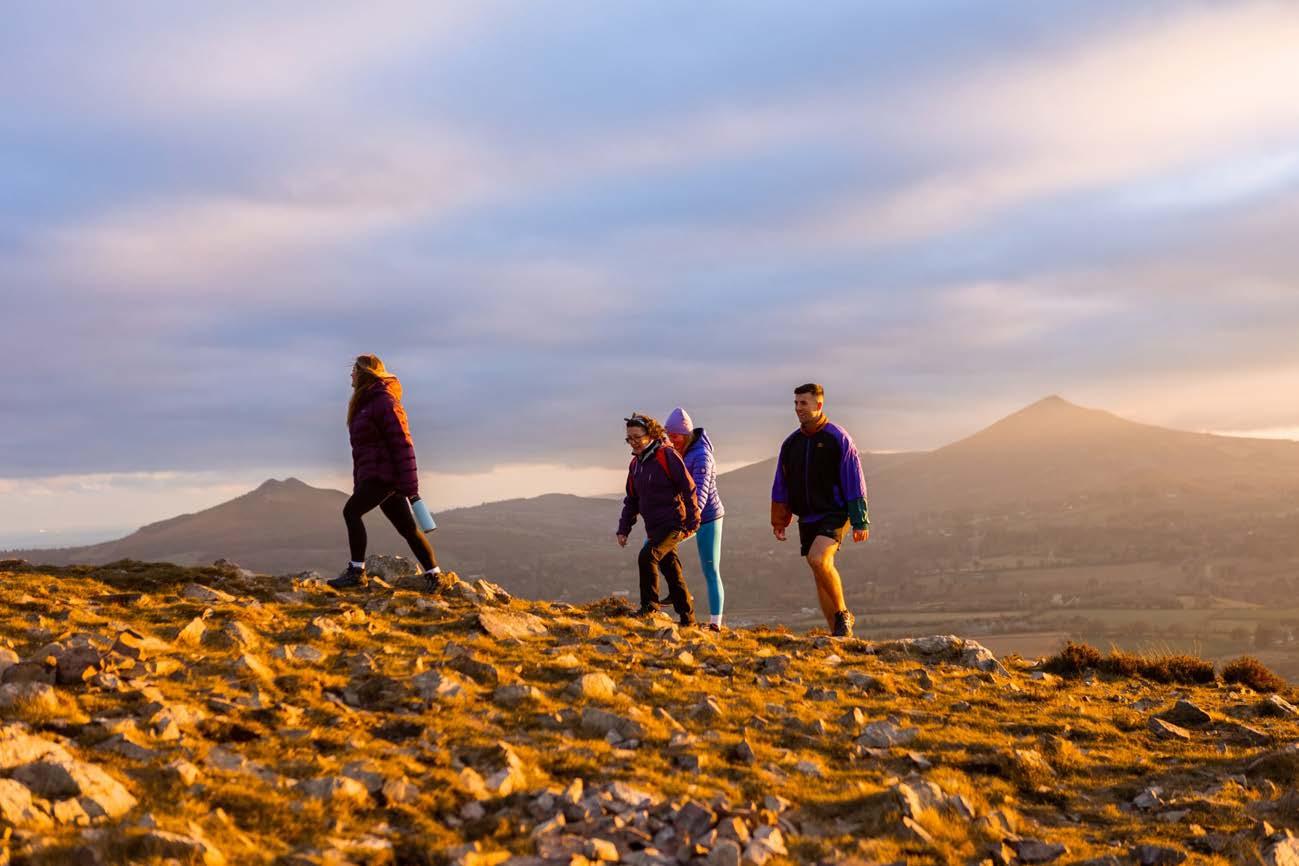
Getting there: If you want to start at Cruagh Wood, you’ll need to drive and park at the Cruagh Wood car park. If travelling by public transport, you’ll need to reverse and double the walk by starting at Sean Walsh Park, a five minute walk from the Tallaght Luas stop.



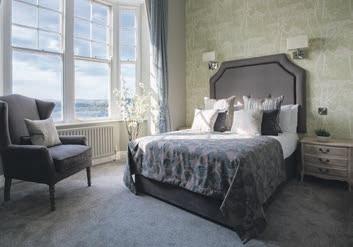
Treat Your Senses!
In a place that drinks in the wild Atlantic sea air. With a chef whose food celebrates and elevates all that is fresh and hyper local.
With a spa experience that fuses the restorative powers of the sea with holistic healing for body and soul. With a rich history, connected to literary and political great names.
And a sense of classic, welcoming charm that wraps you in its warm embrace from the moment you arrive. All at the gateway to the beautiful Beara Peninsula, on West Cork’s Wild Atlantic Way.
Treat yourself to a stay at Eccles Hotel and Spa in Glengarriff.
...even if a dish reads simply on the menu, it will be a work of art on the plate.”
Lucinda O’Sullivan, Sunday Independent




